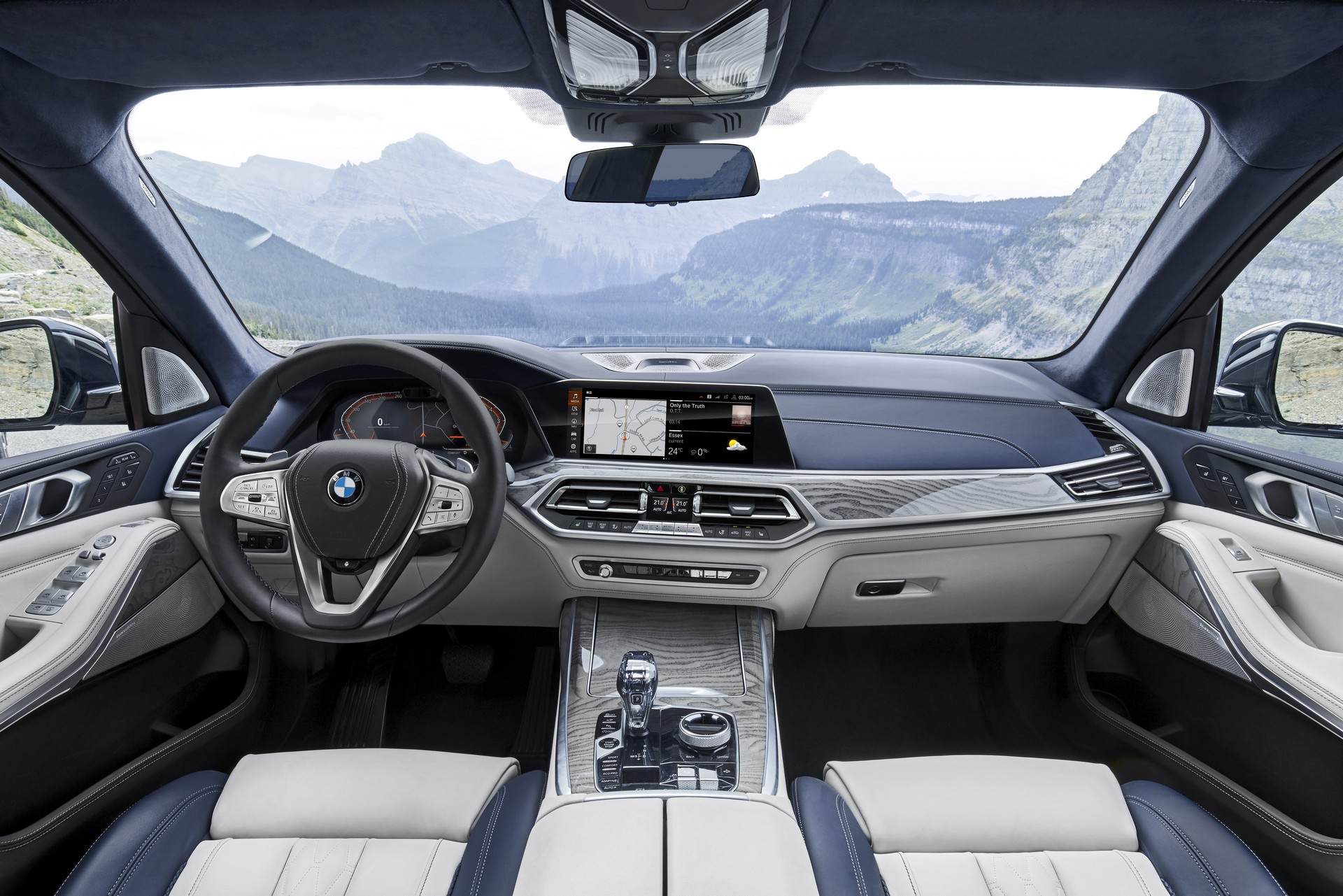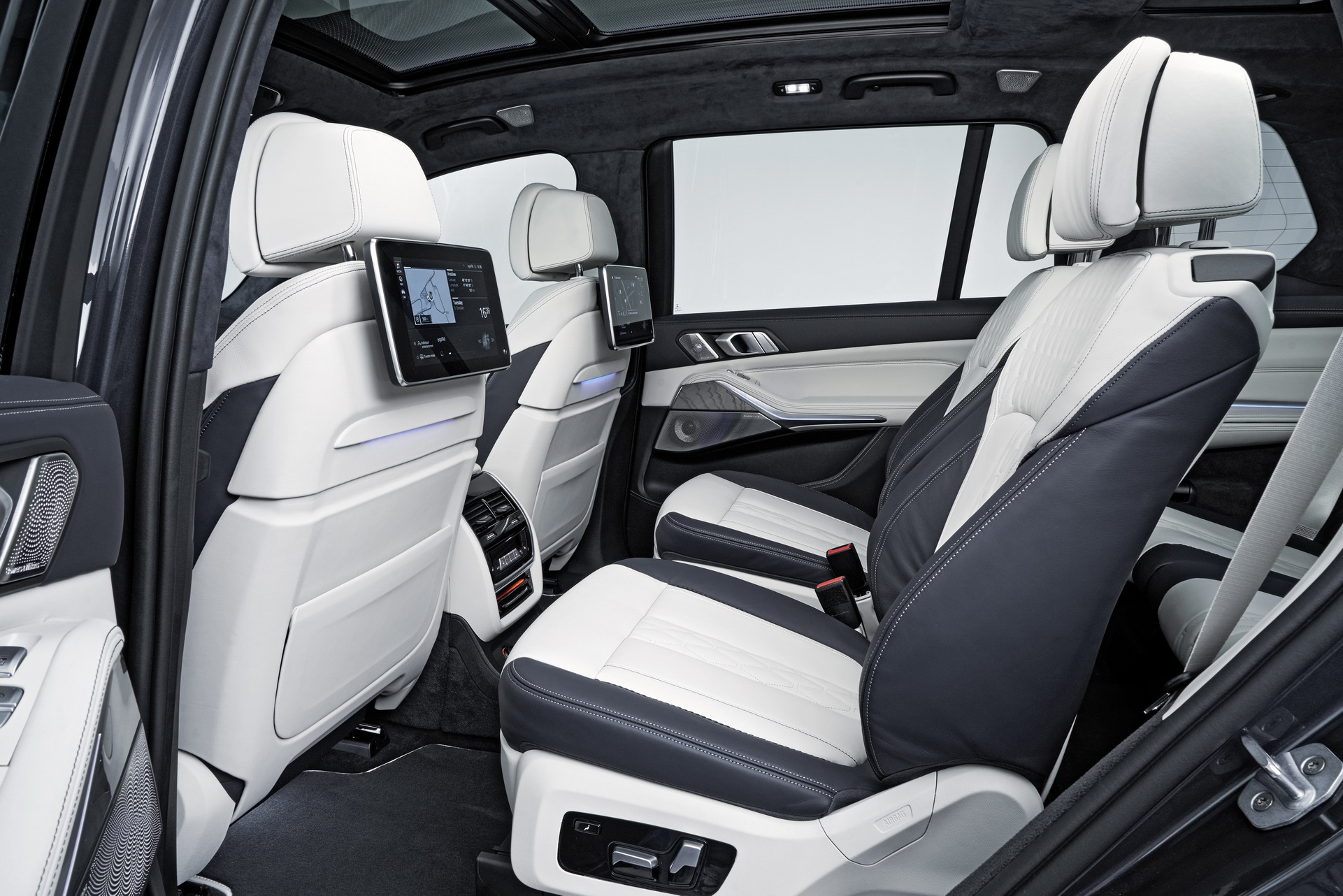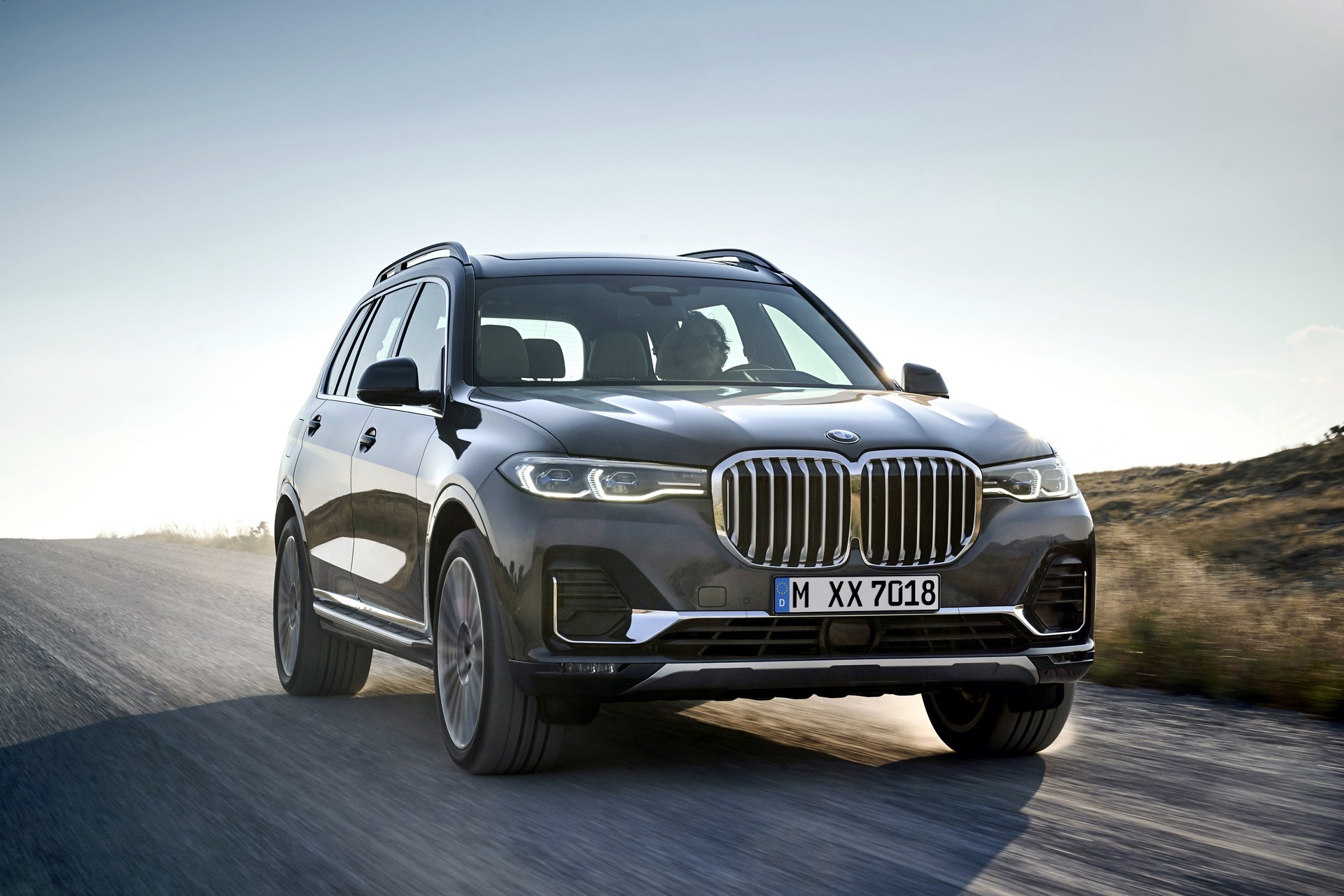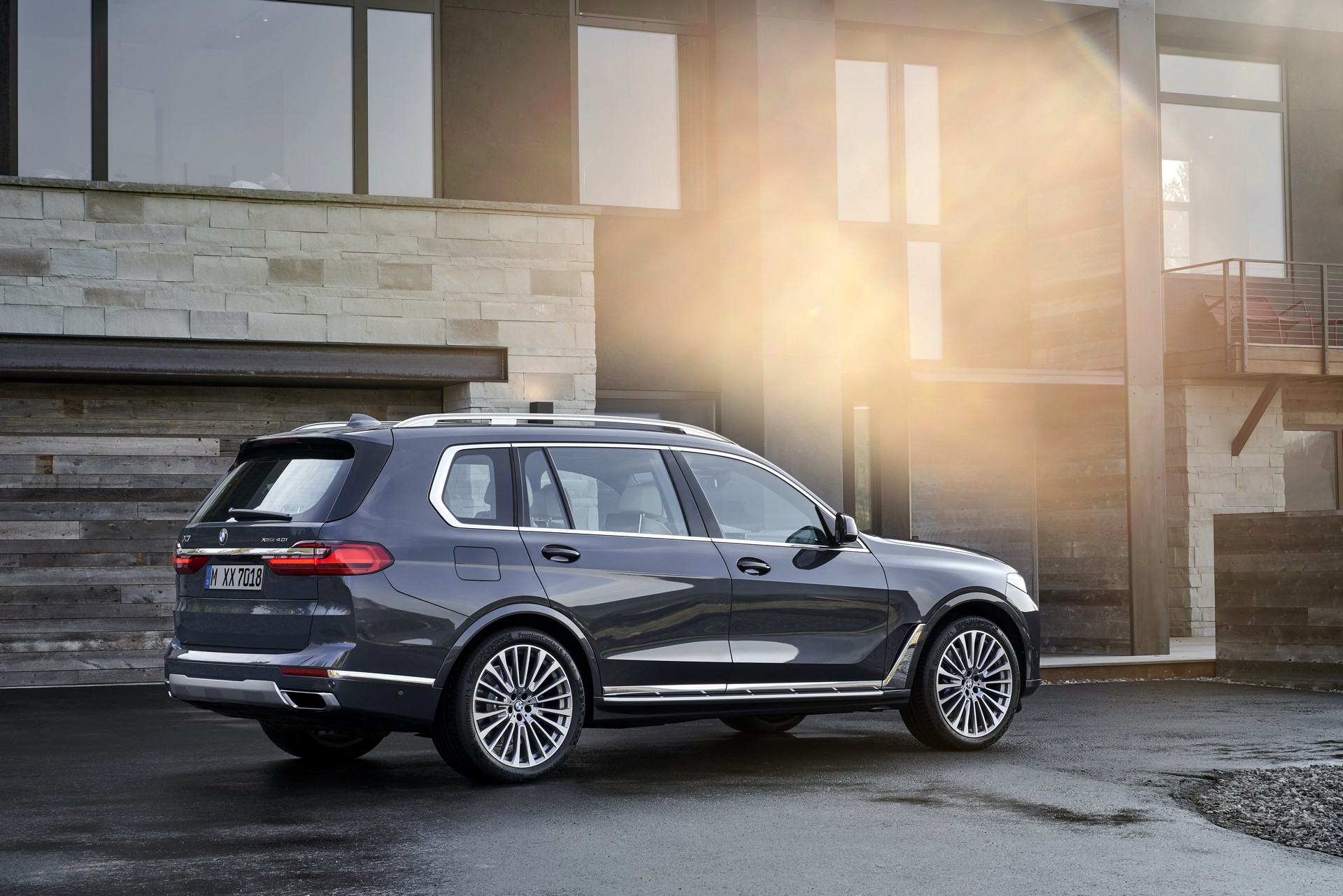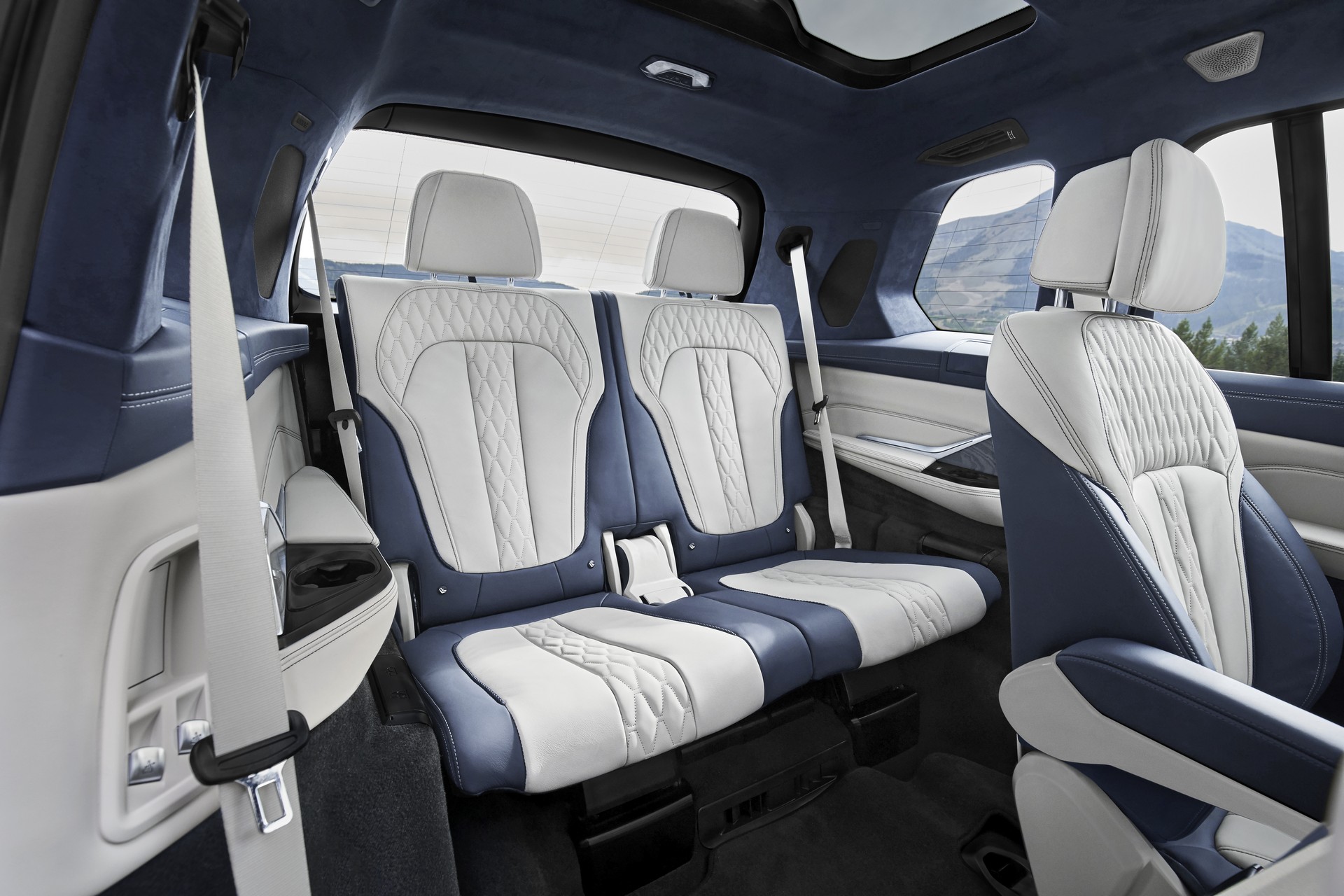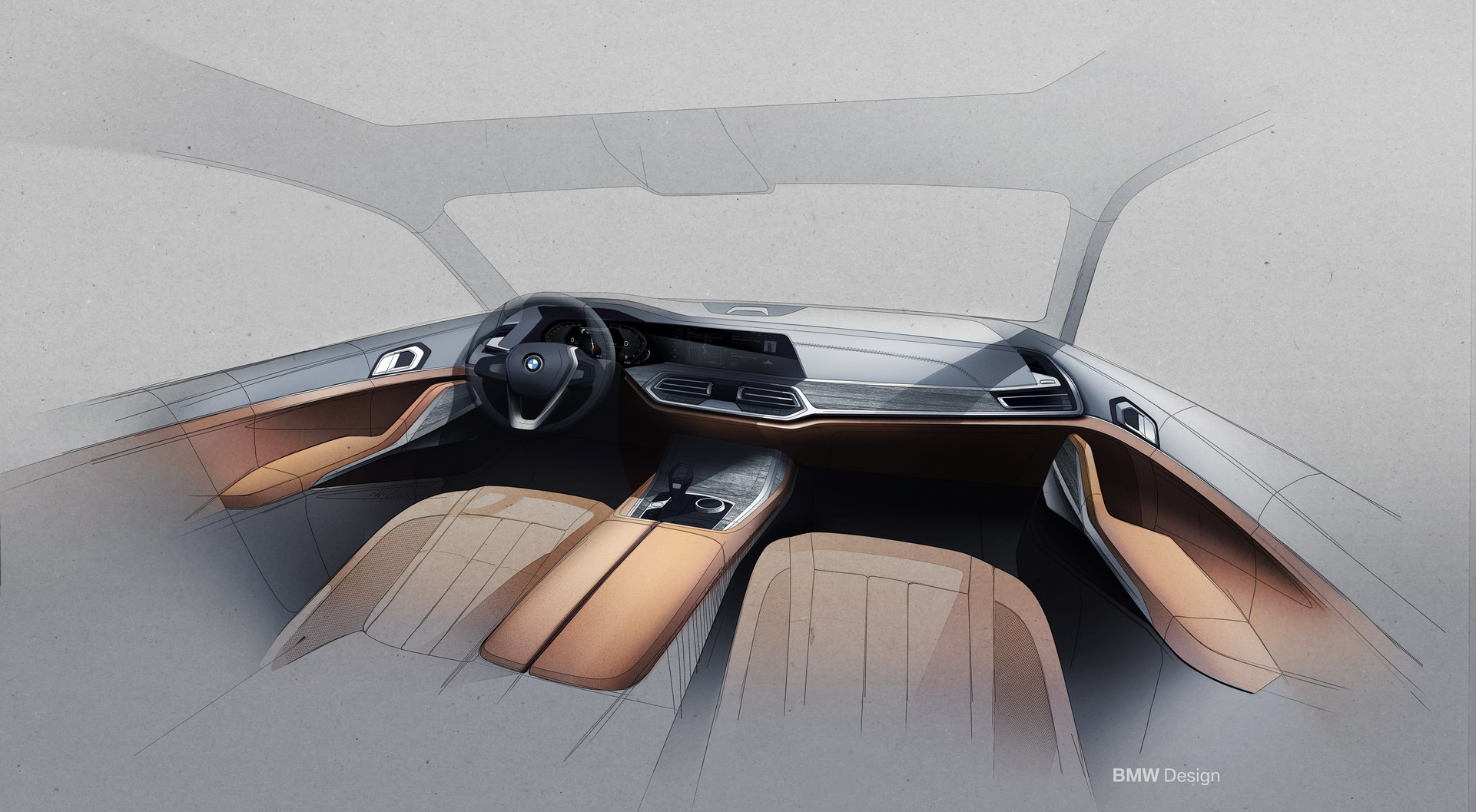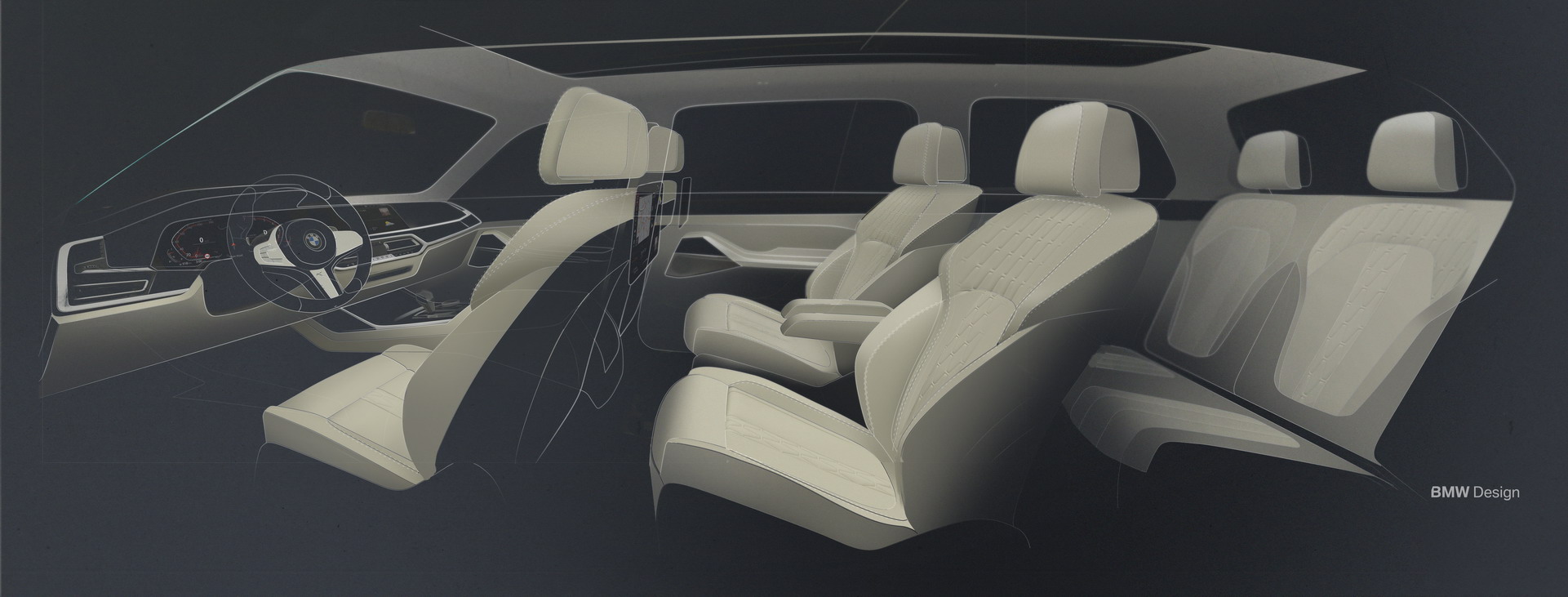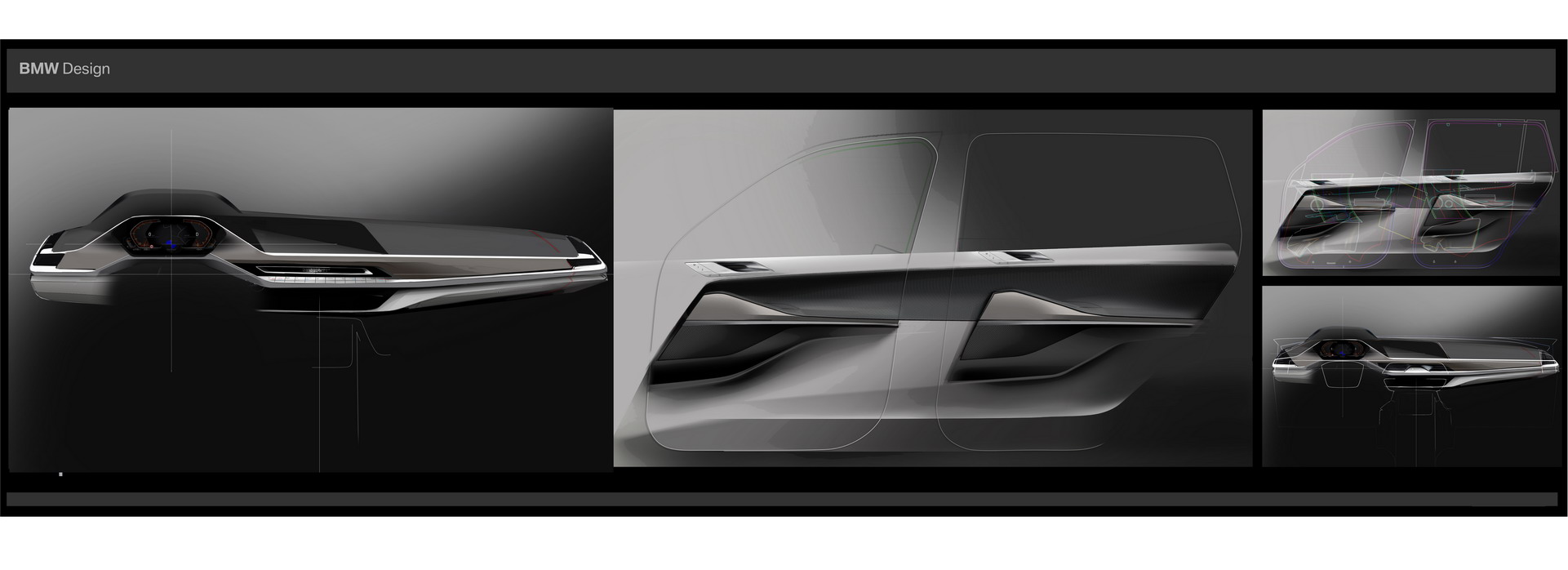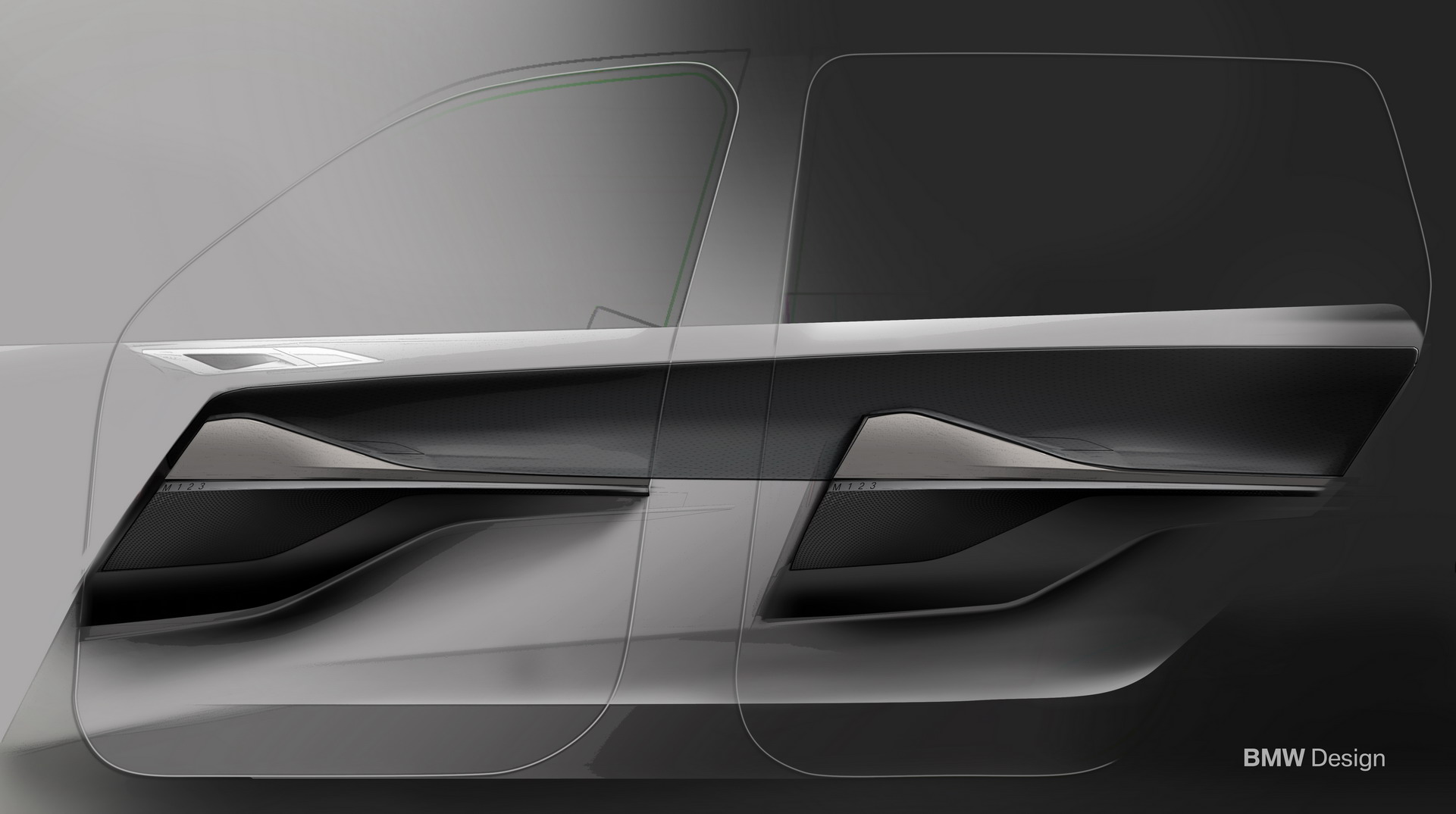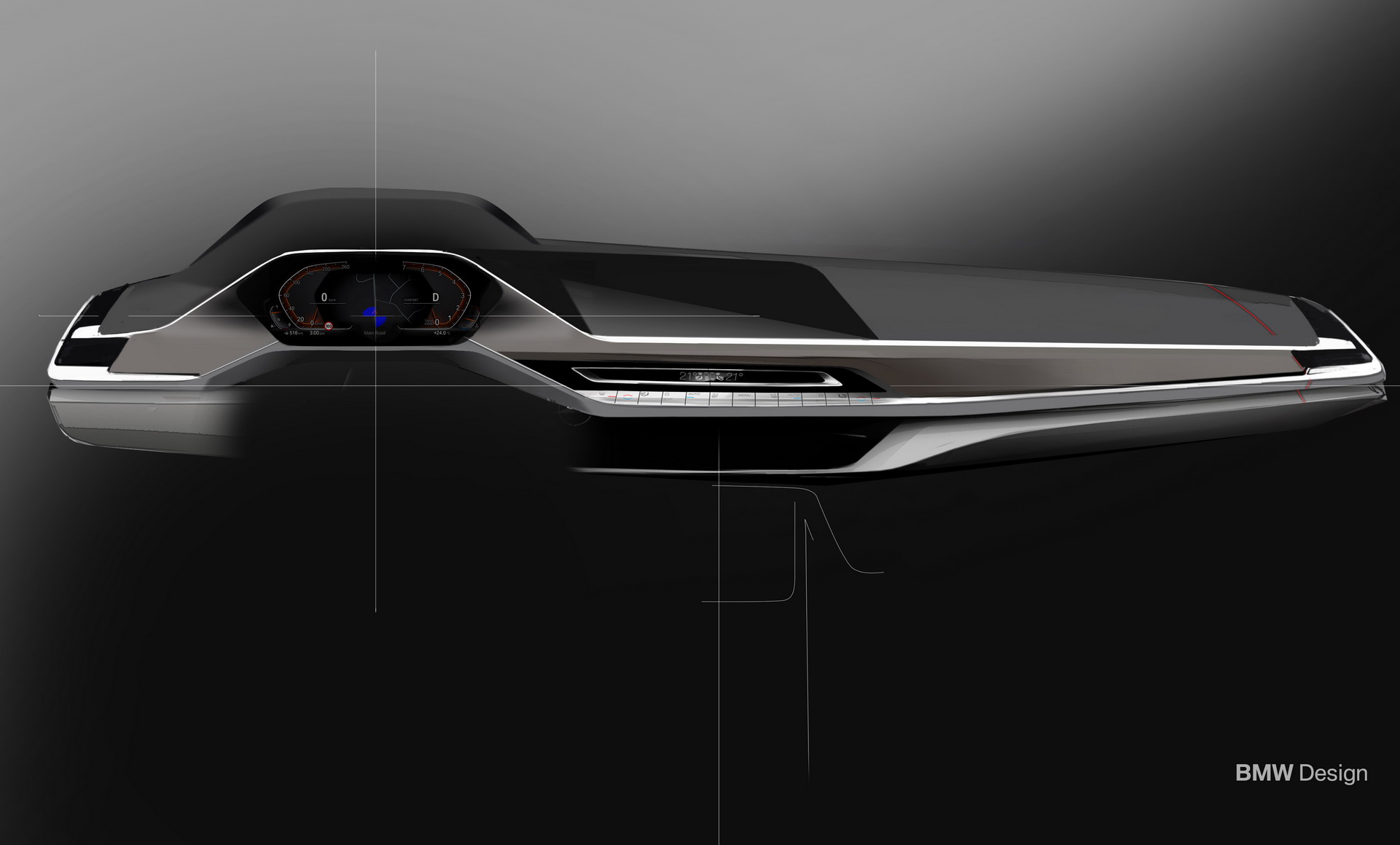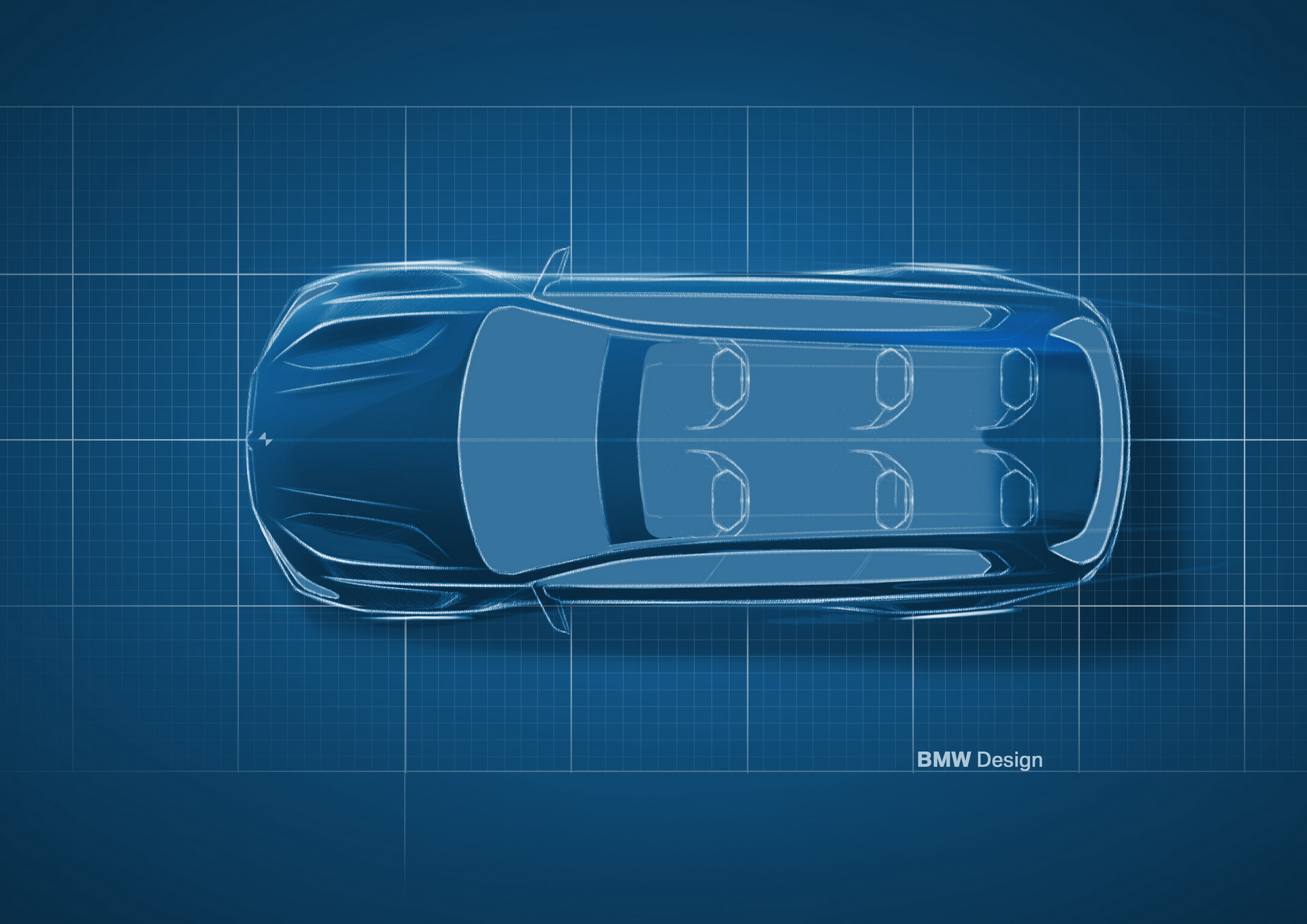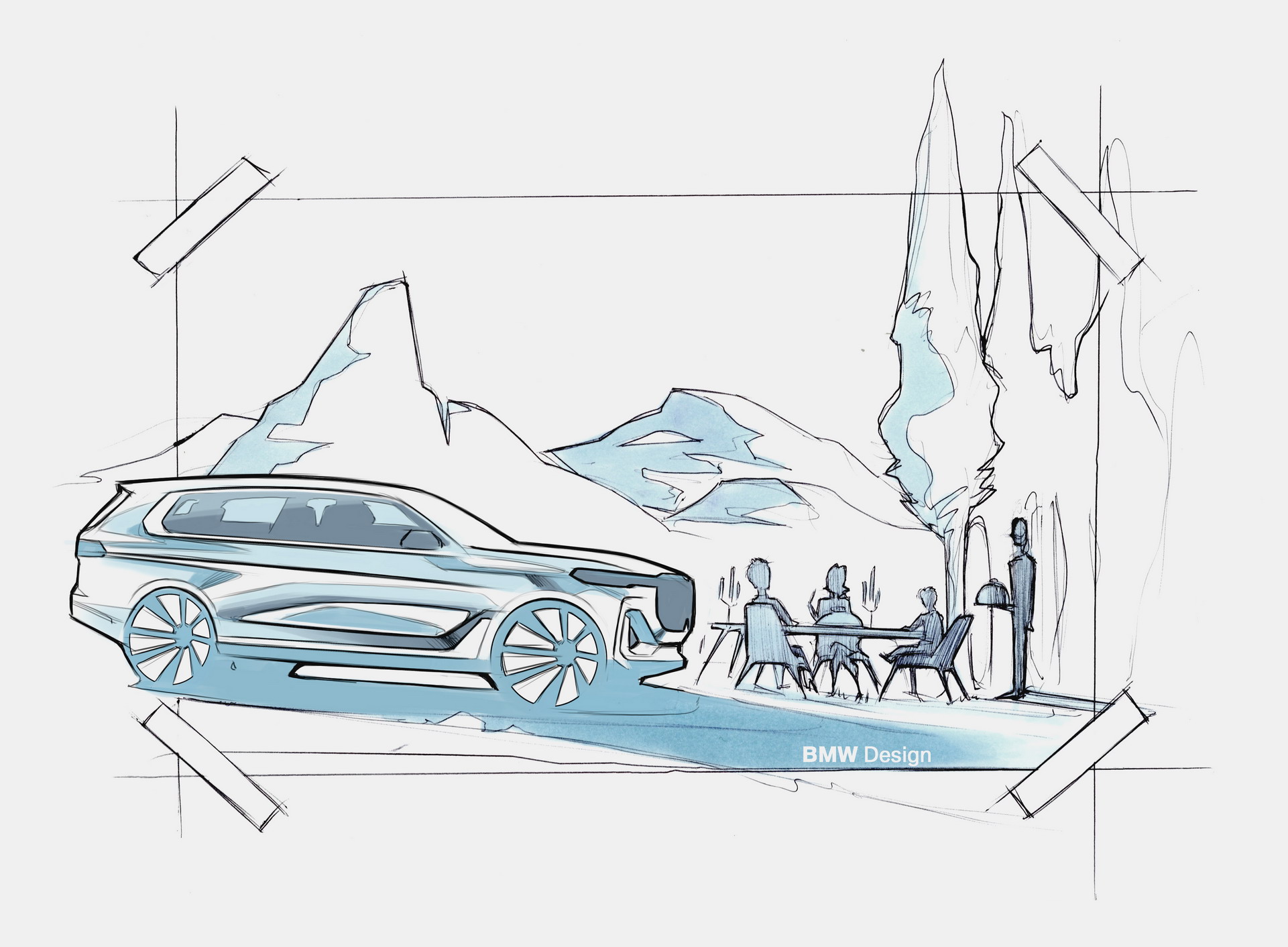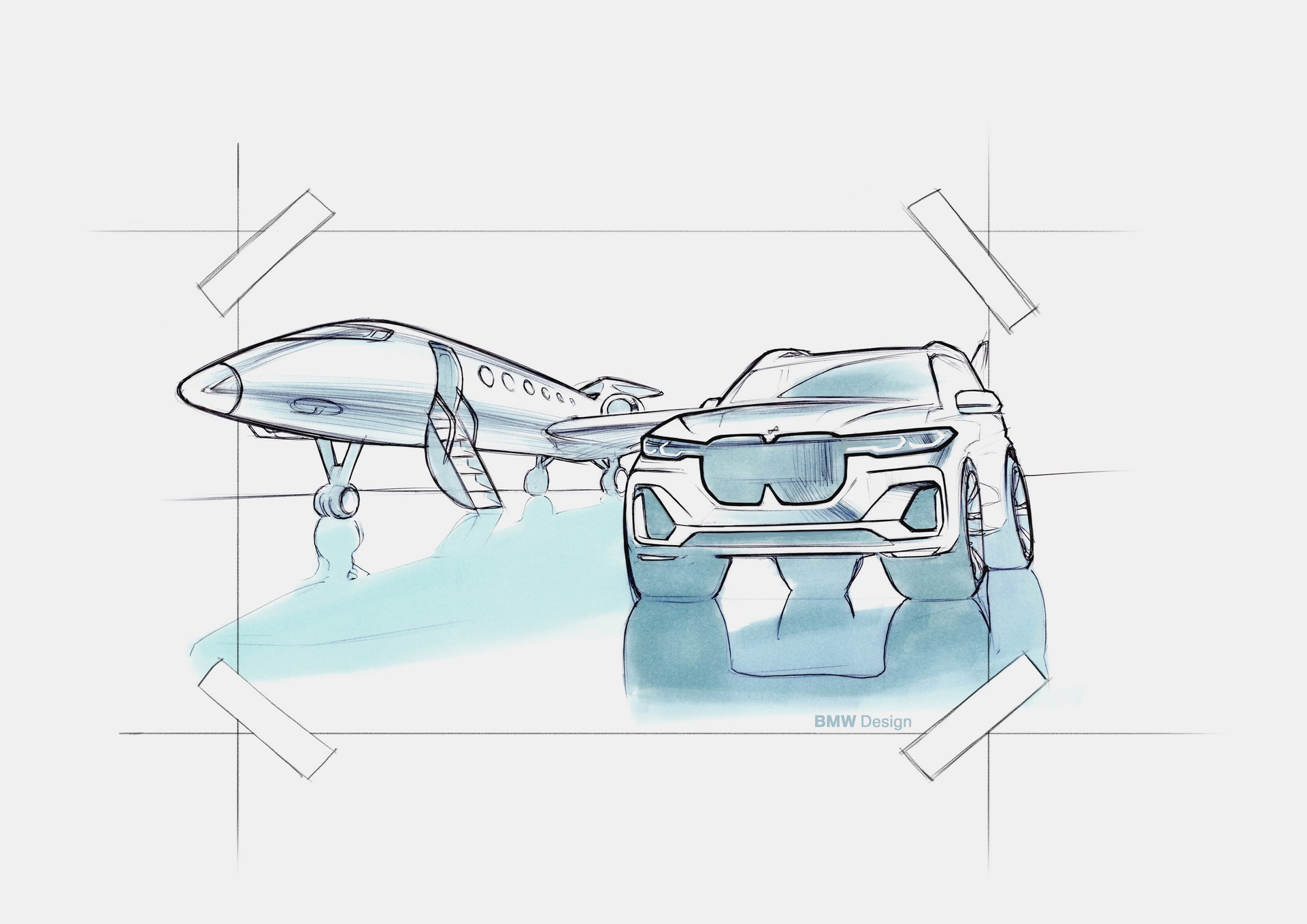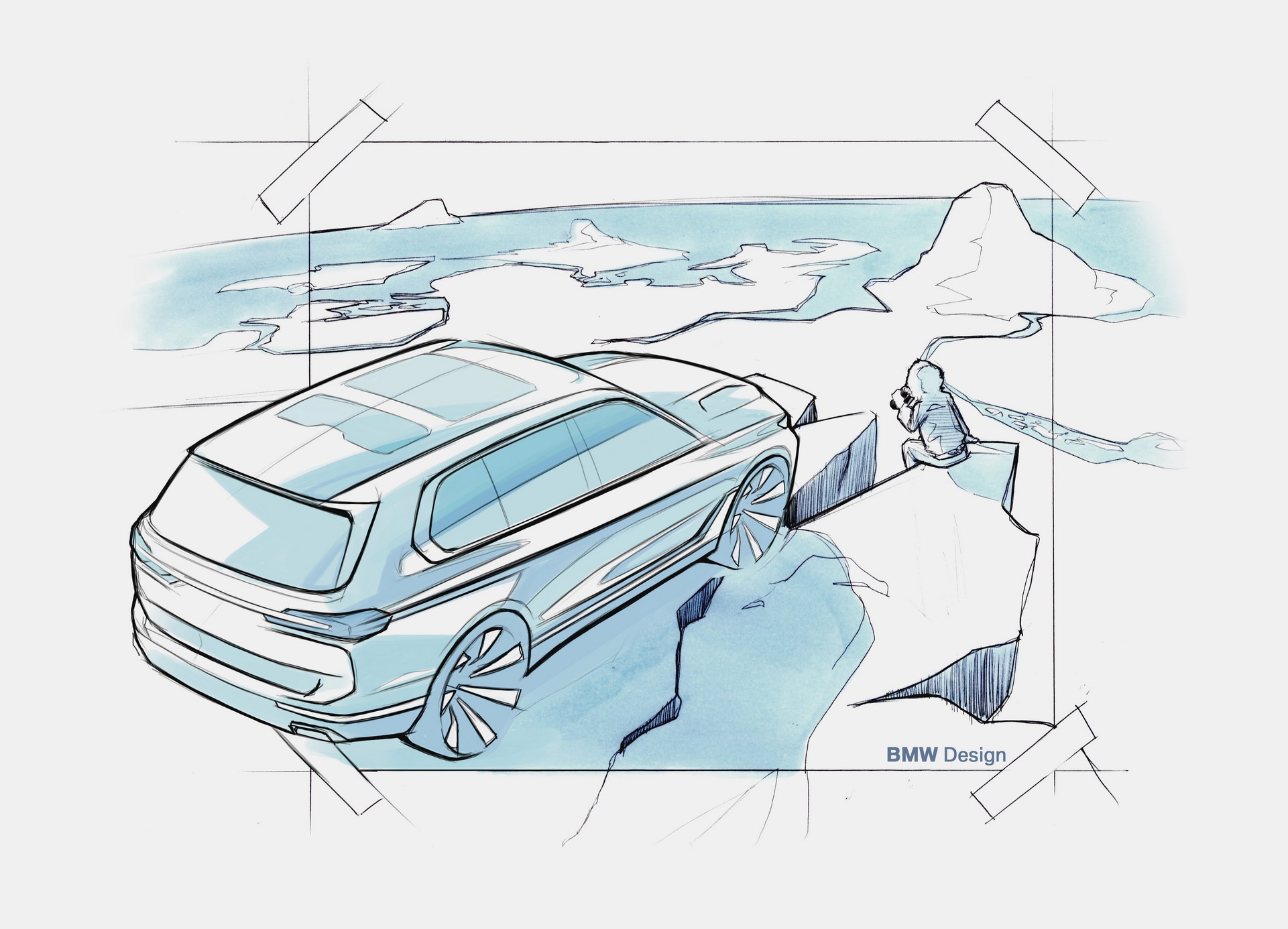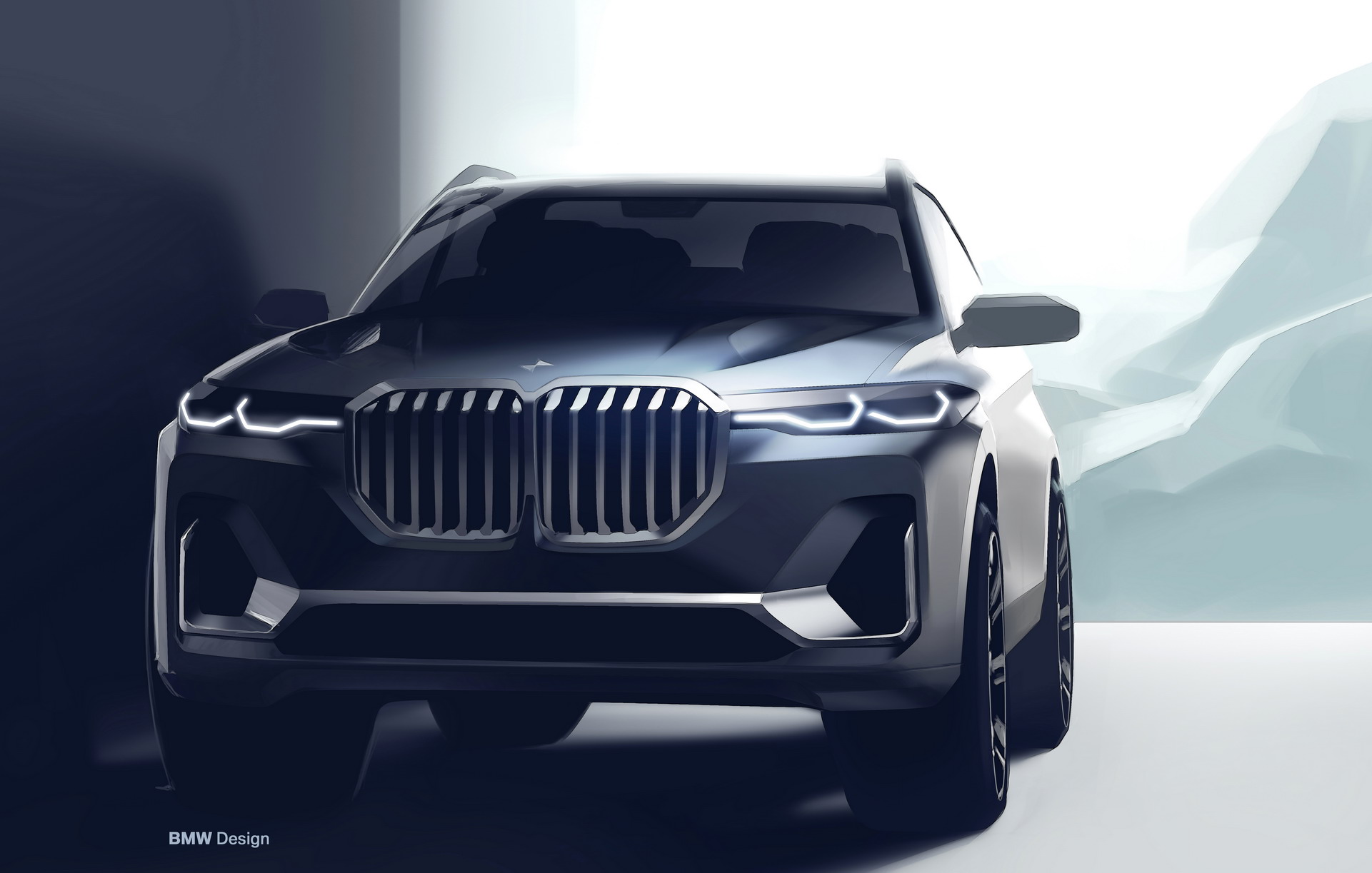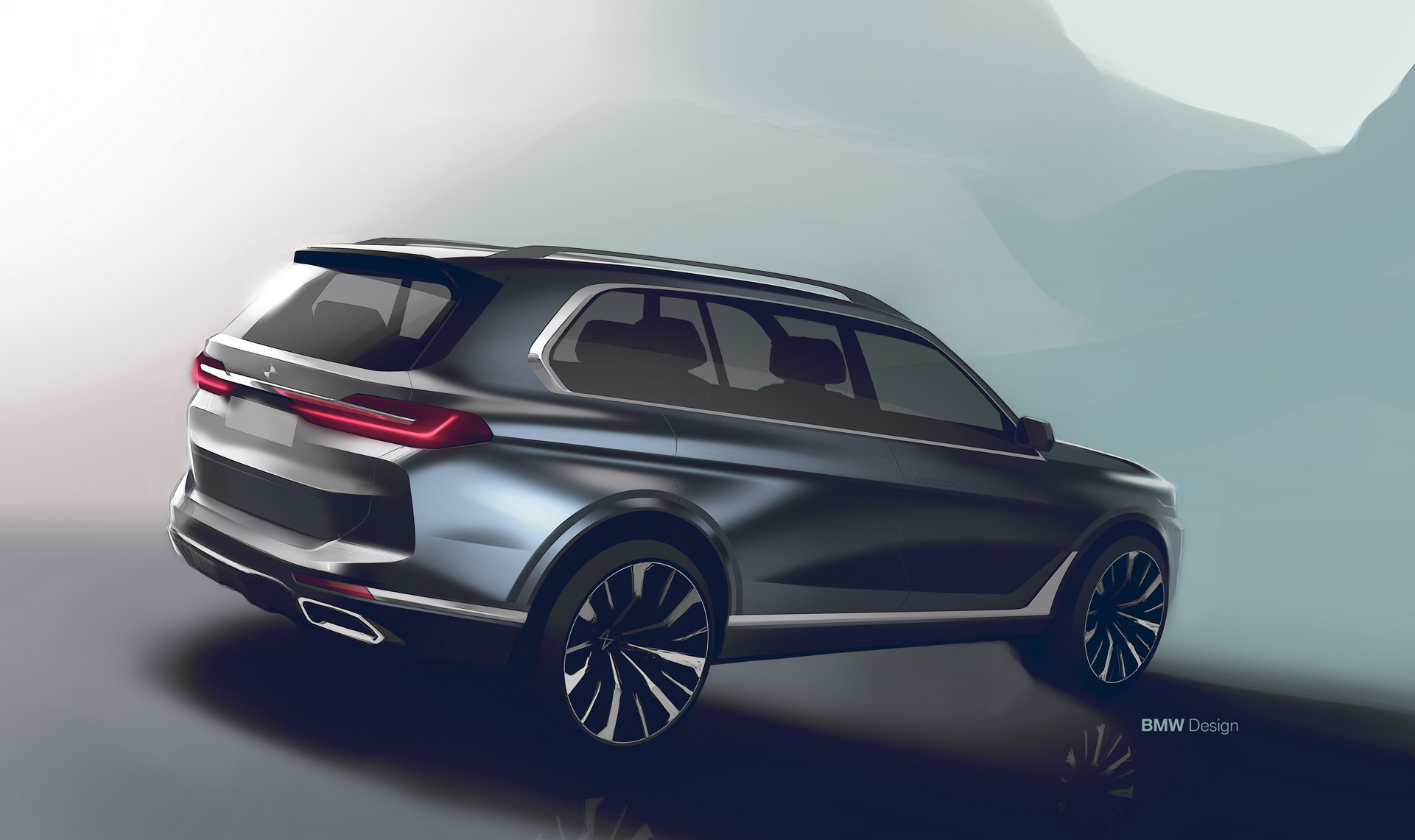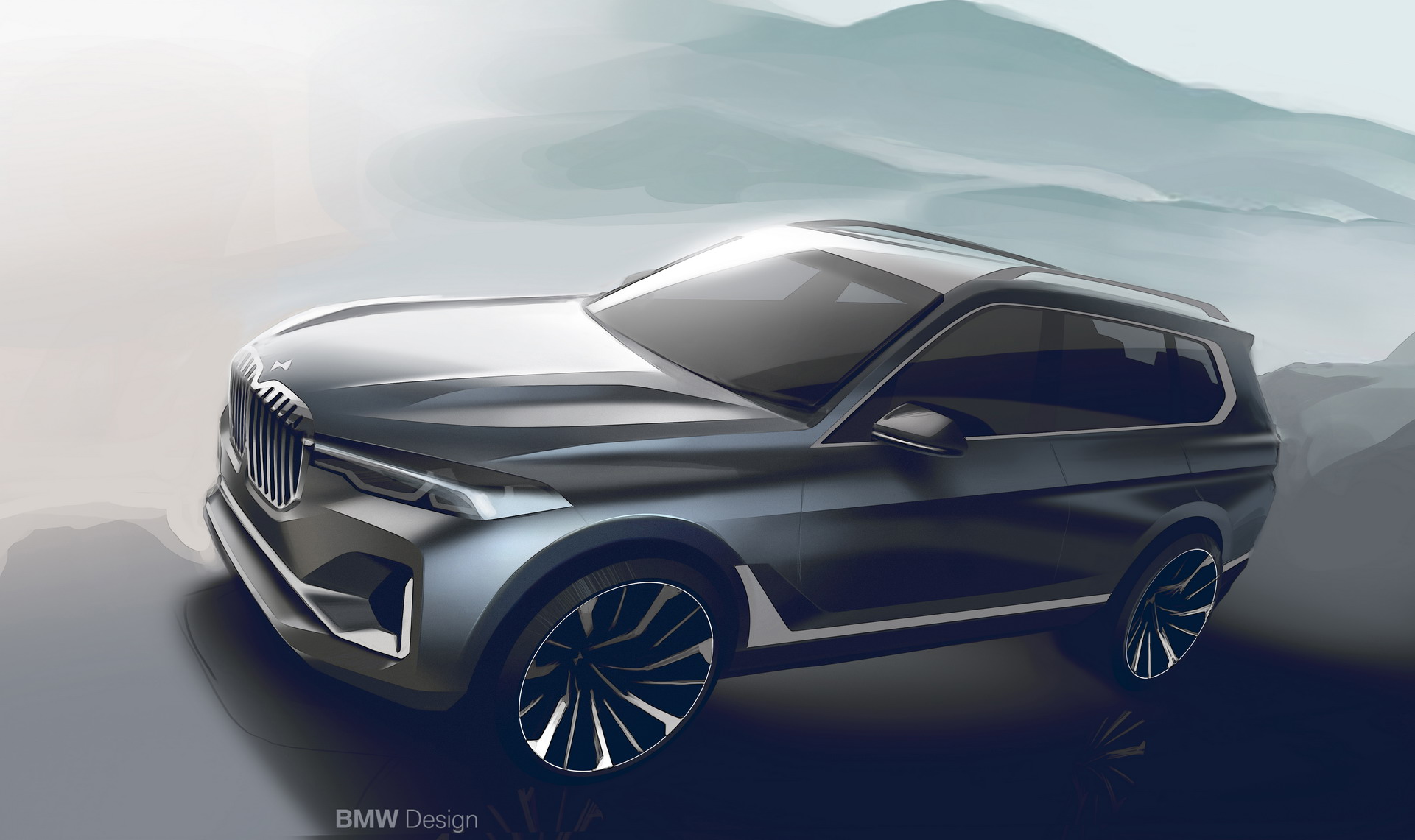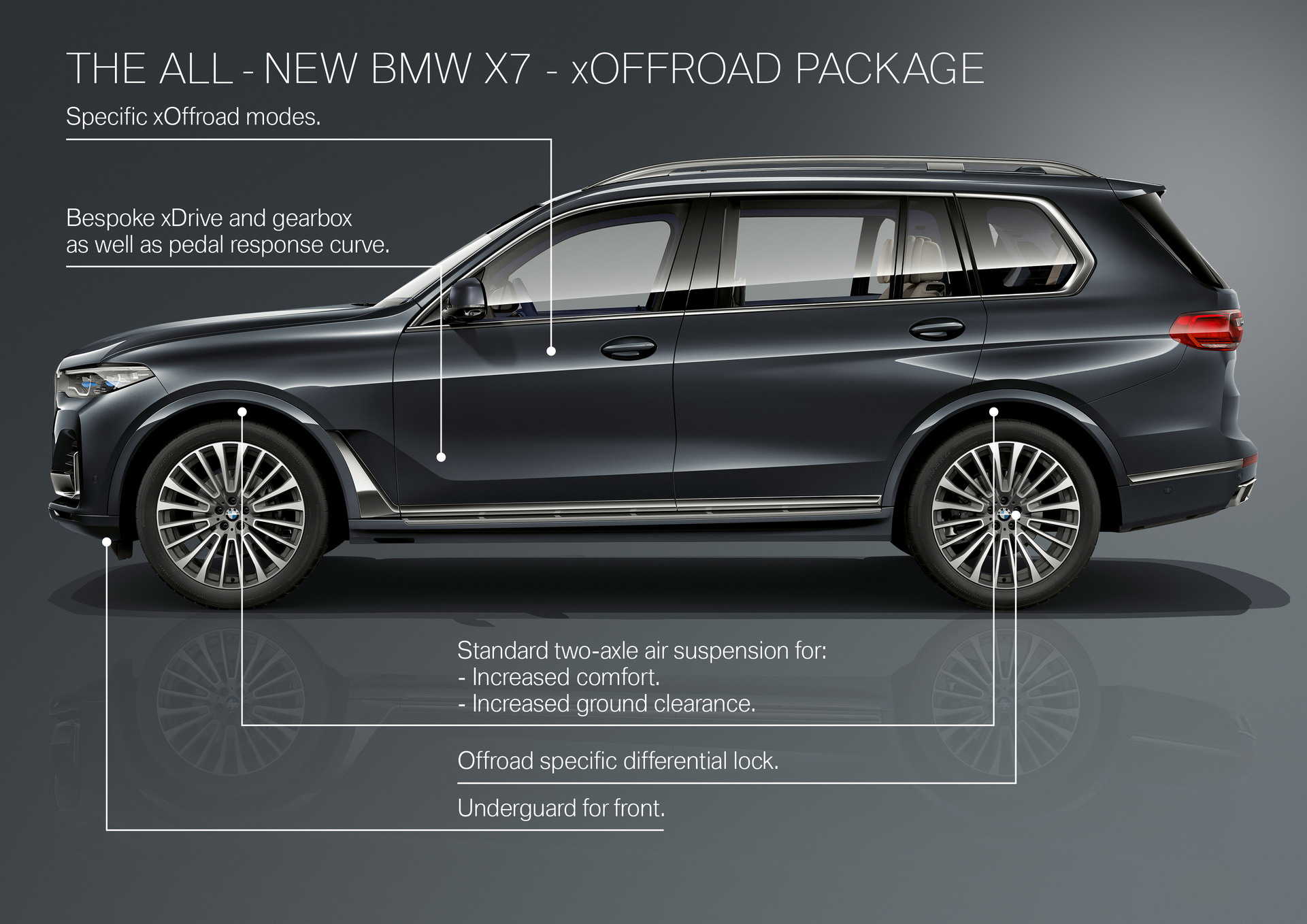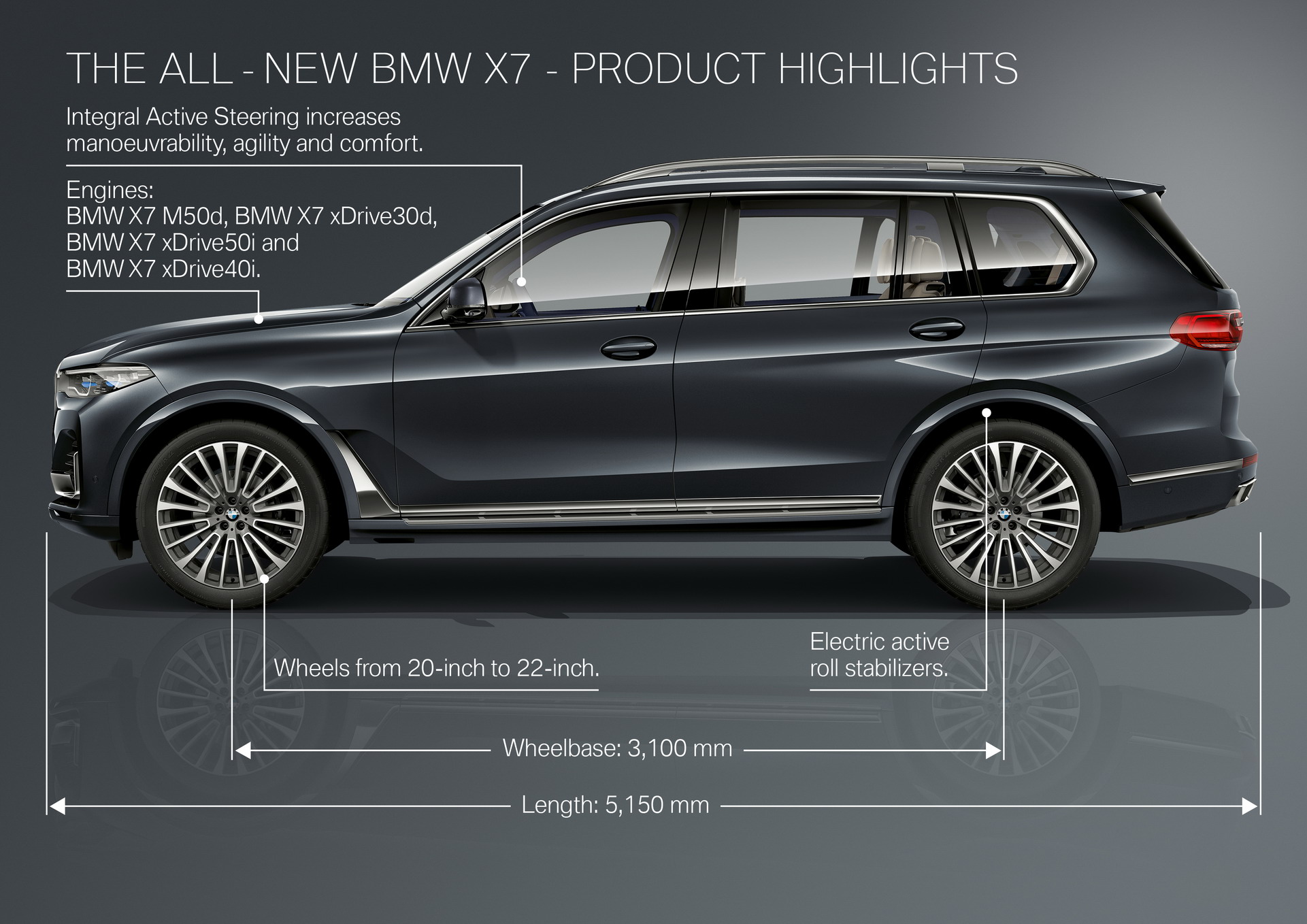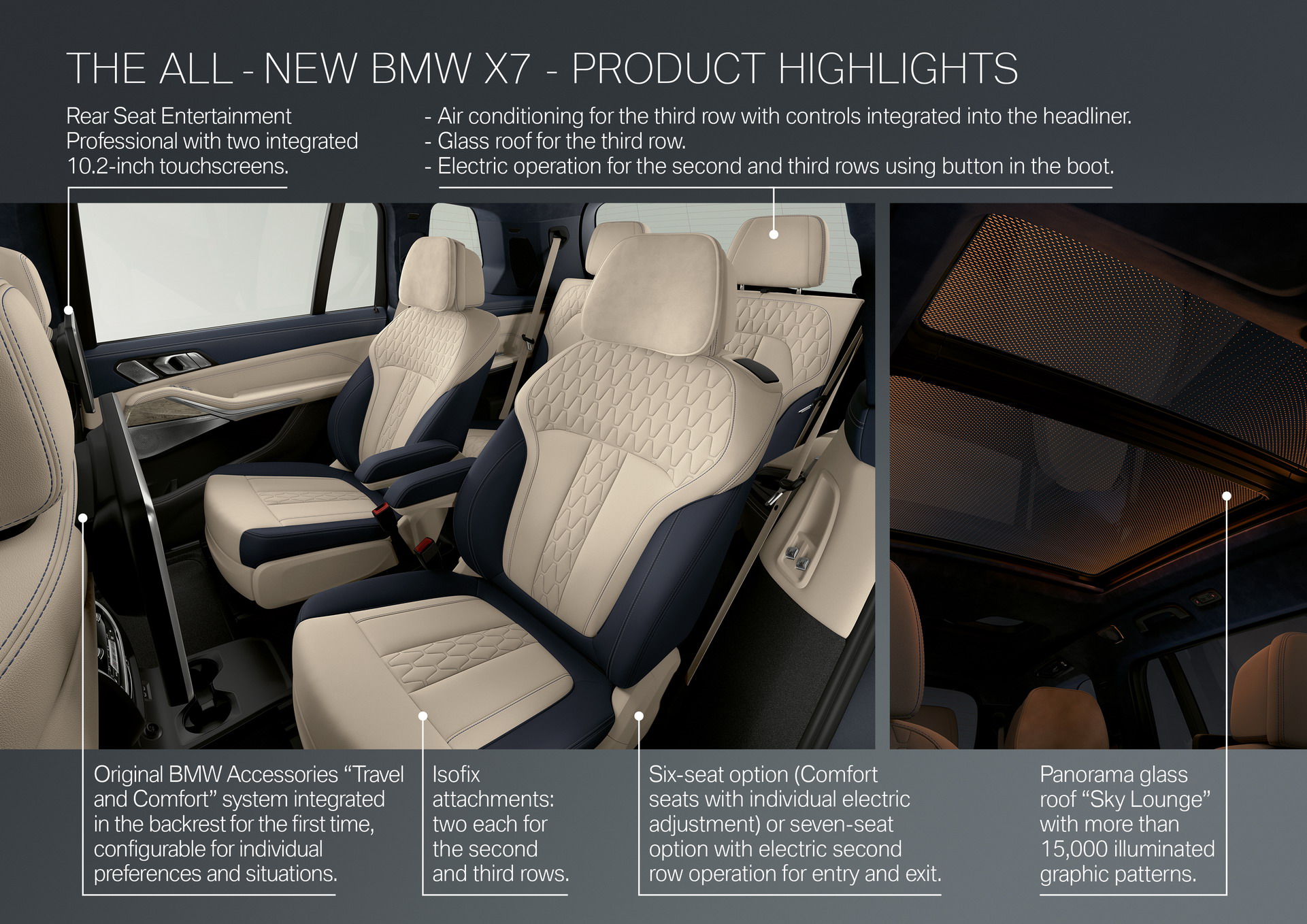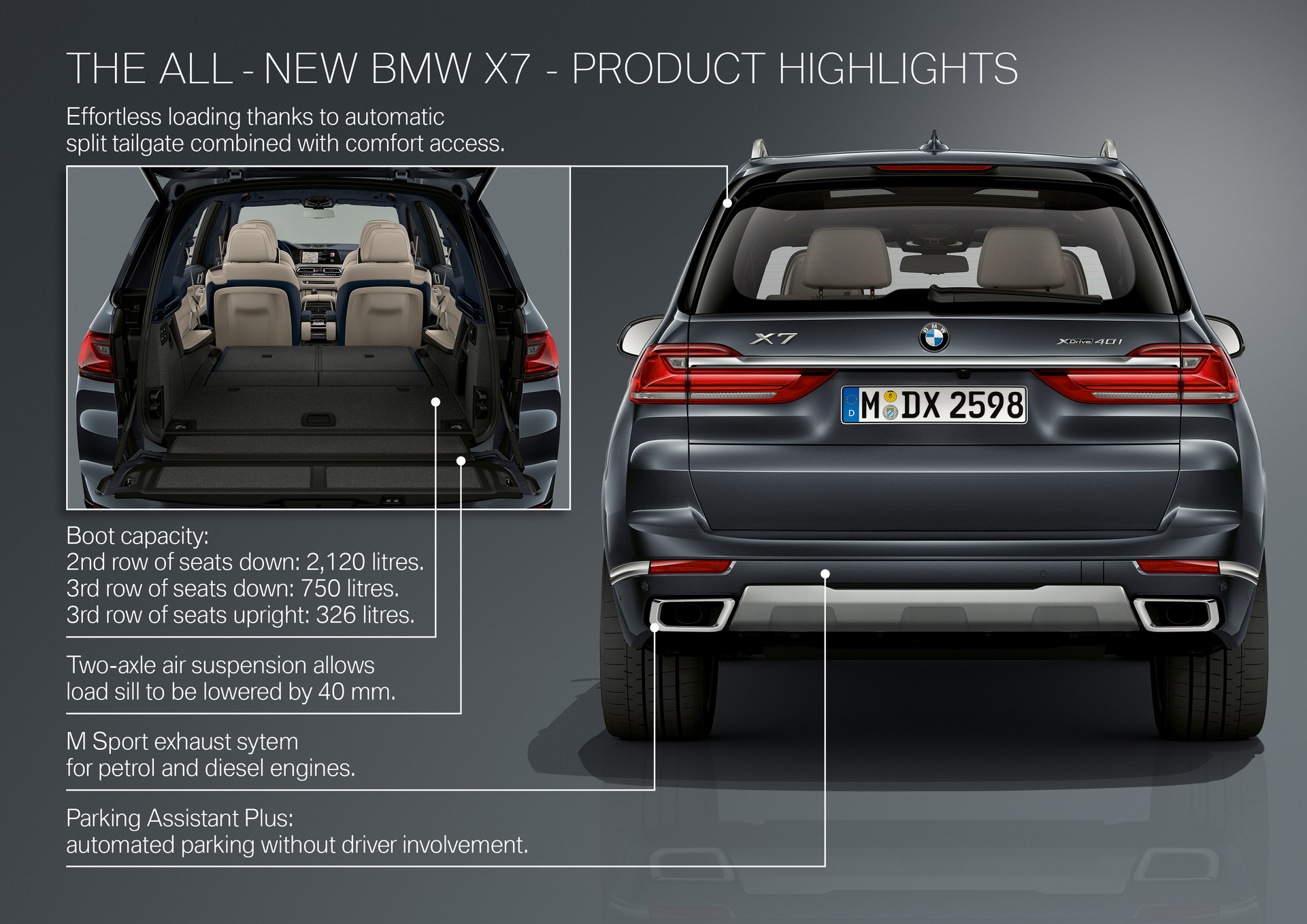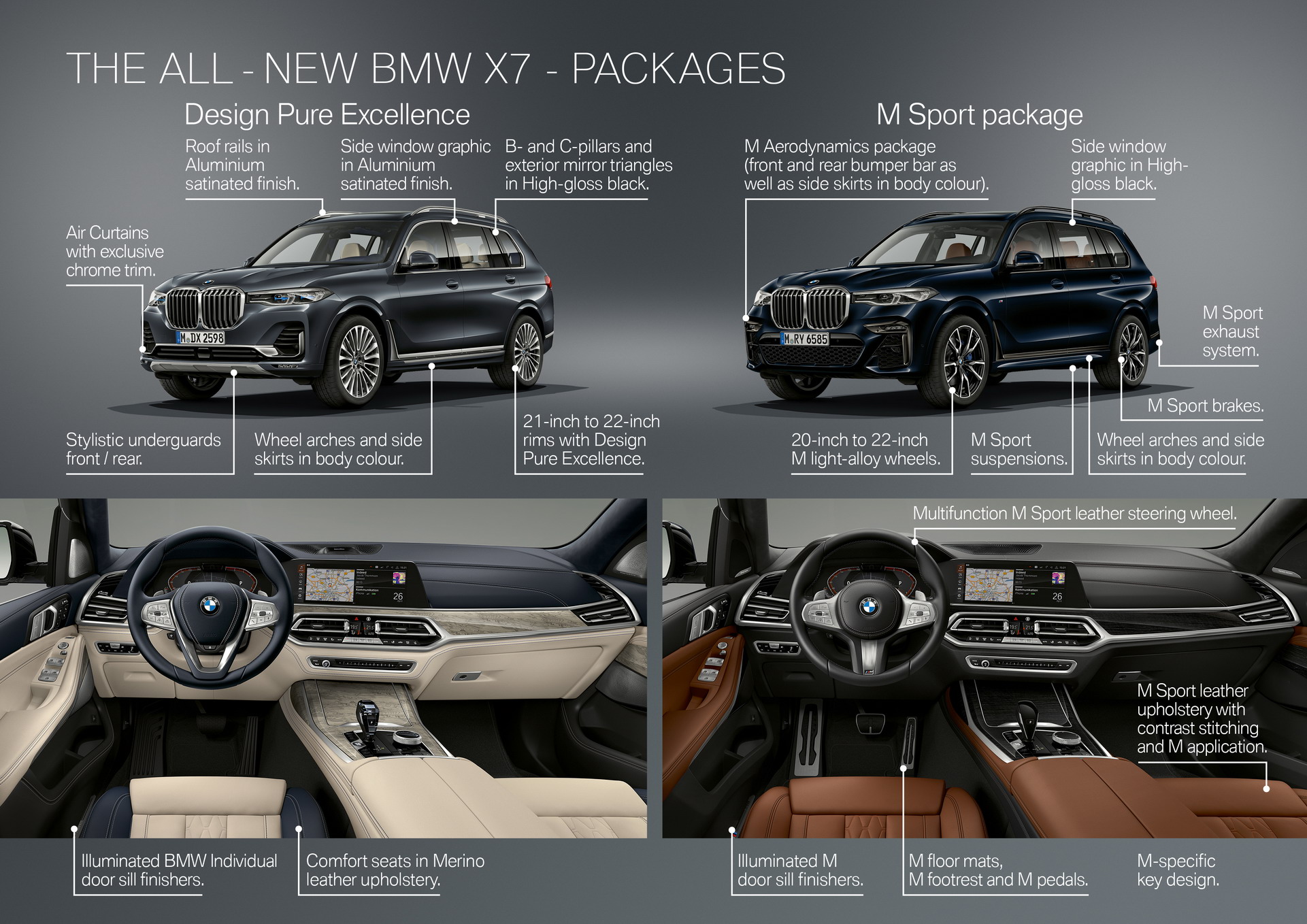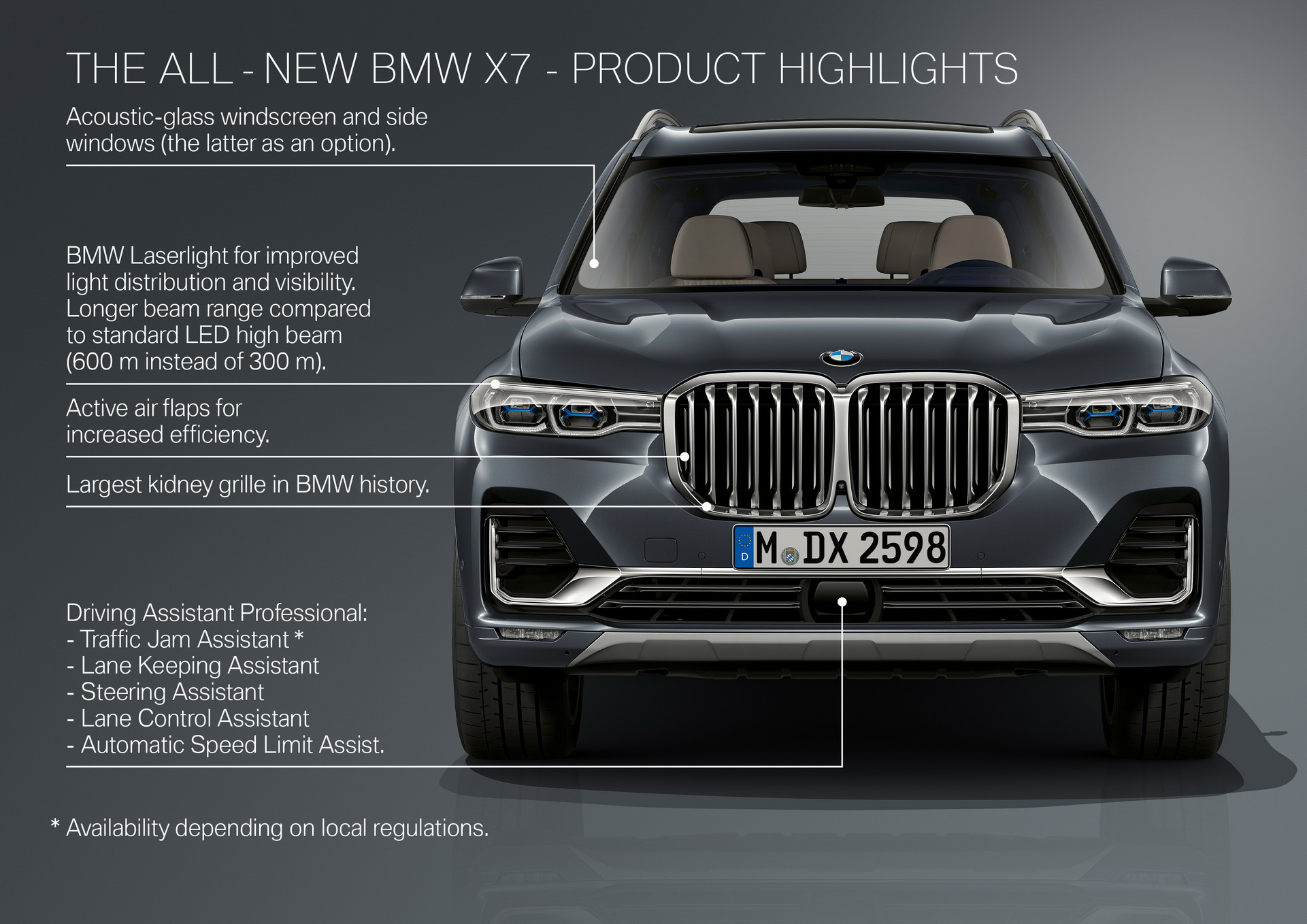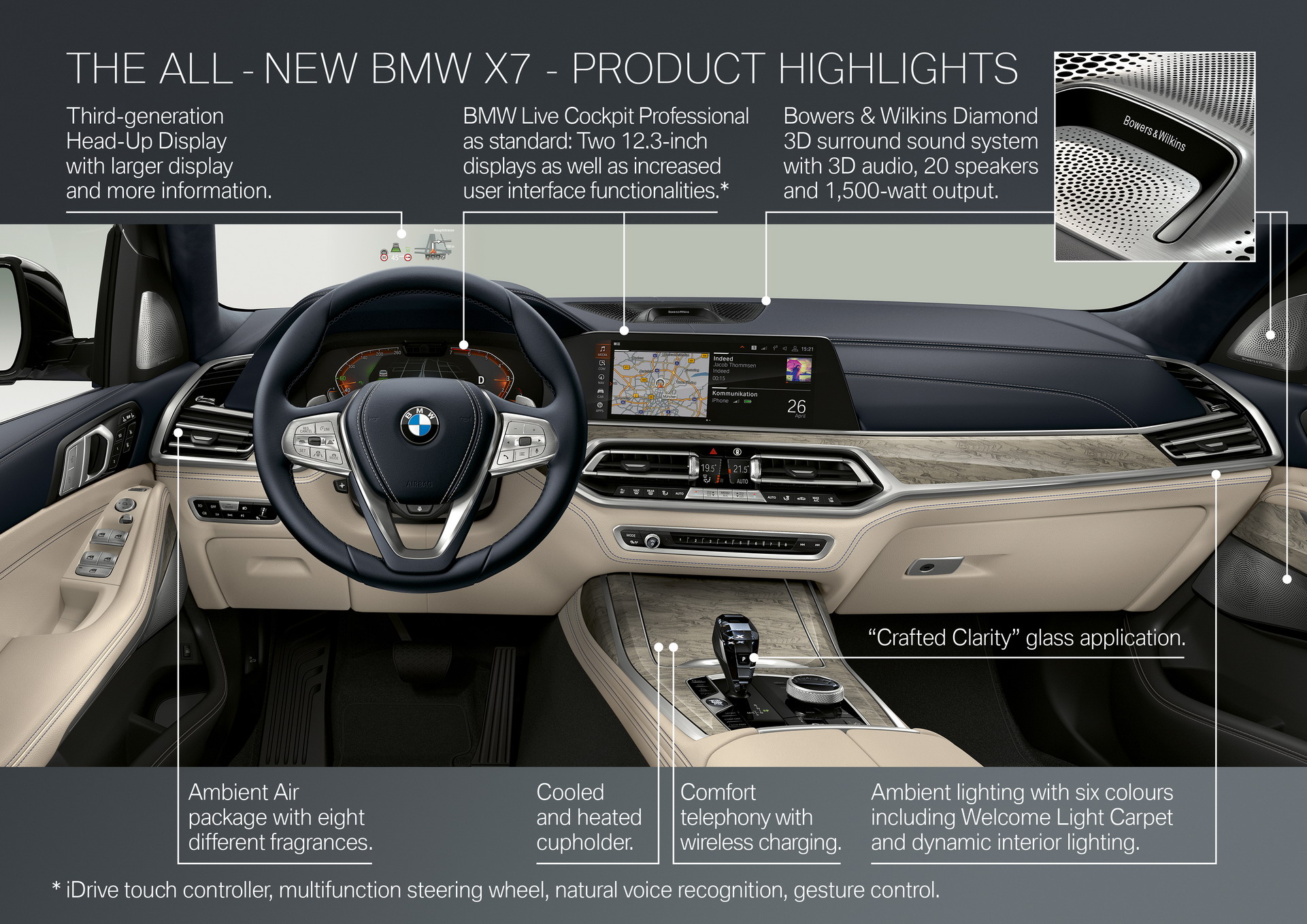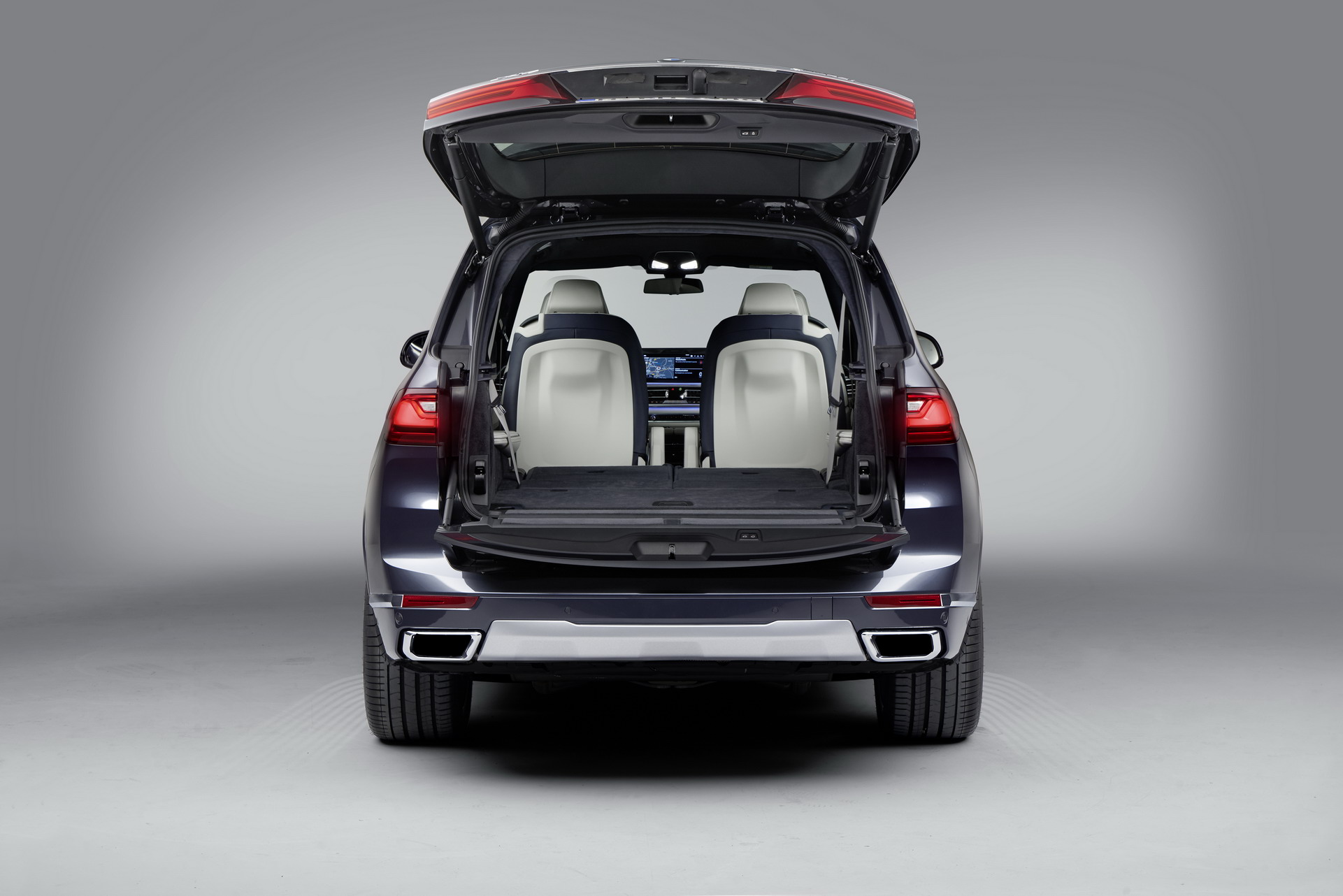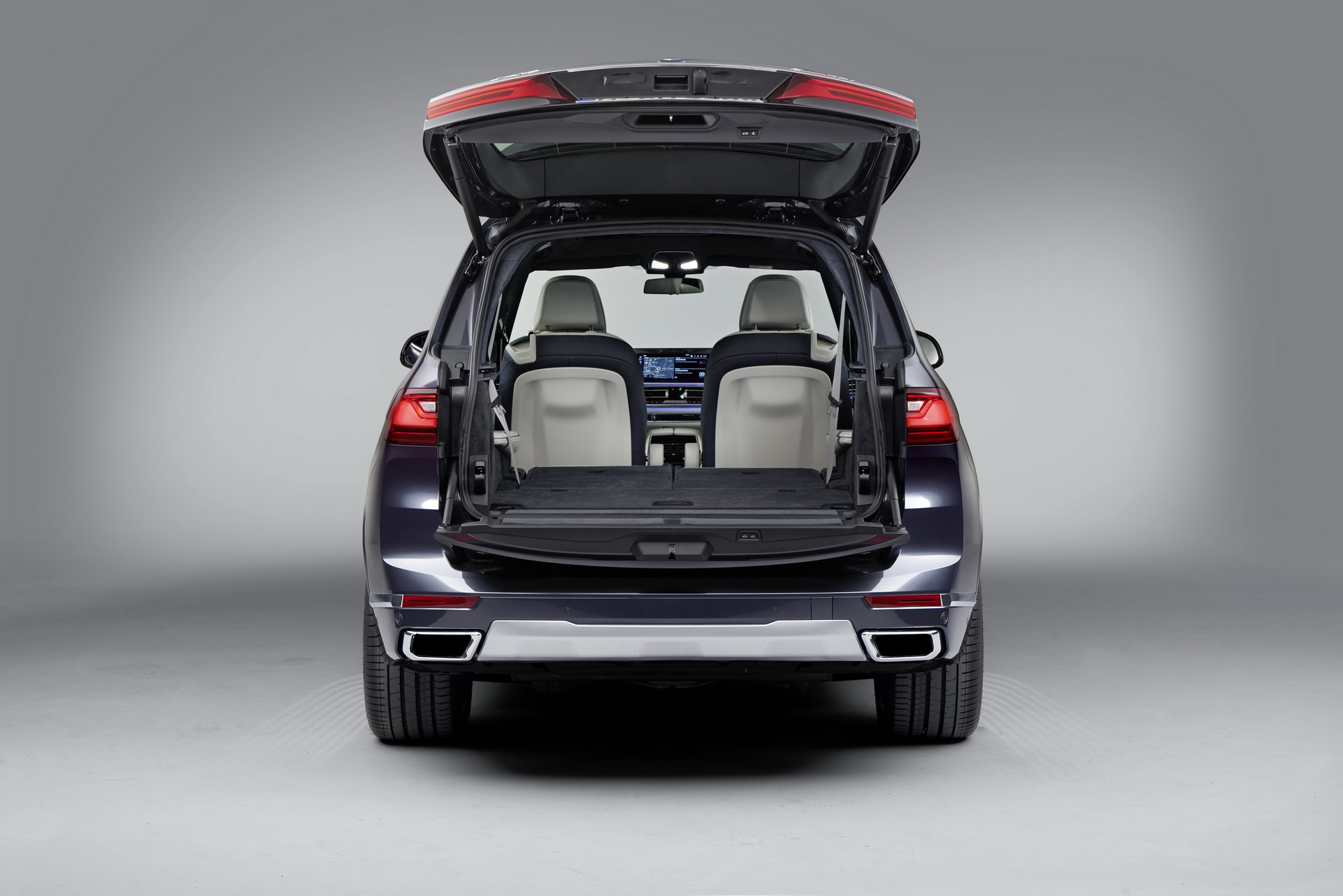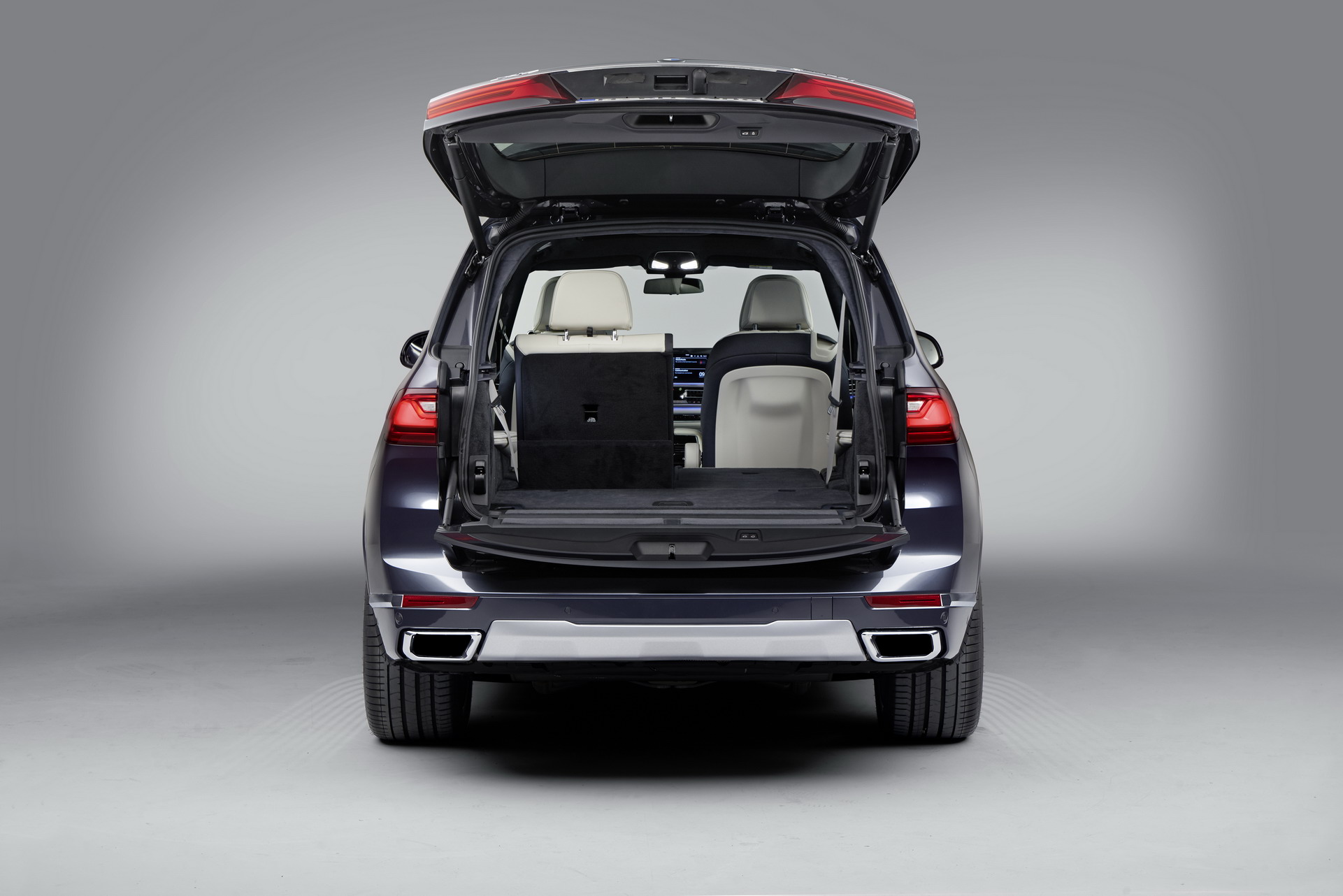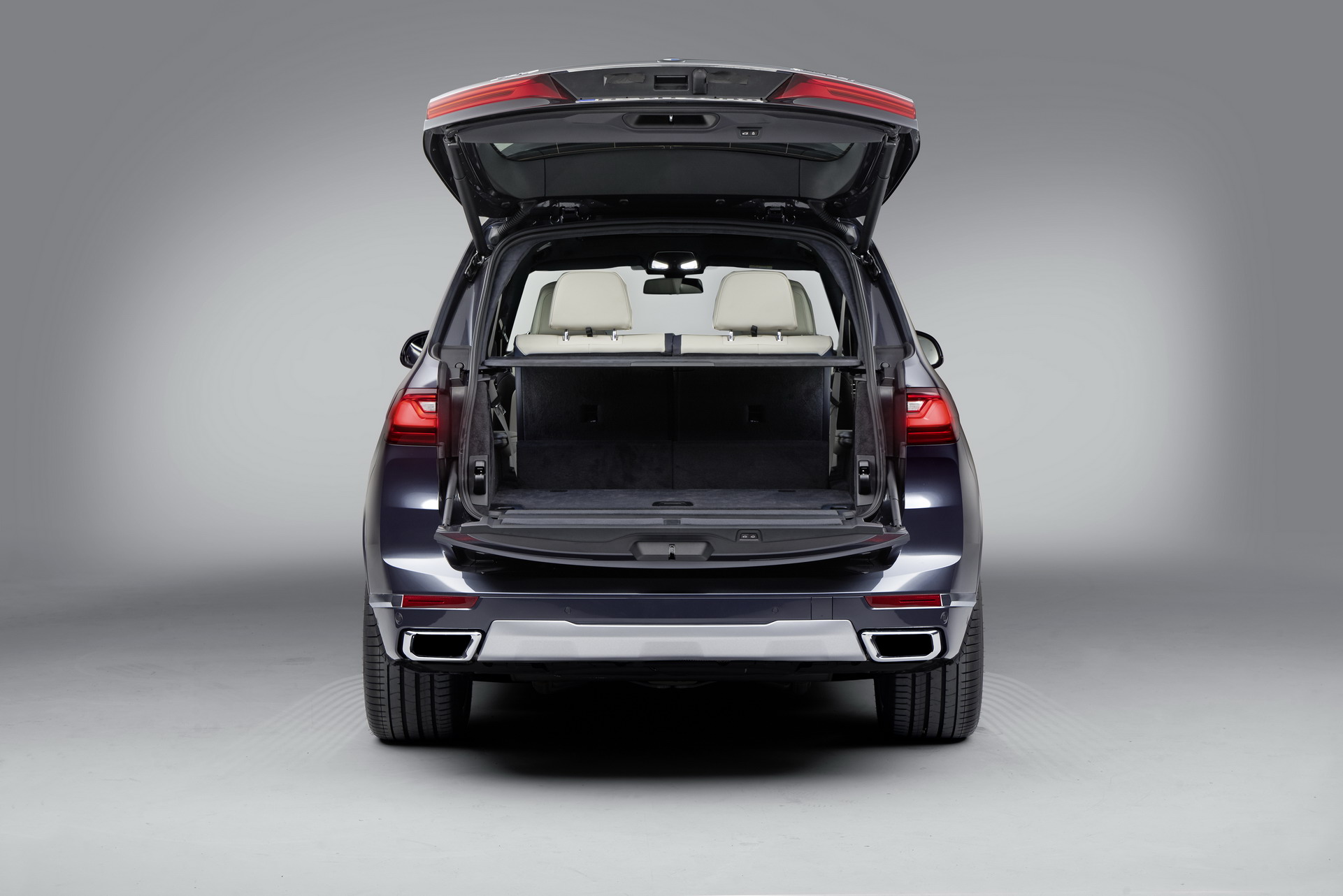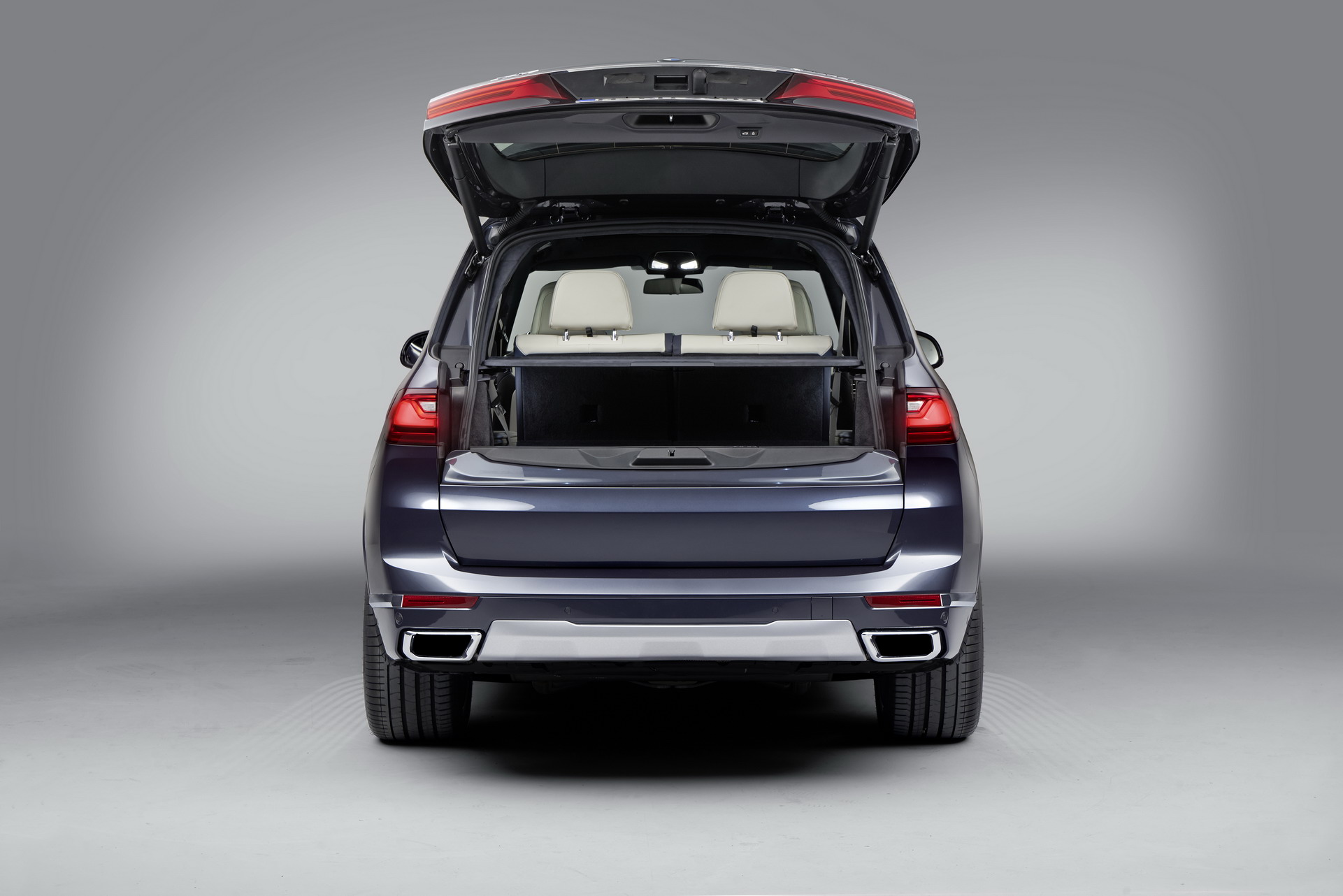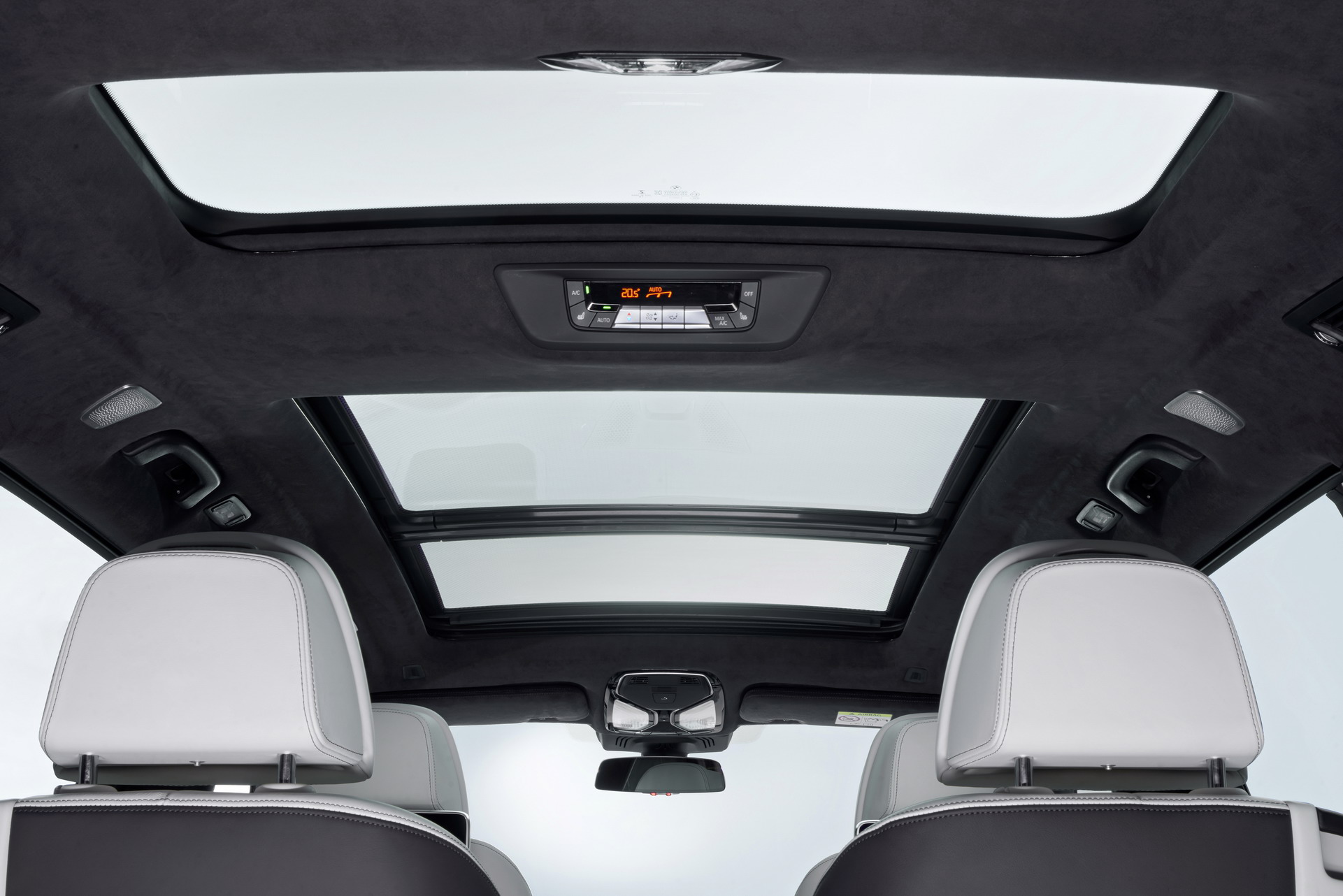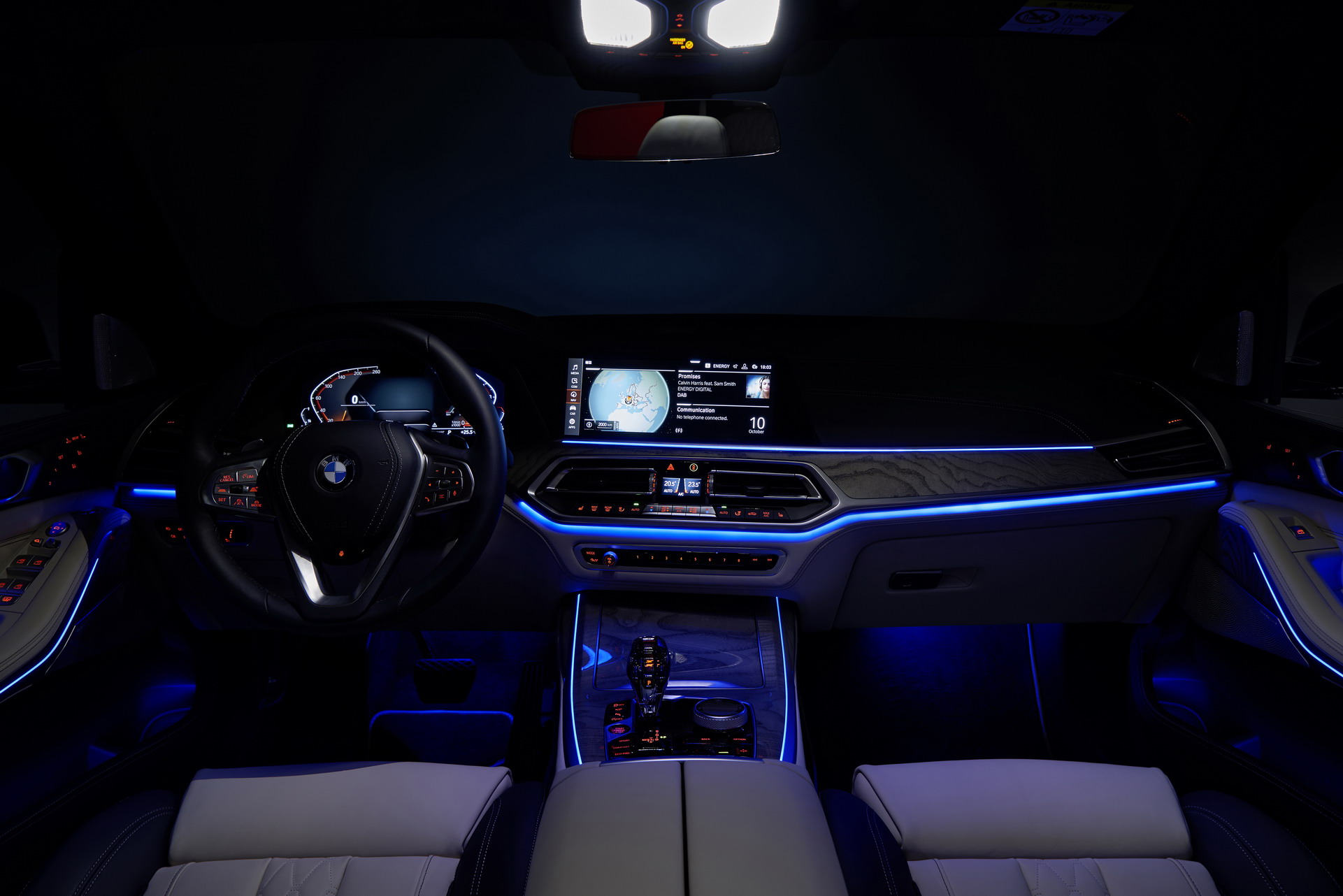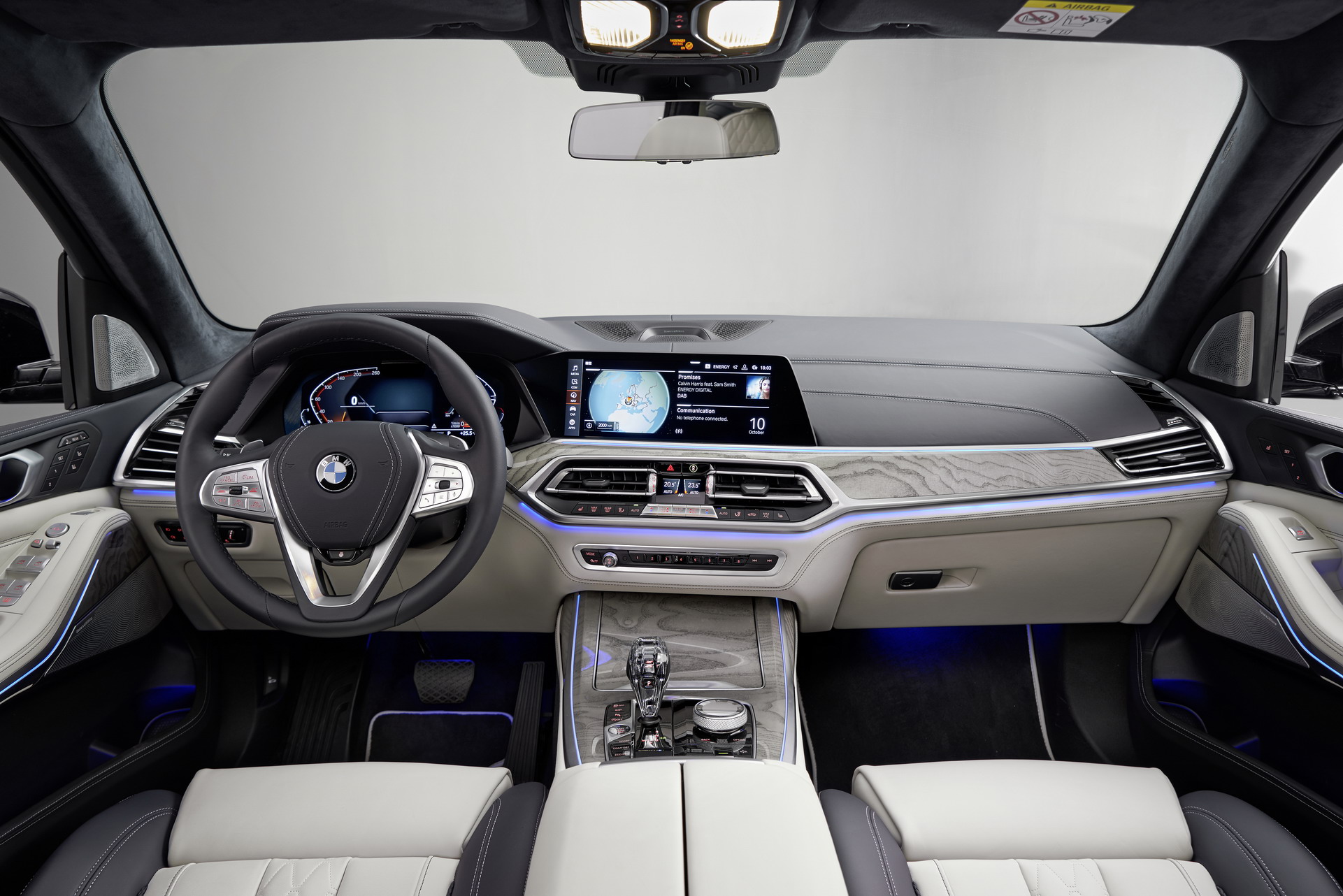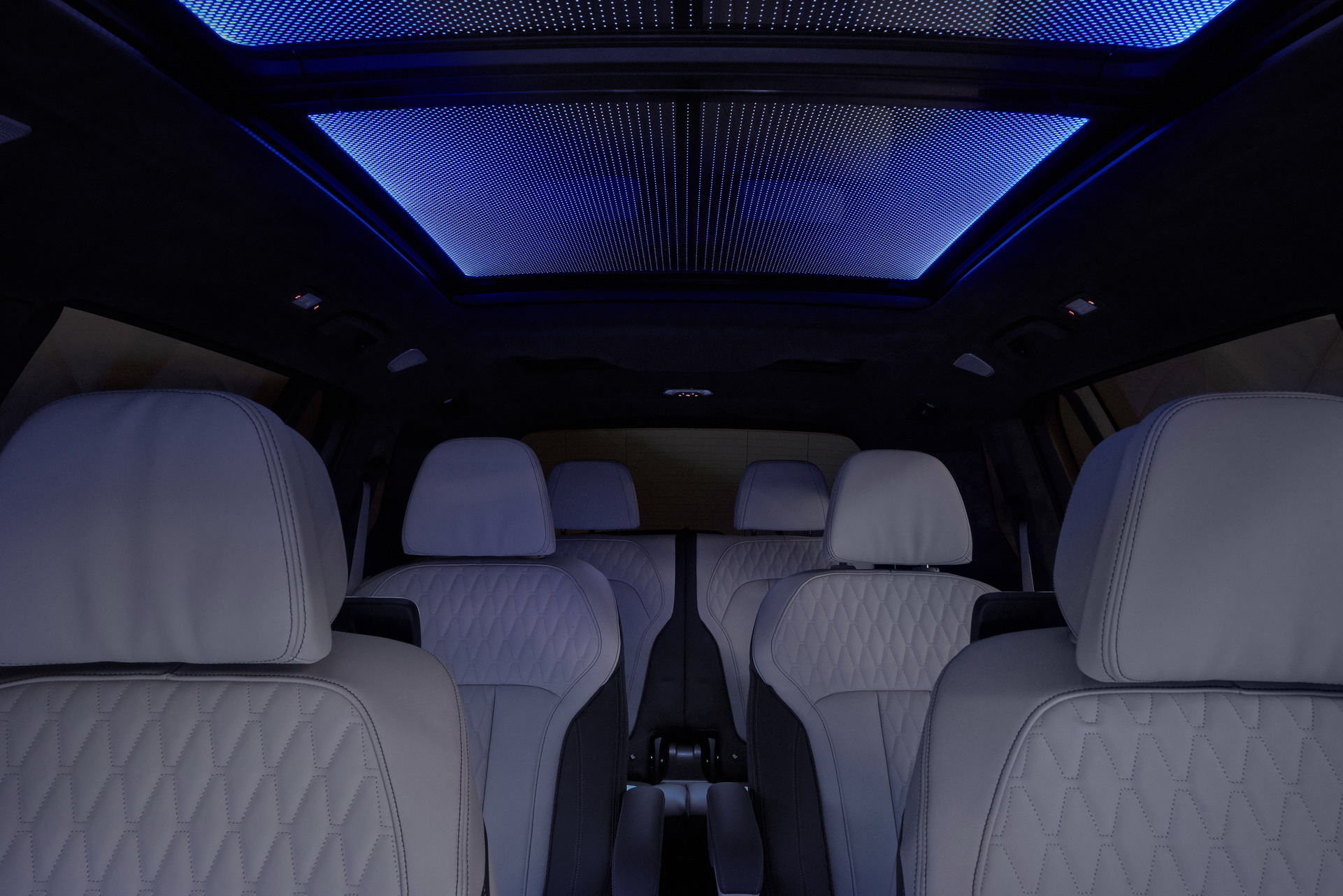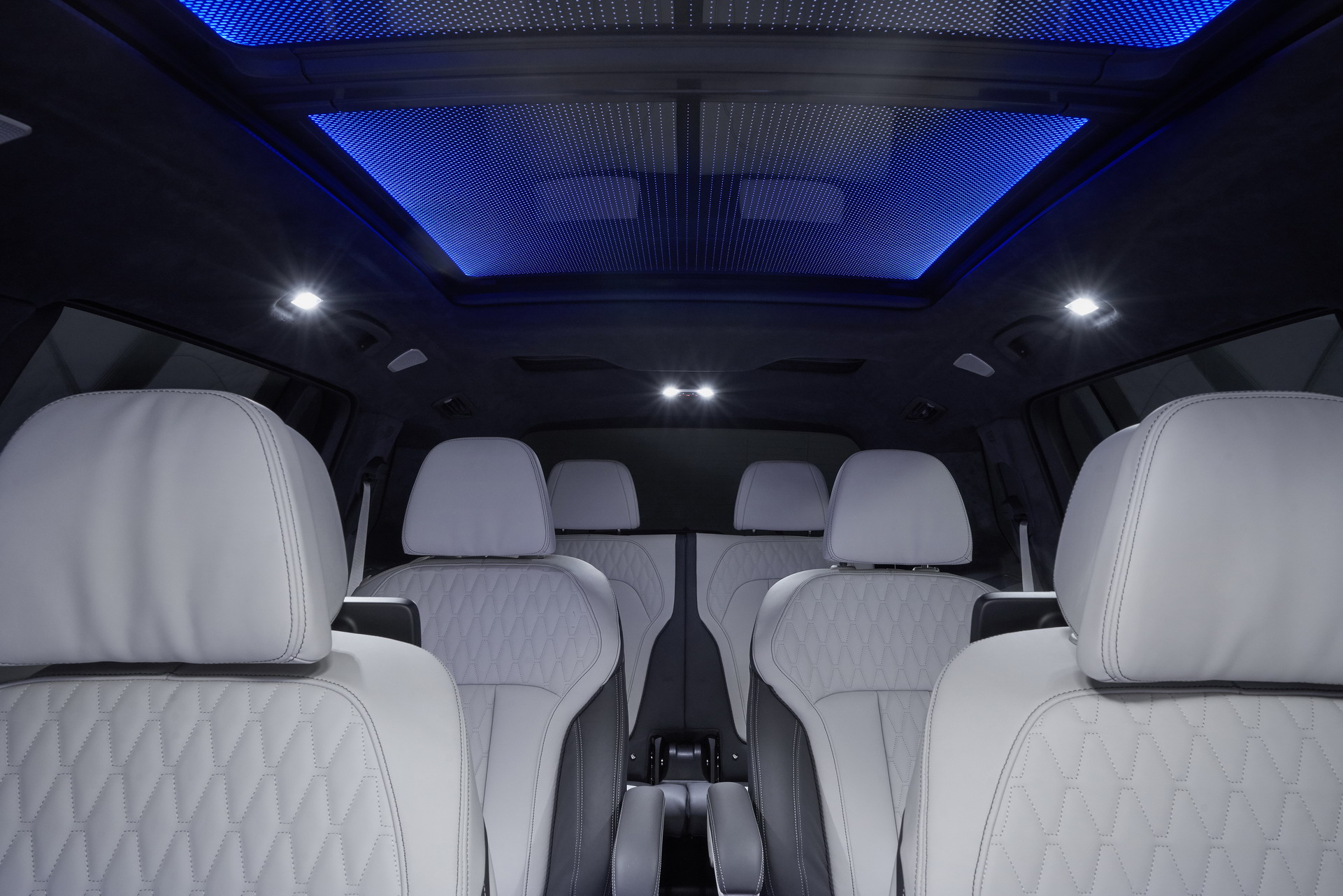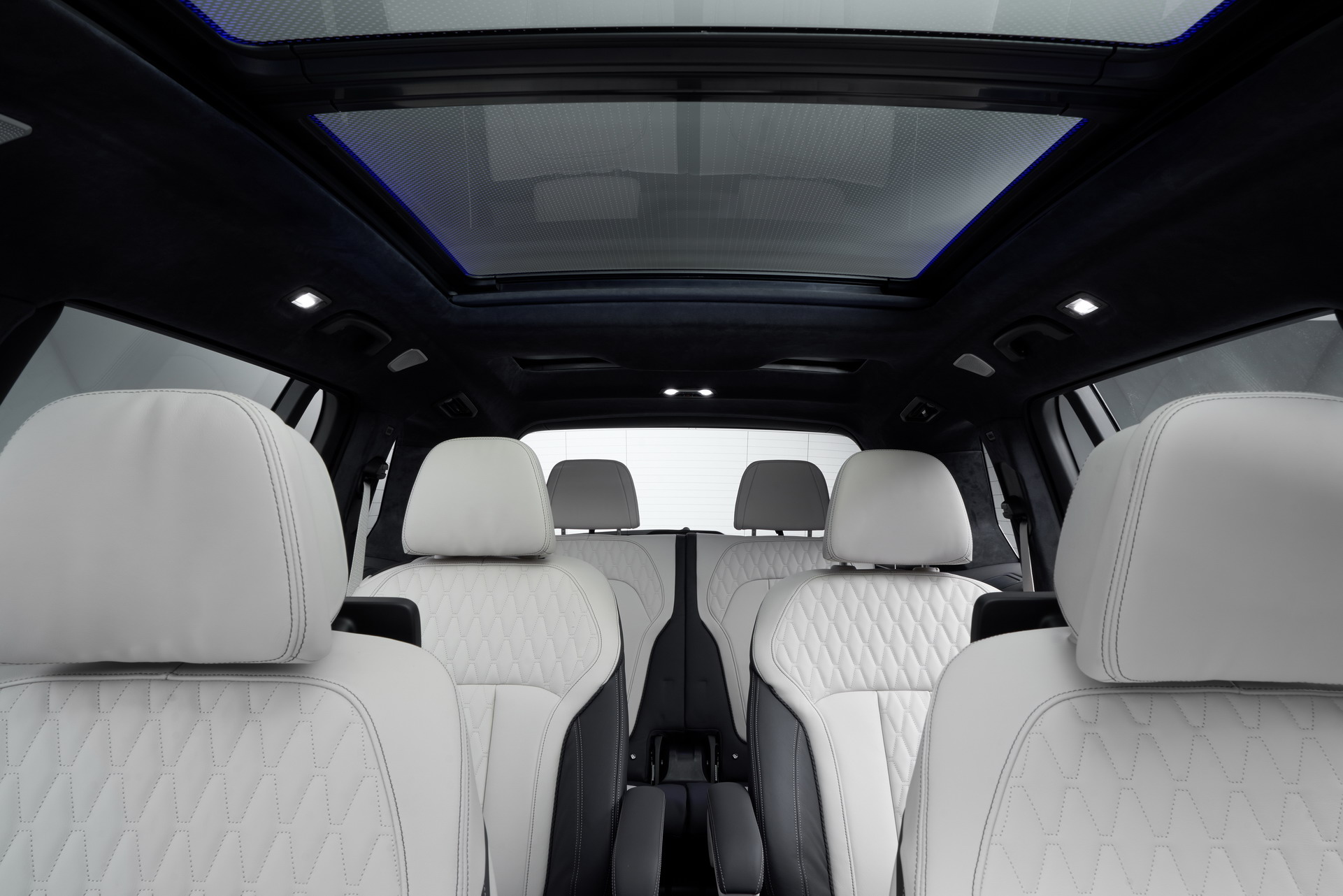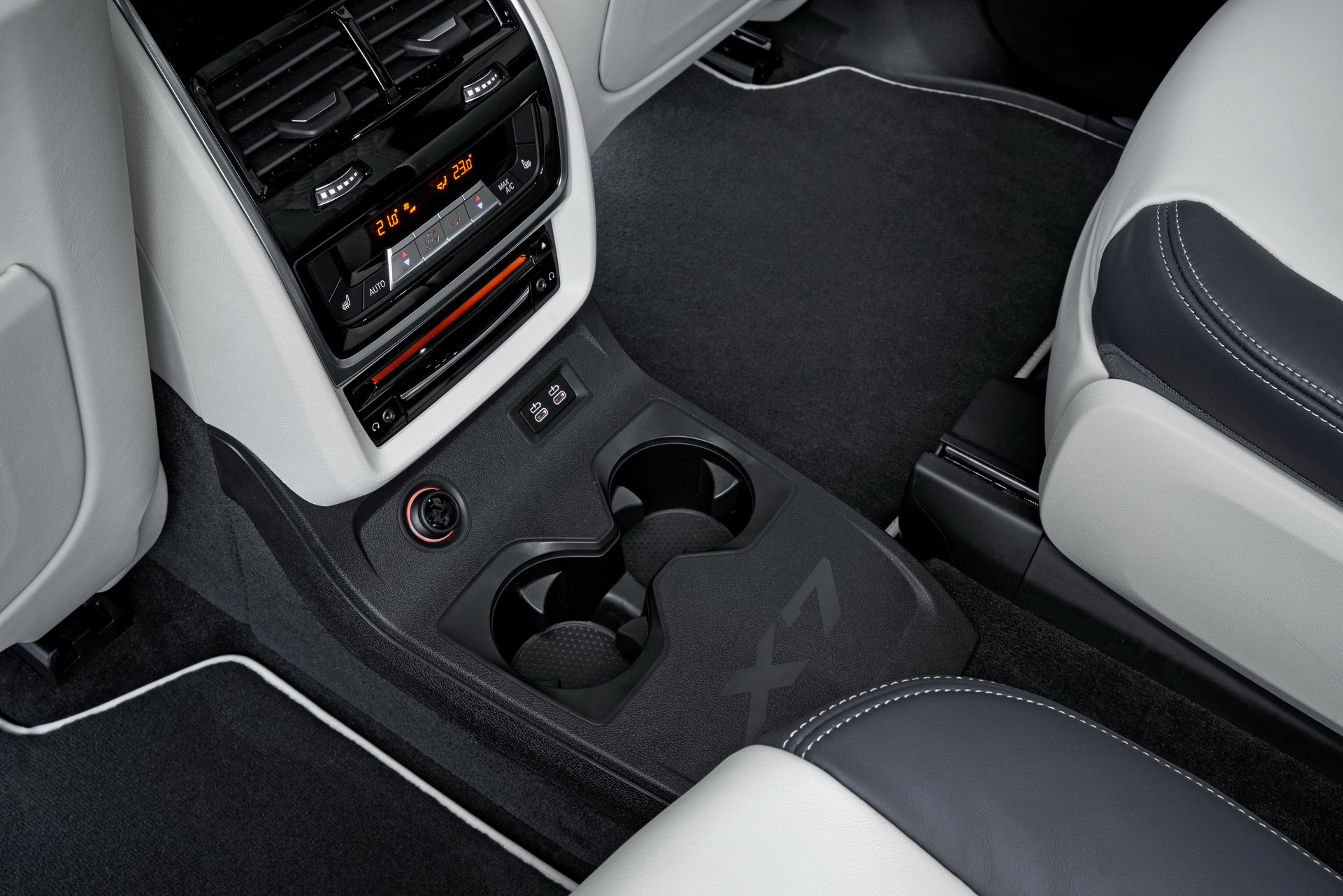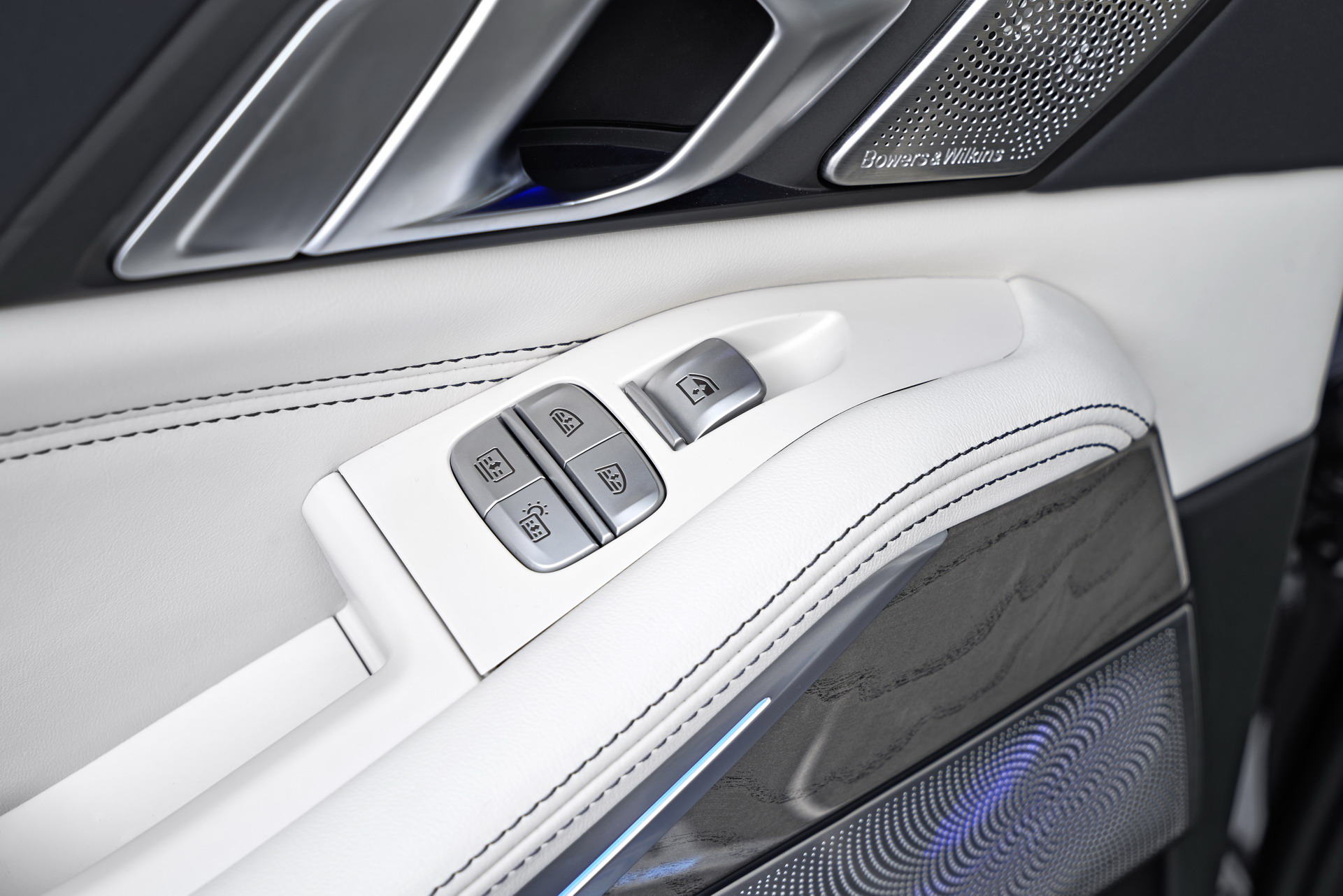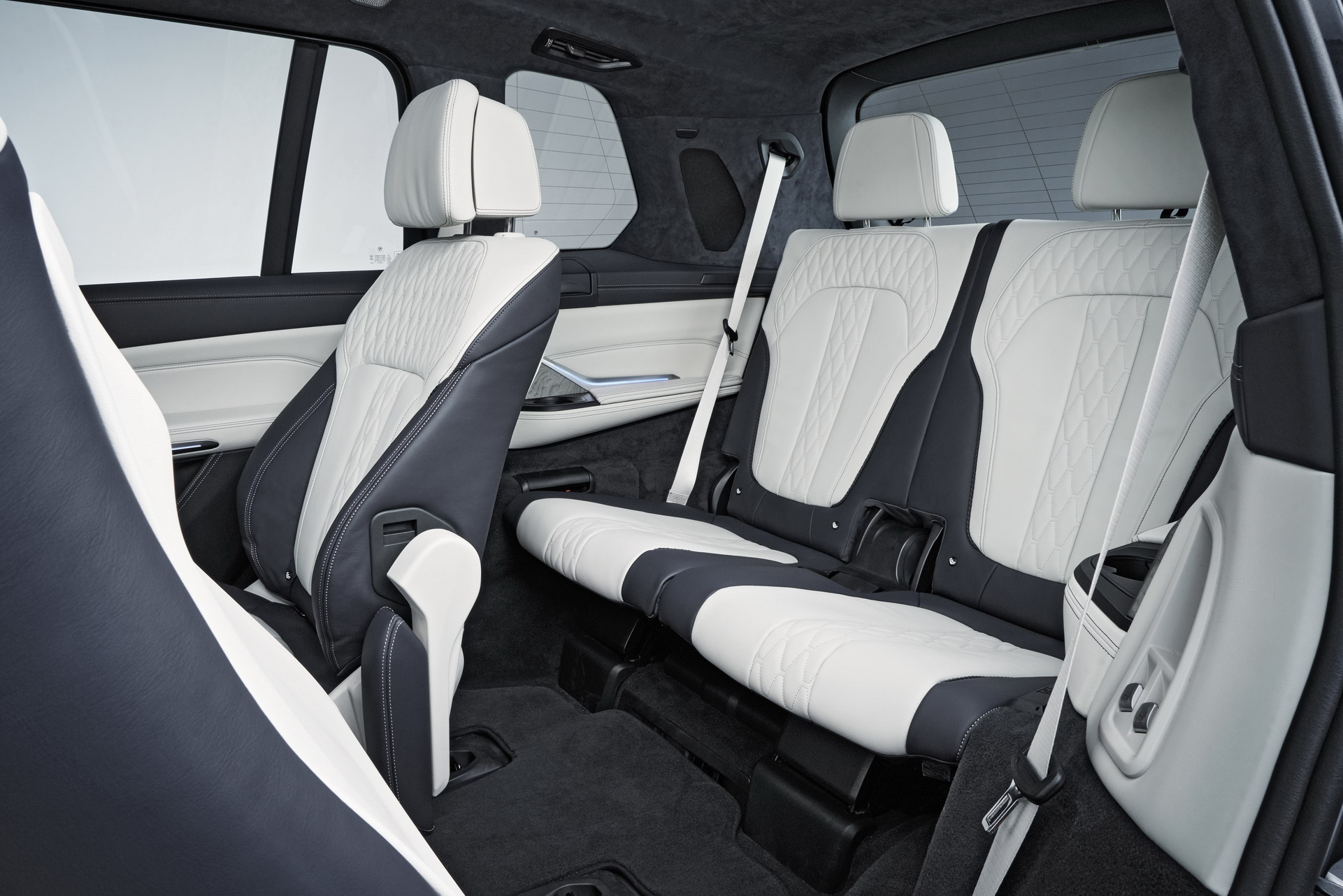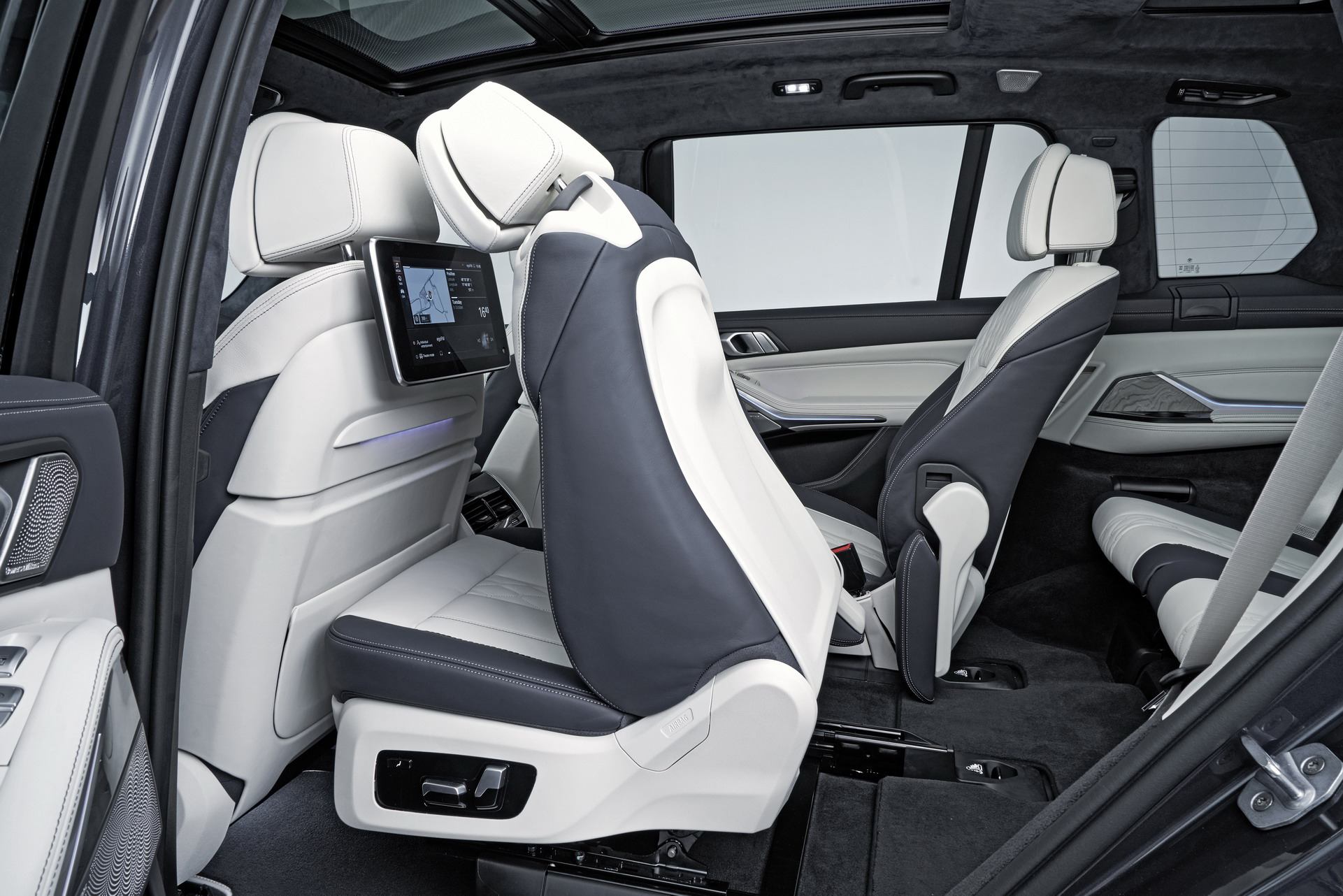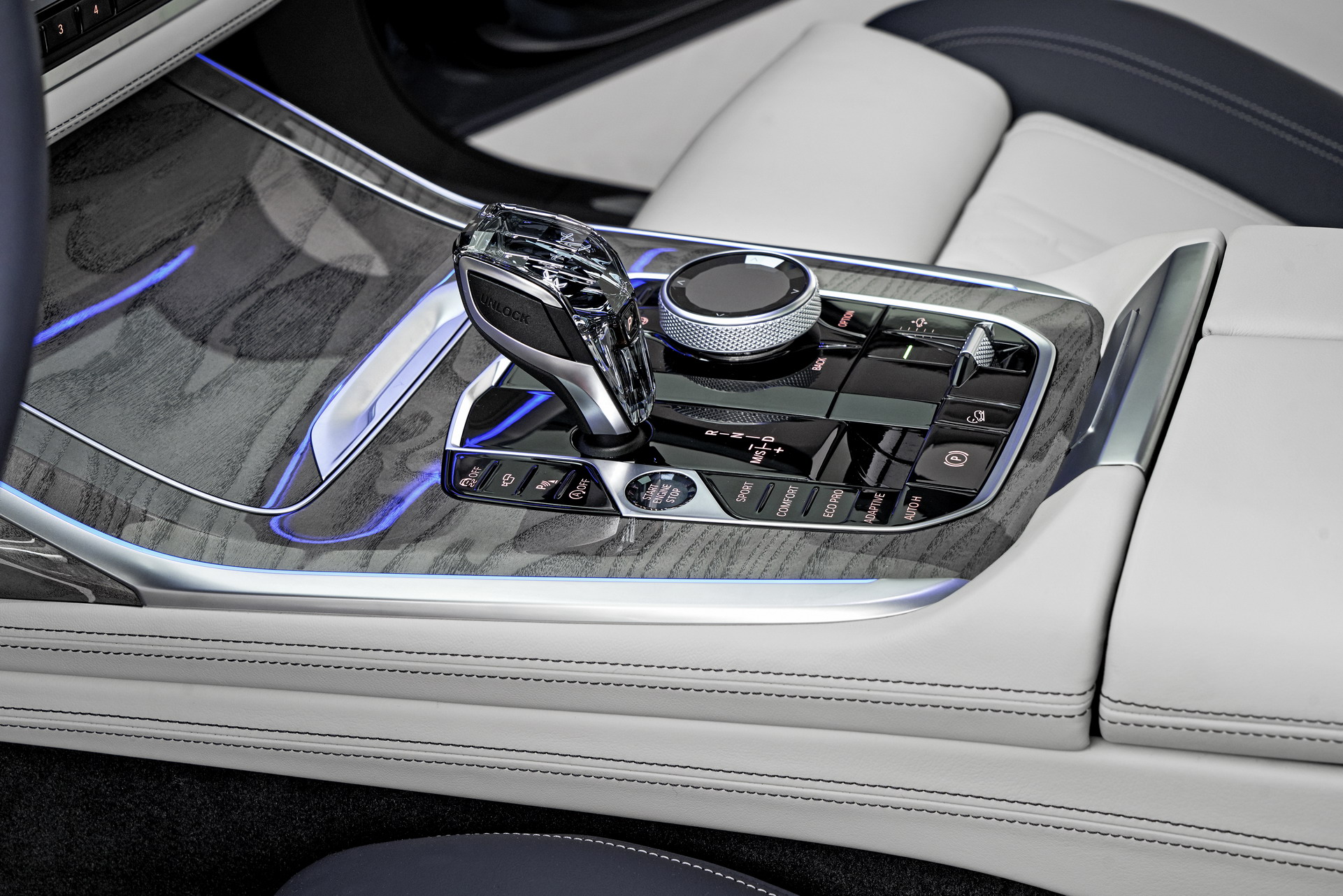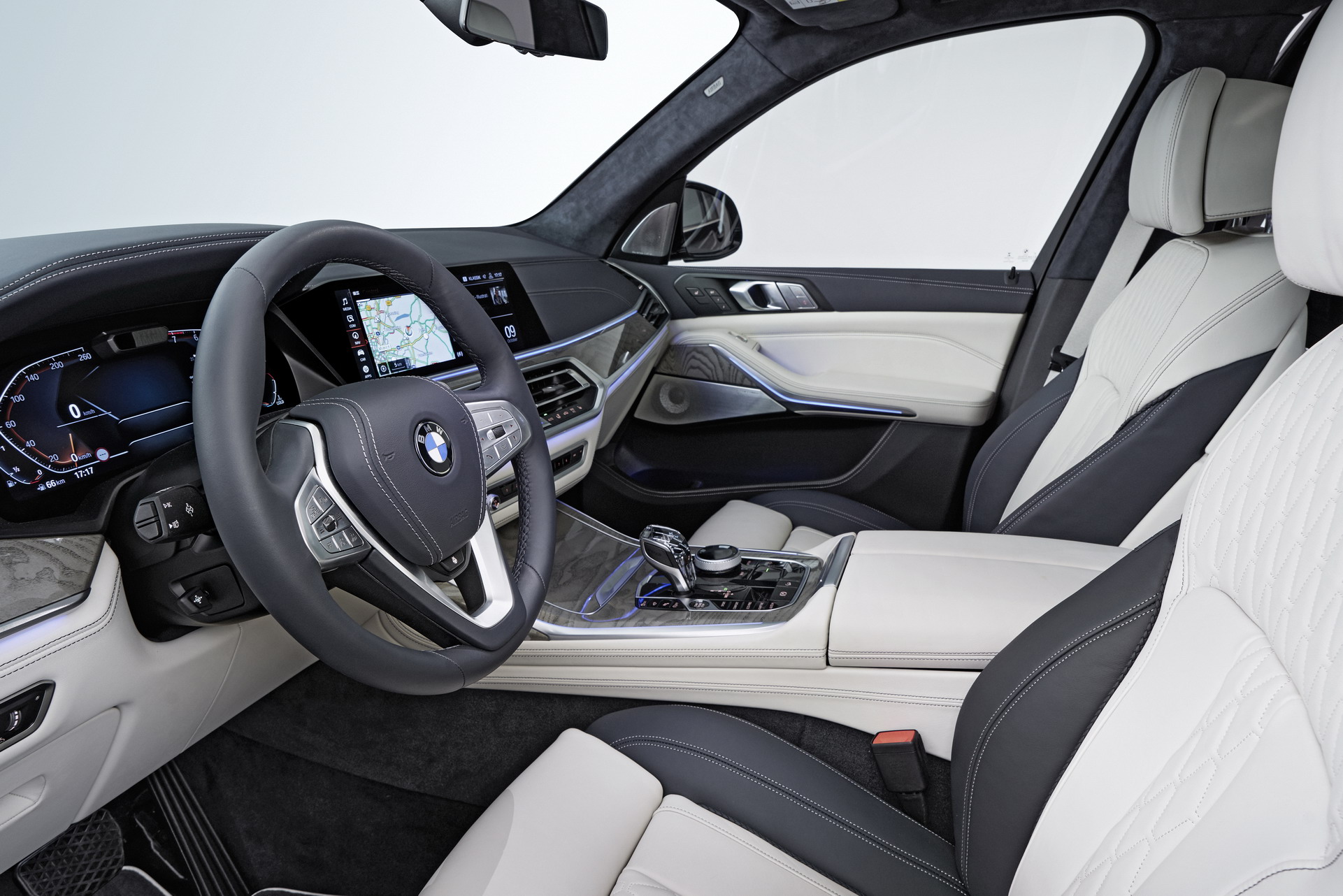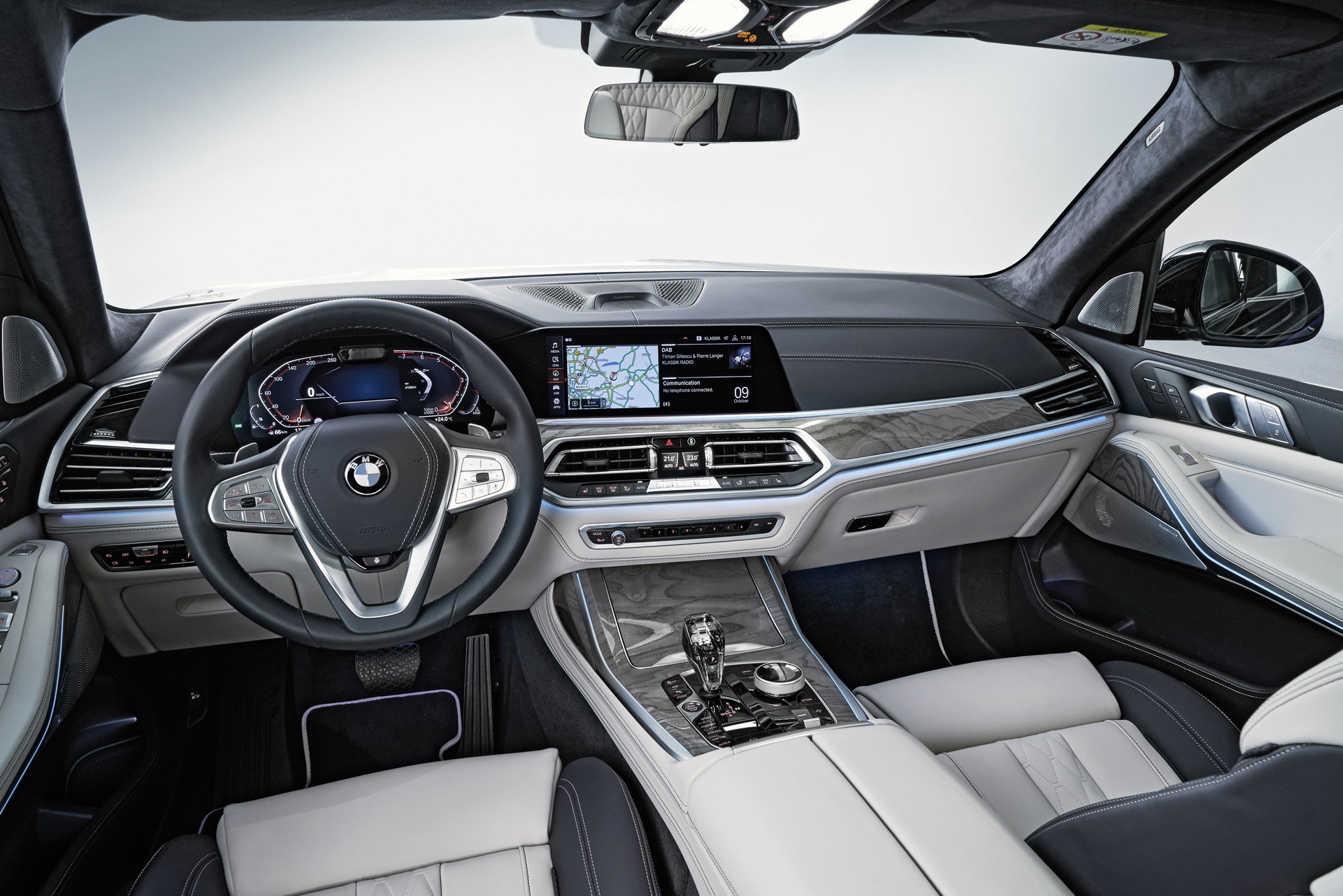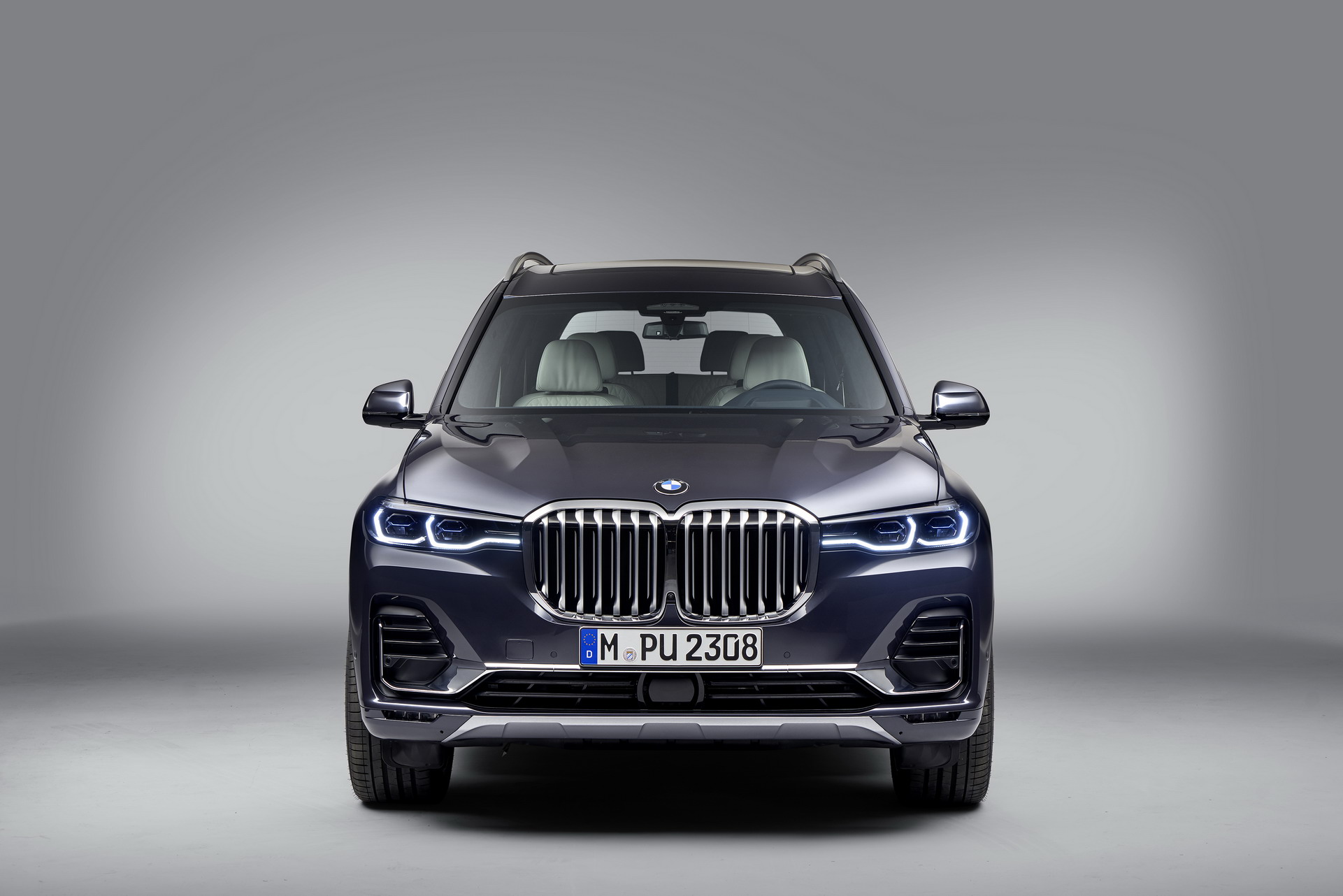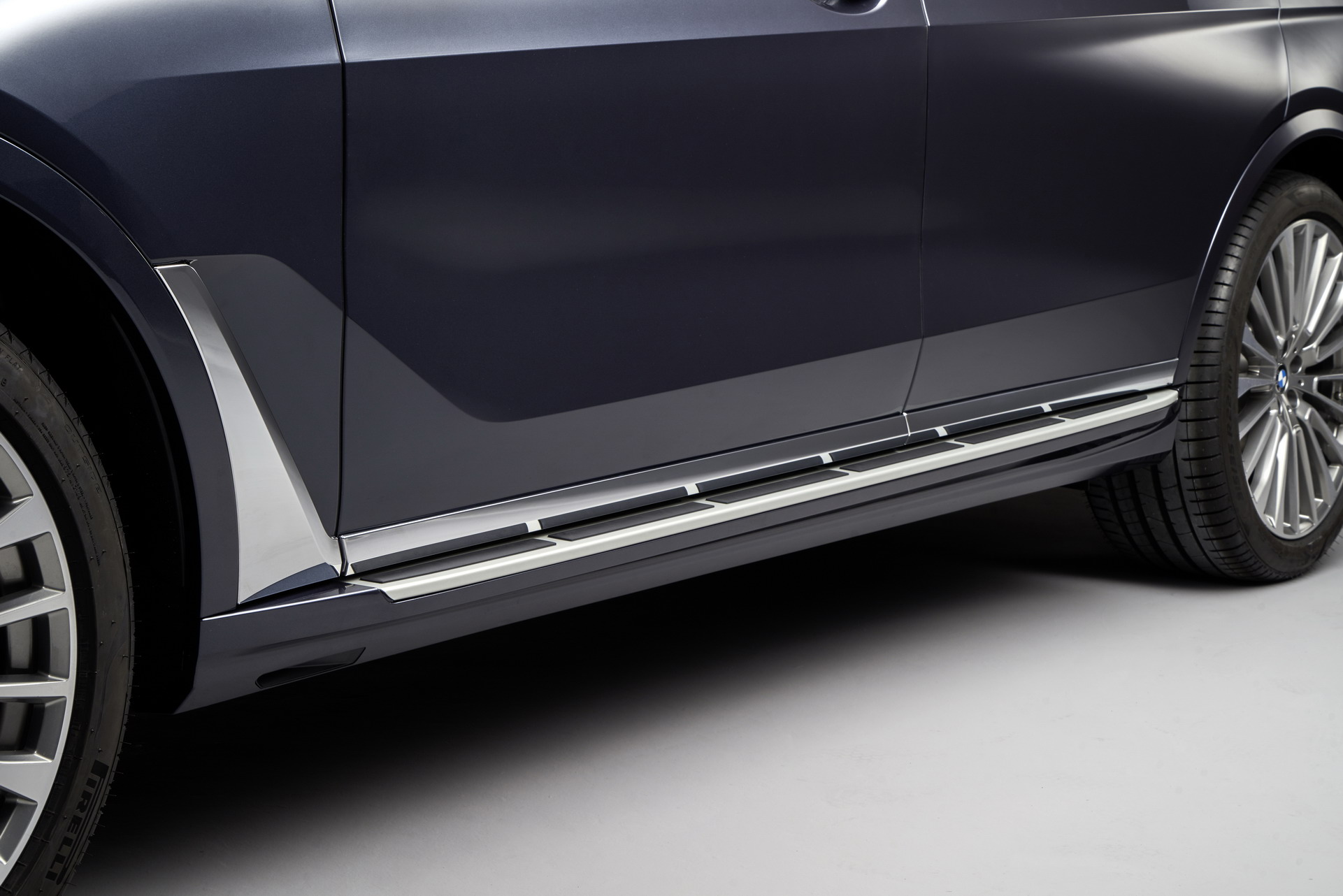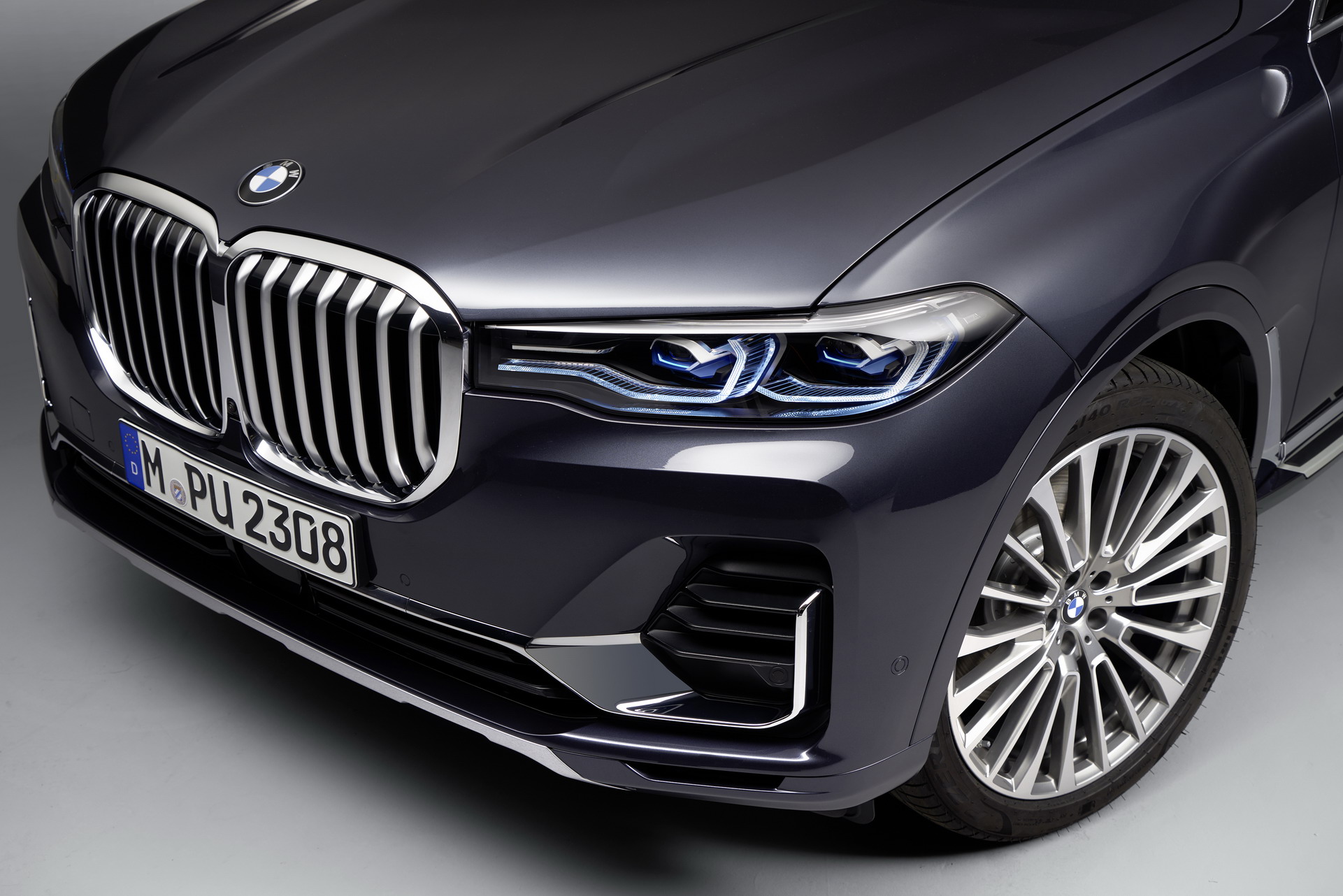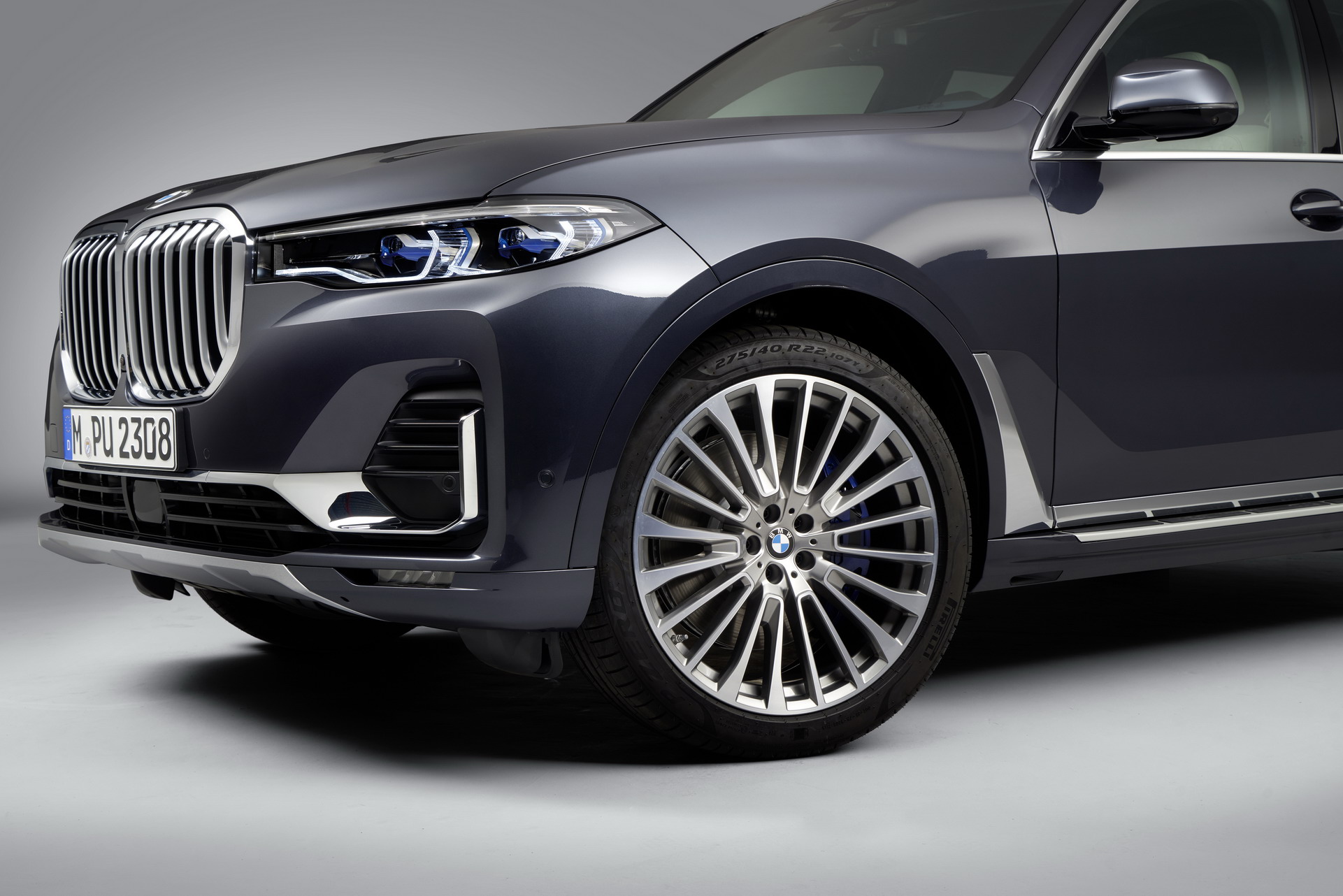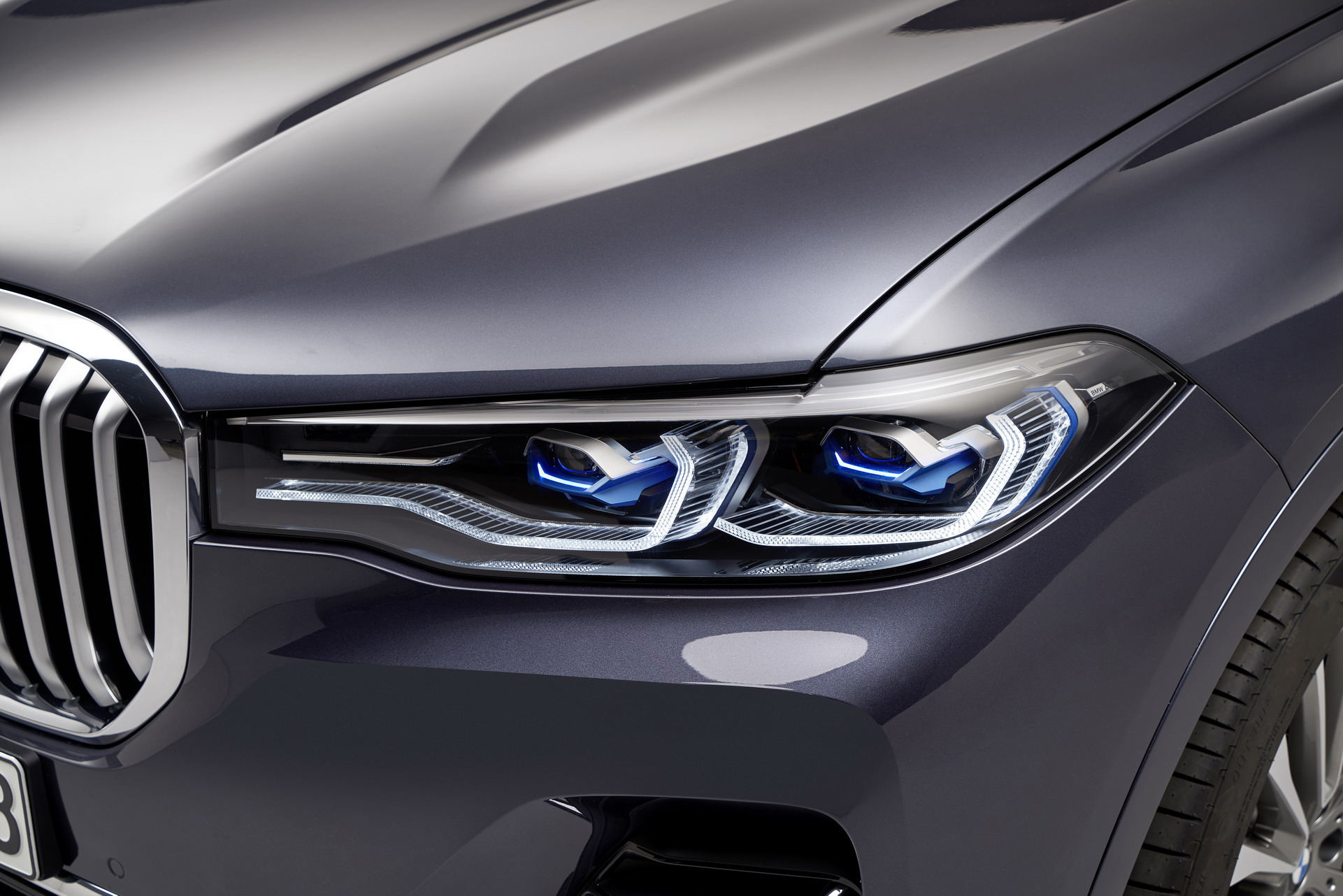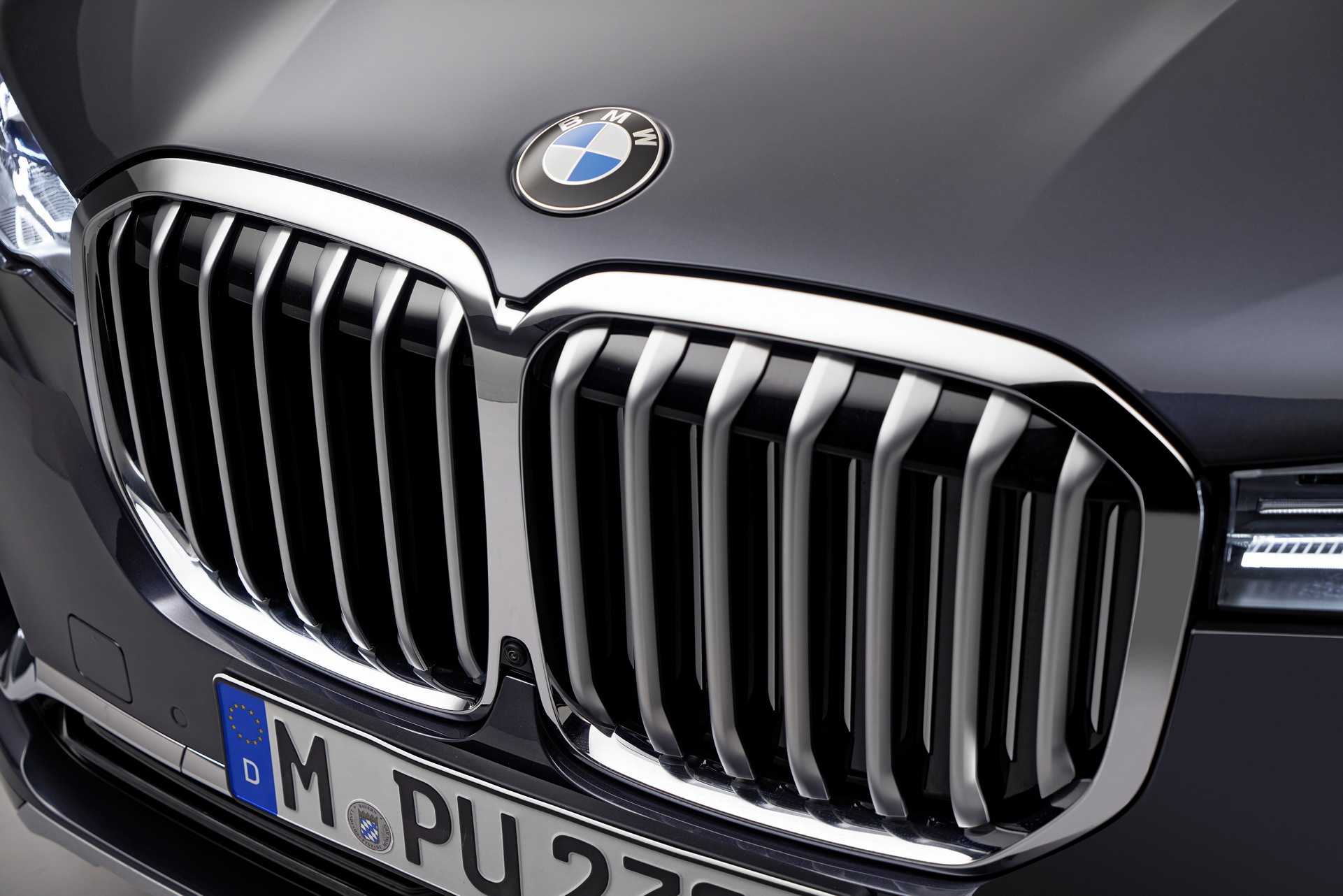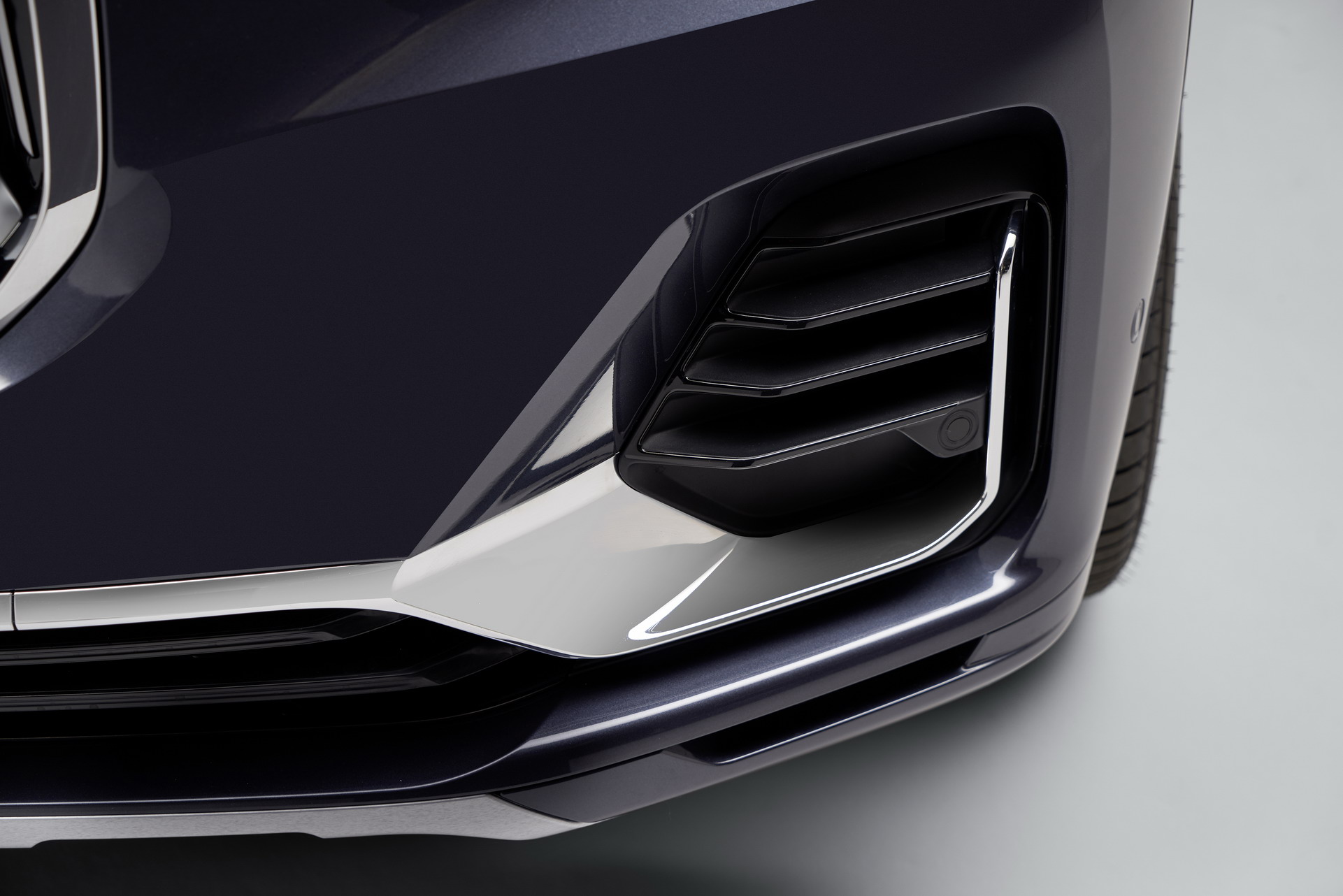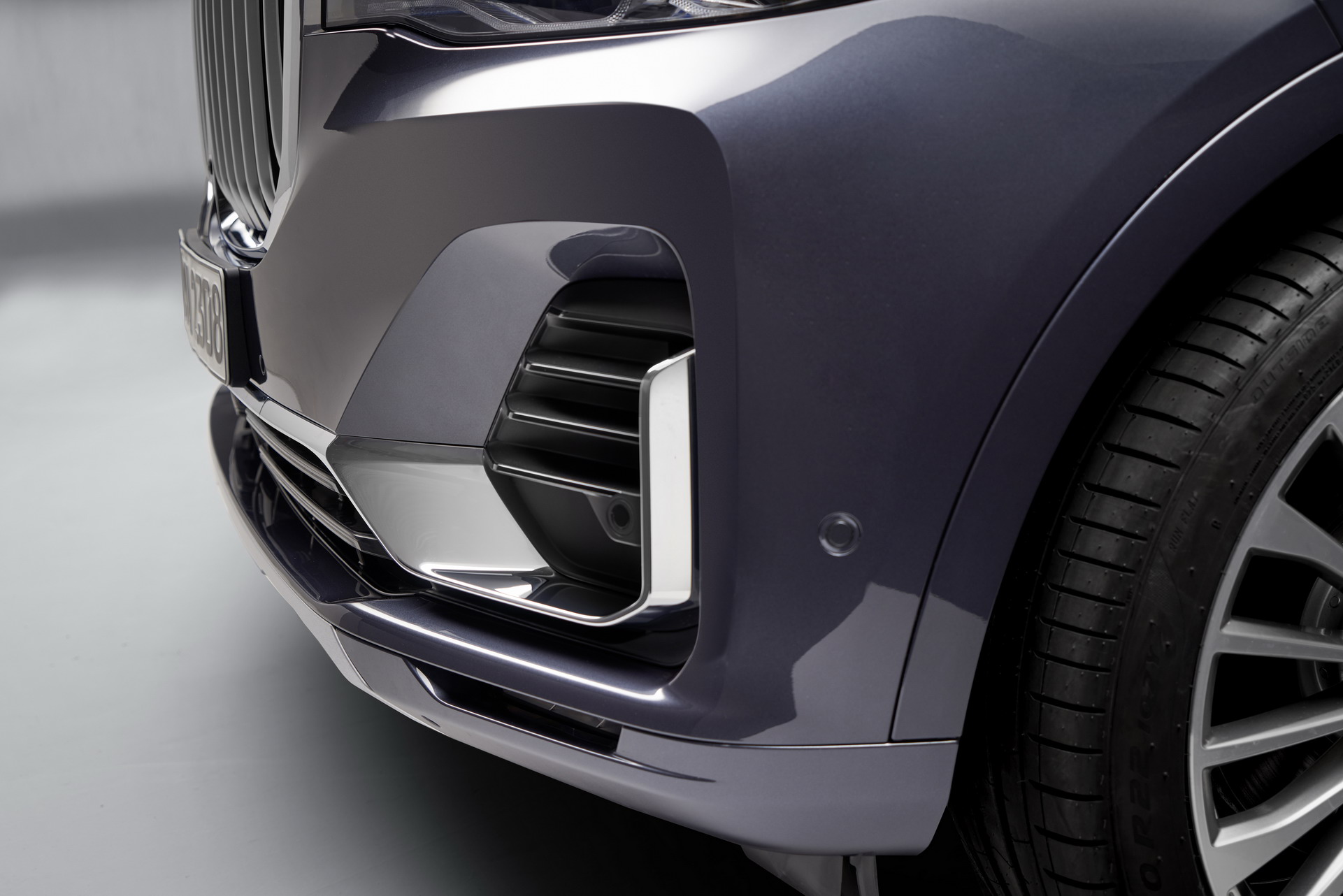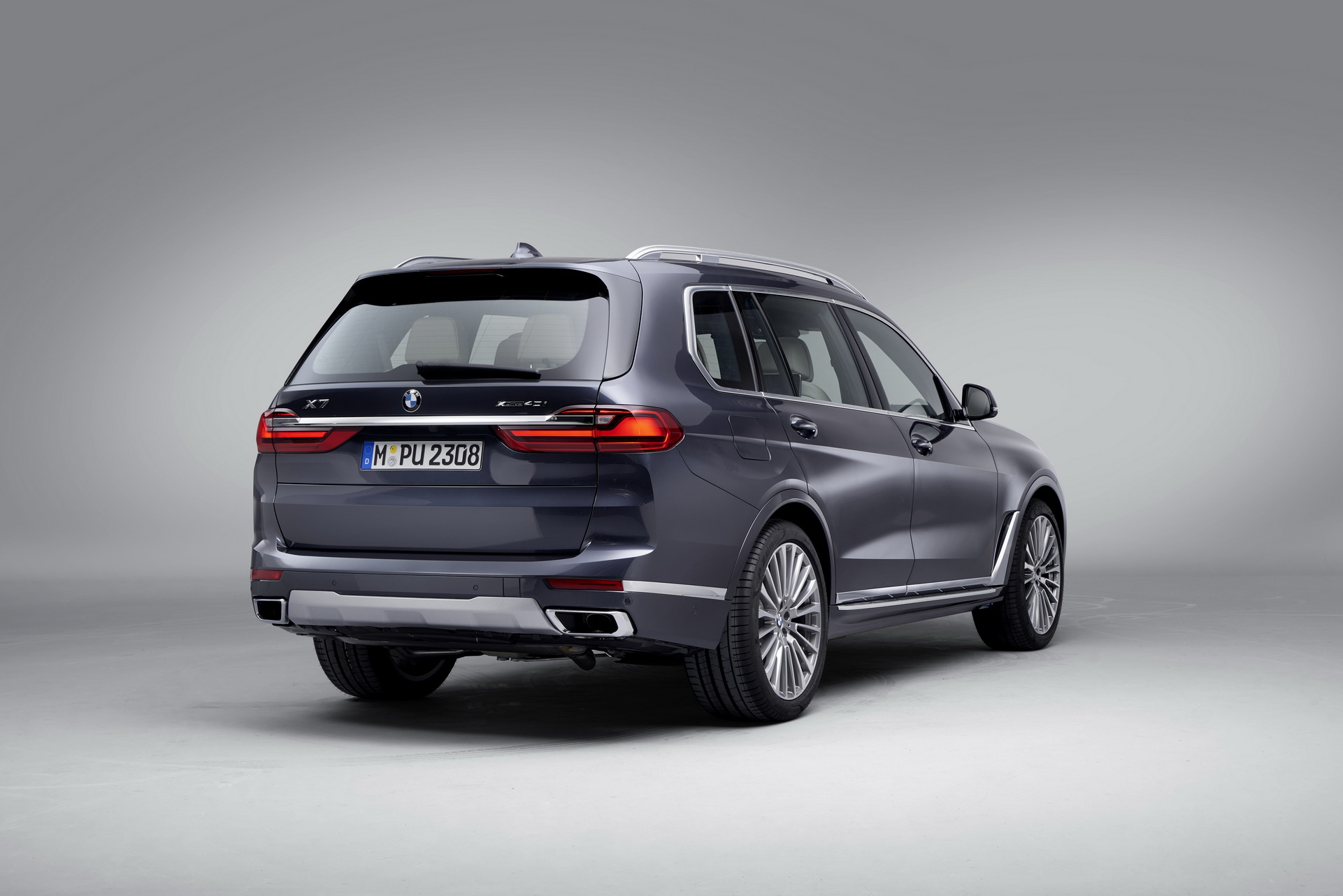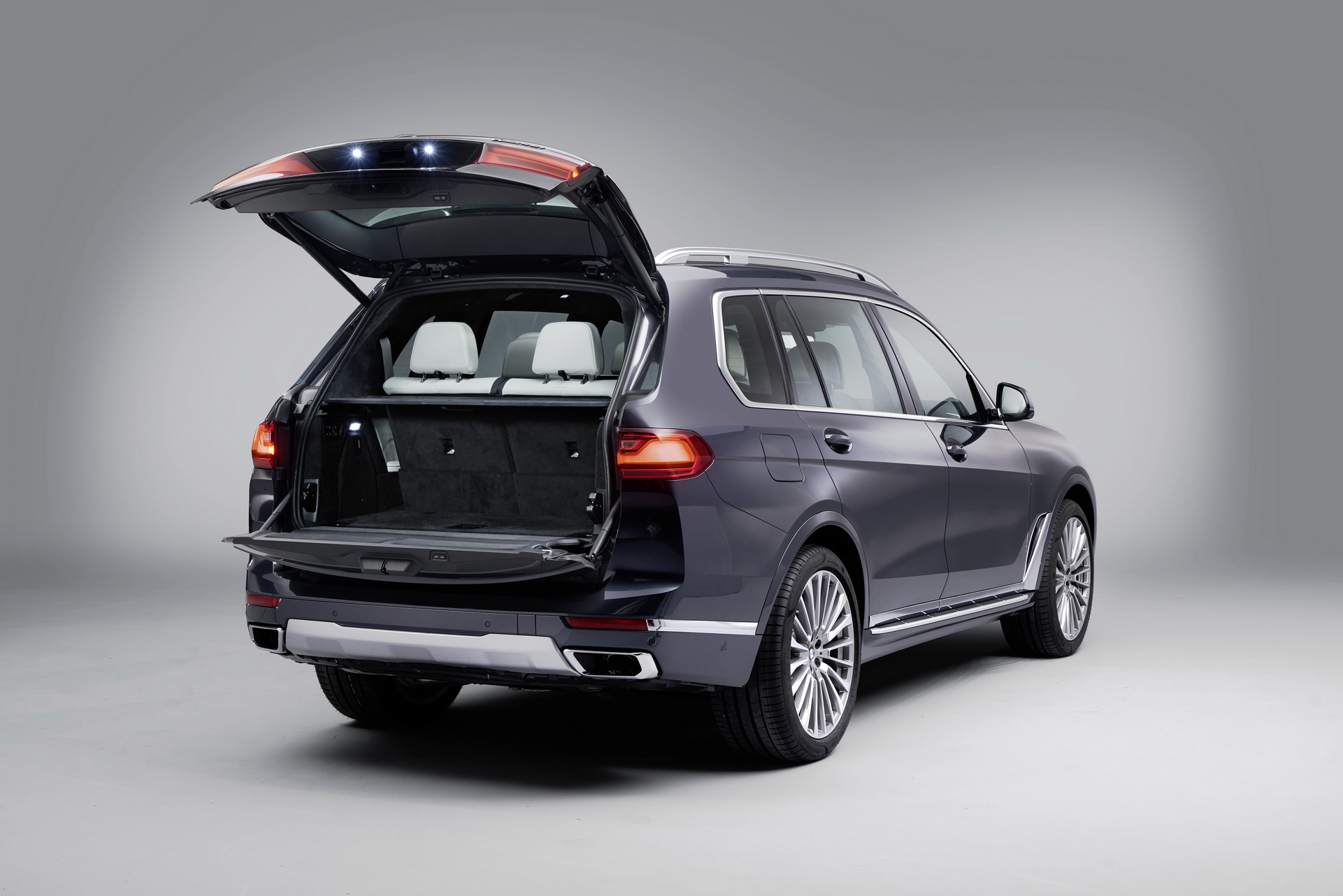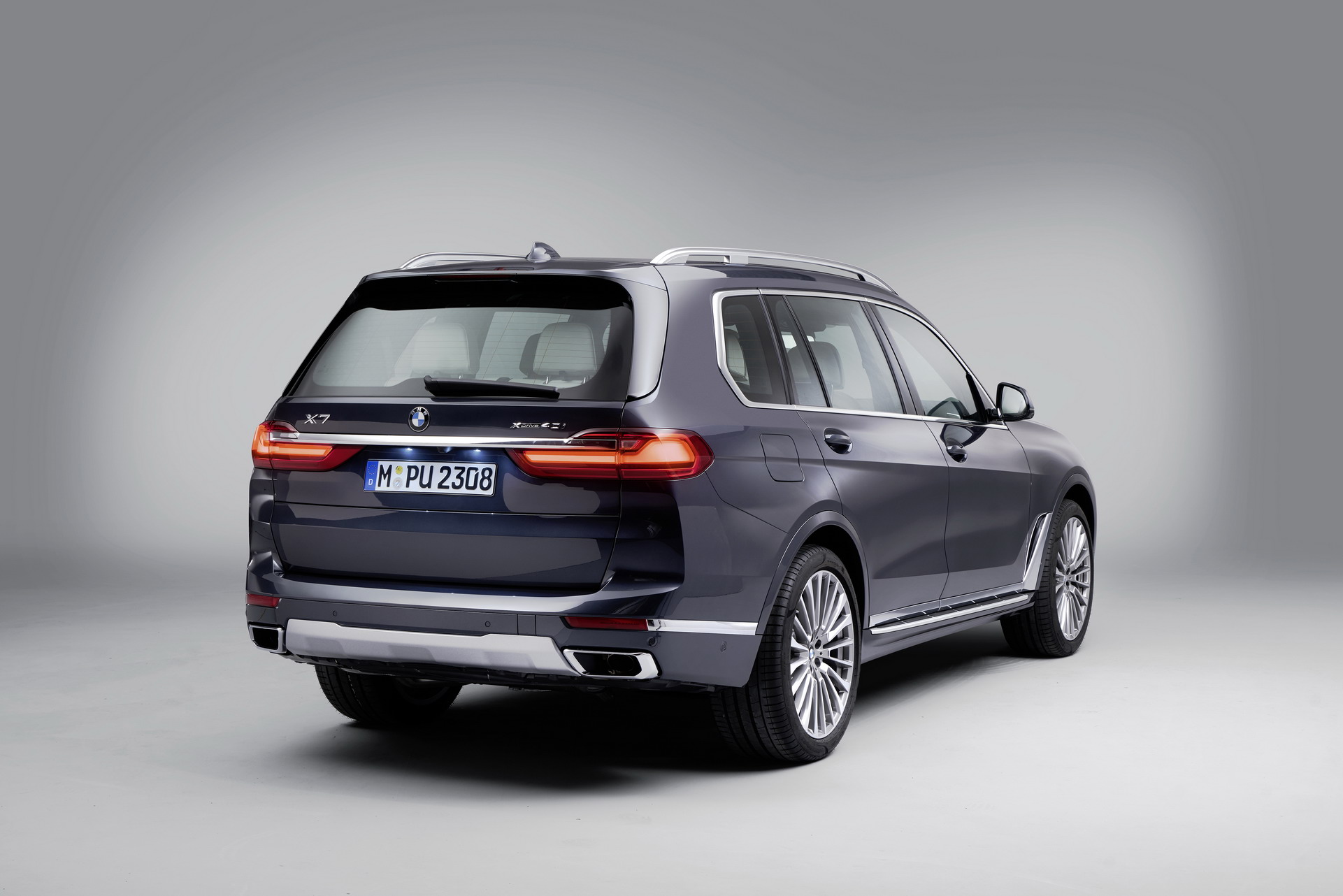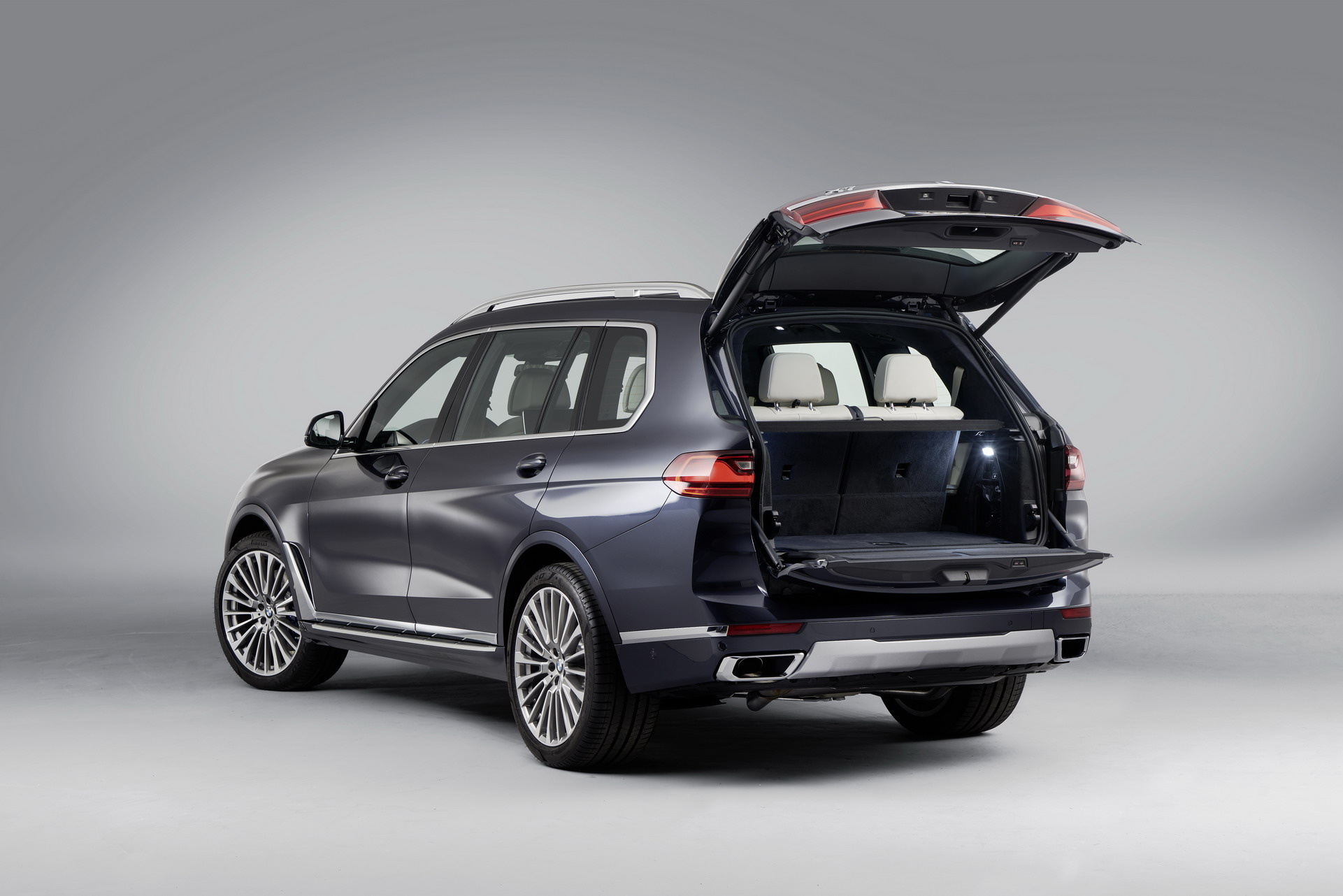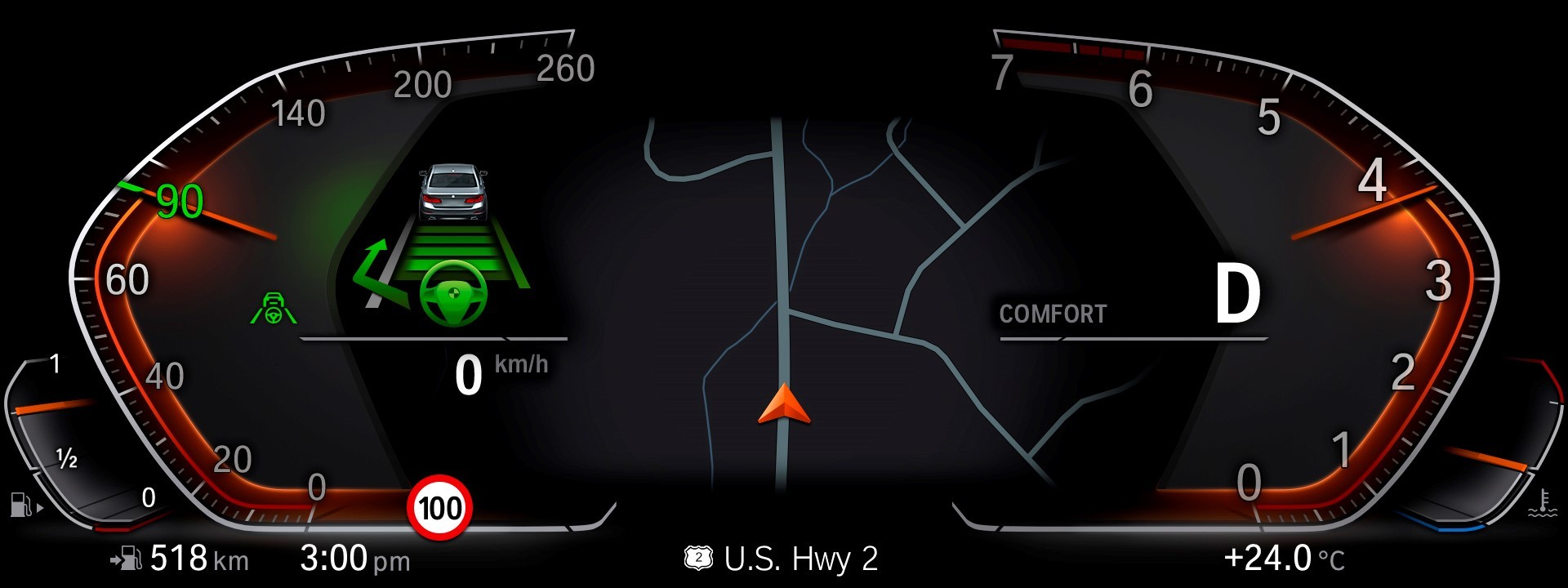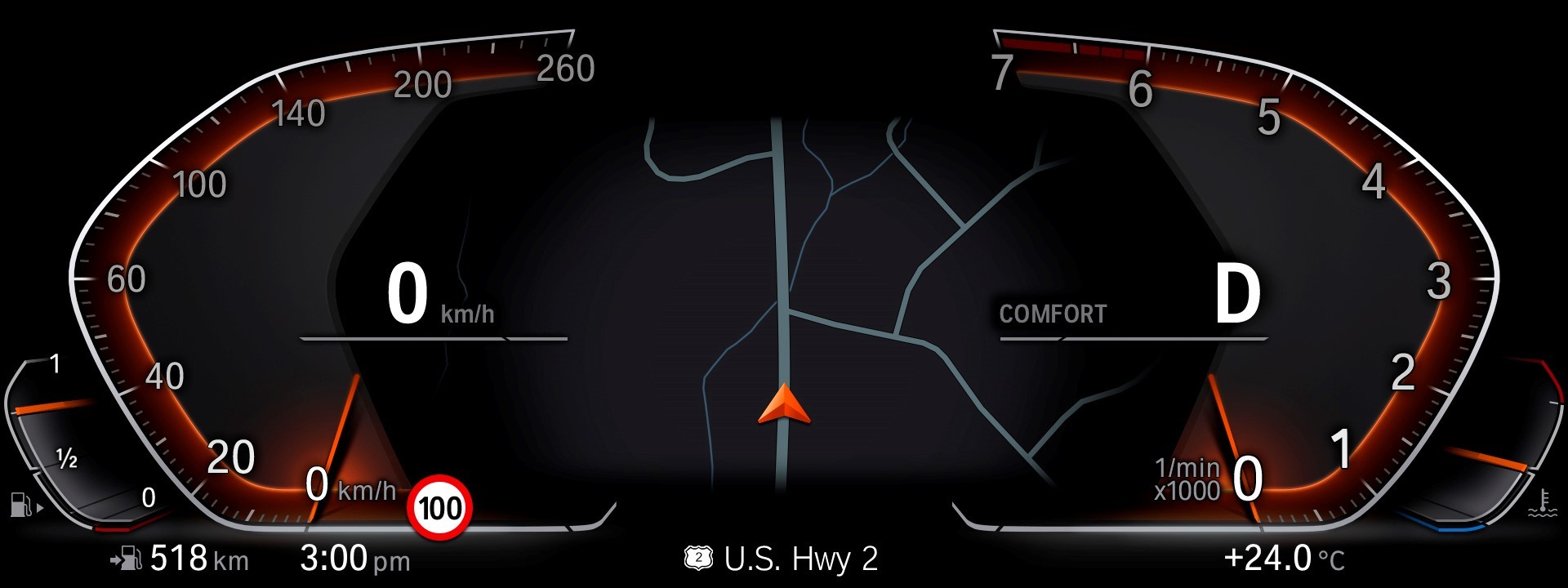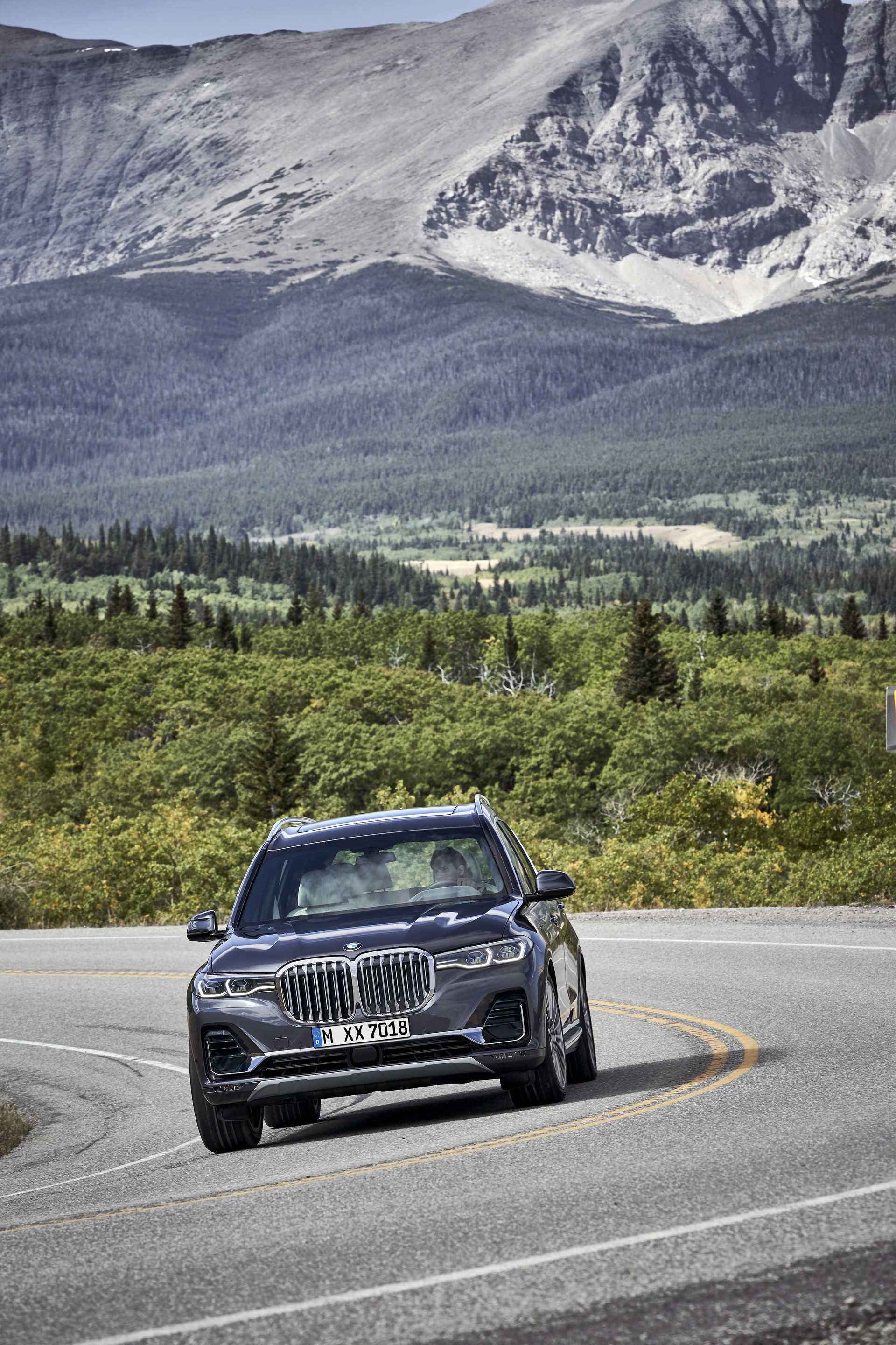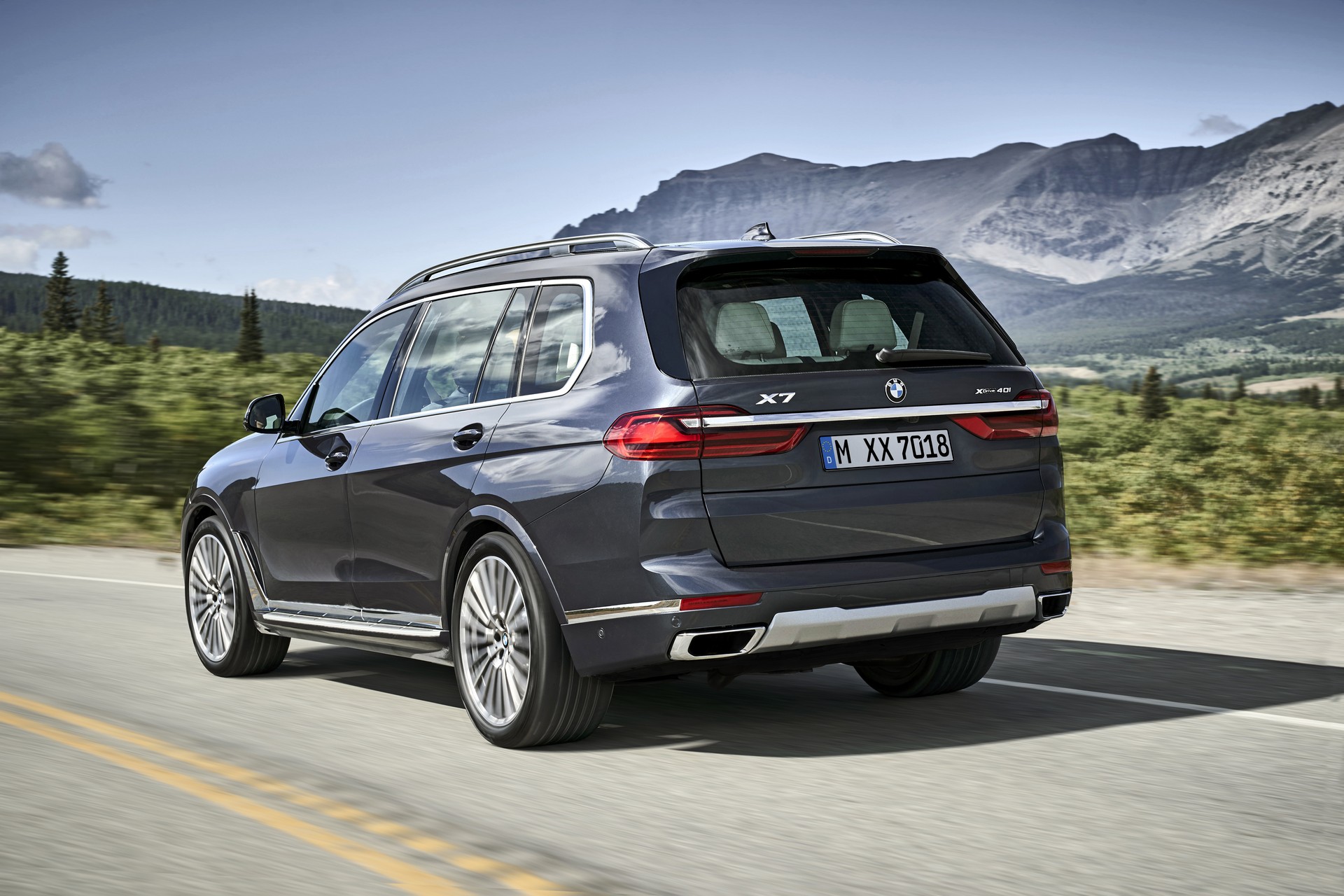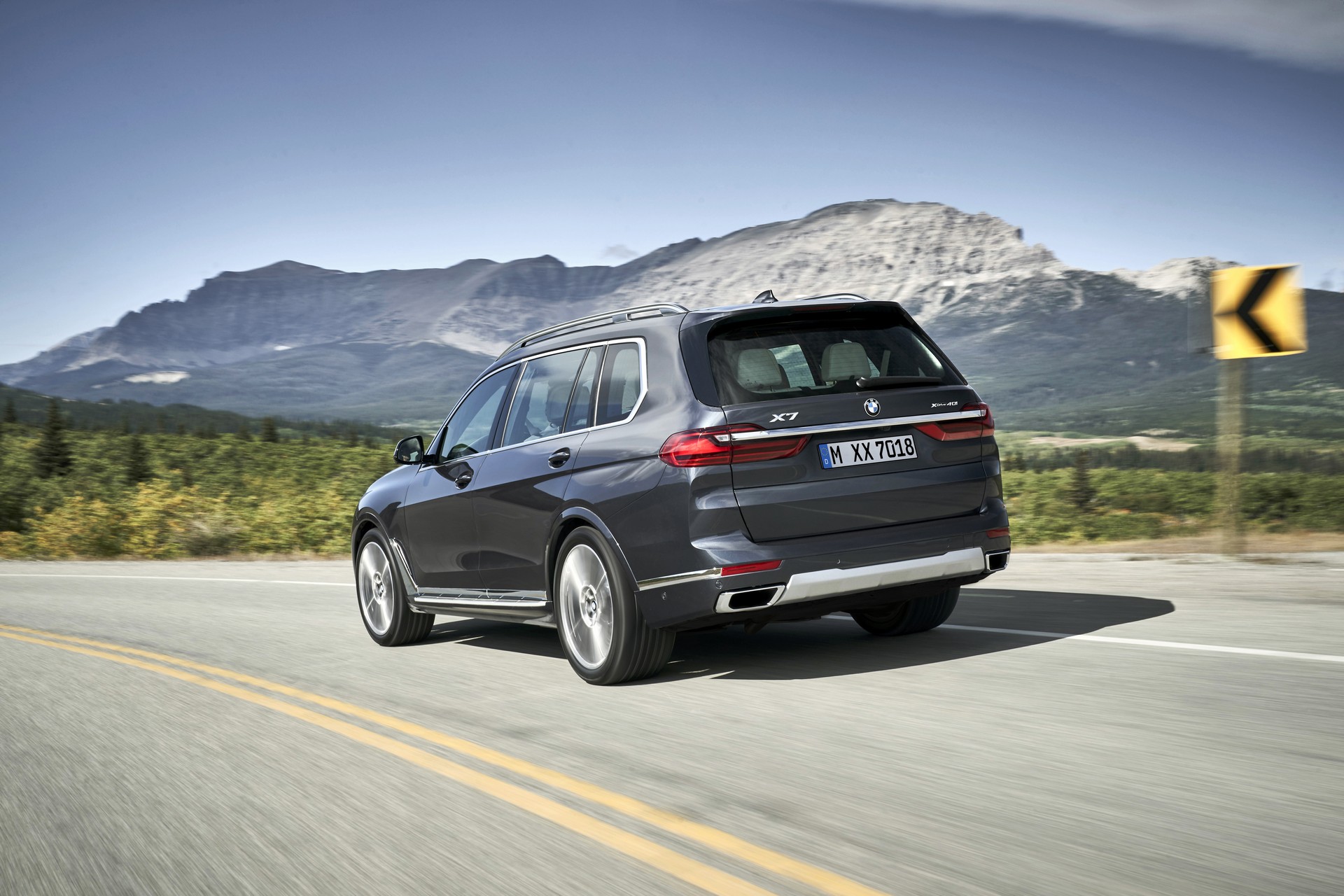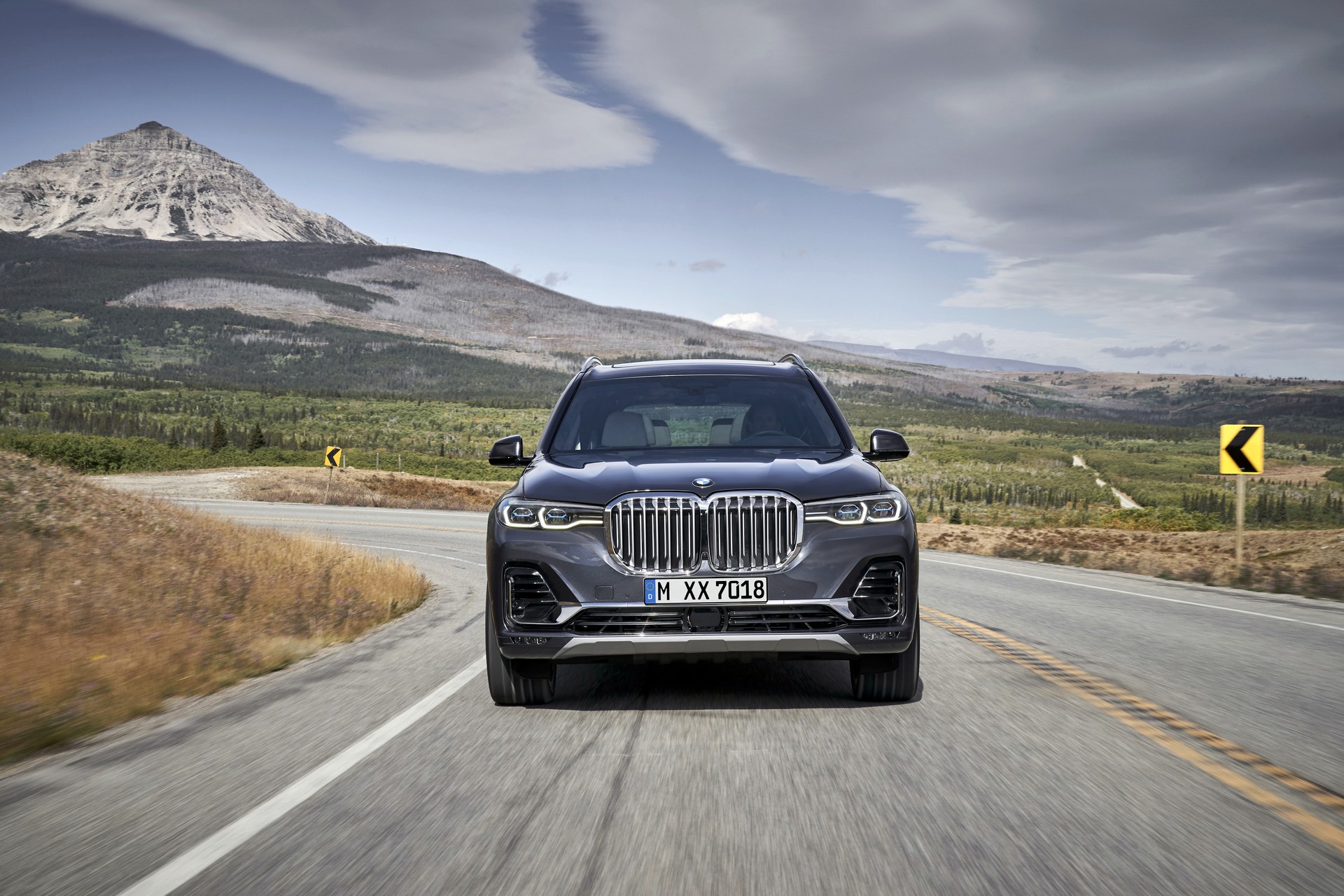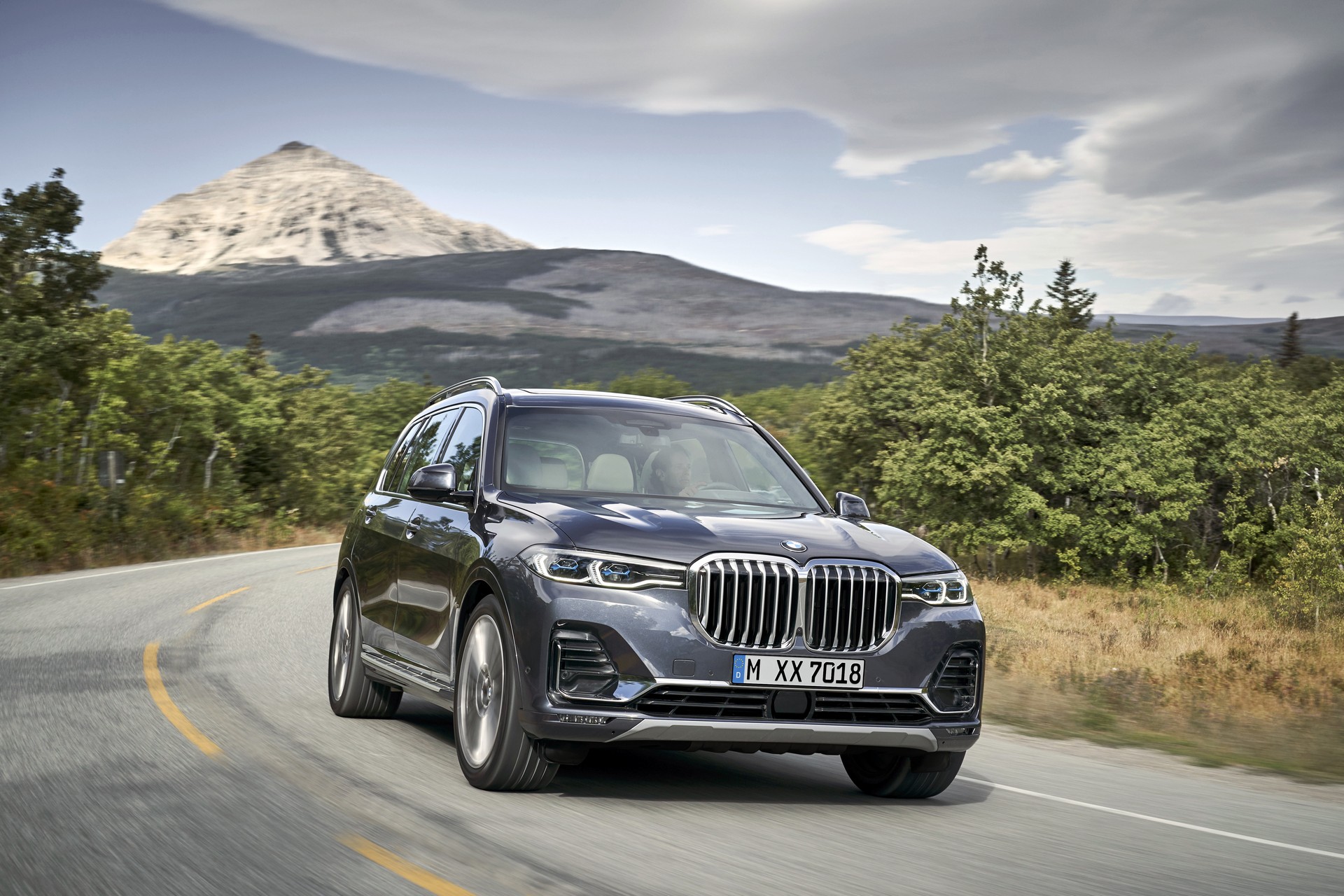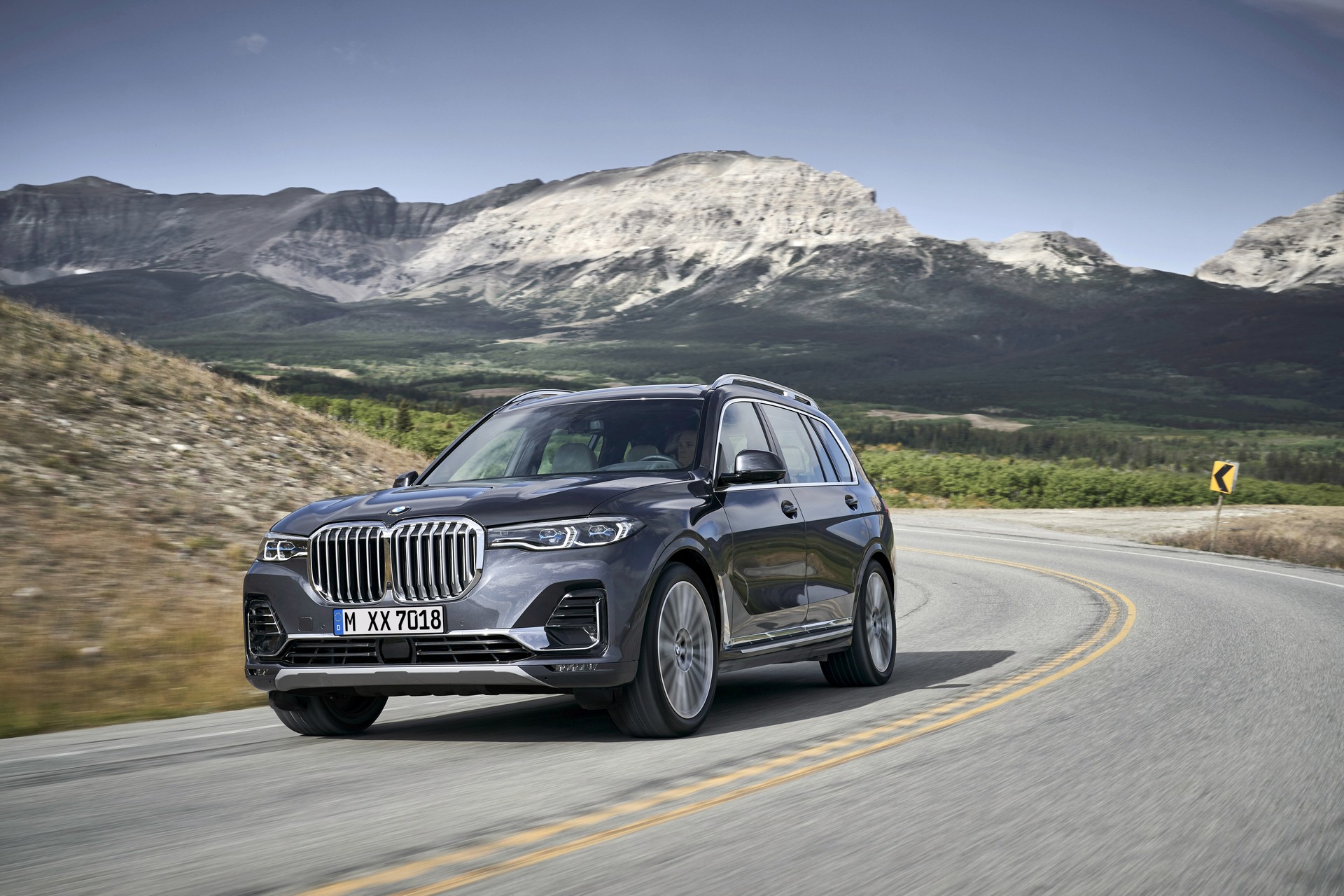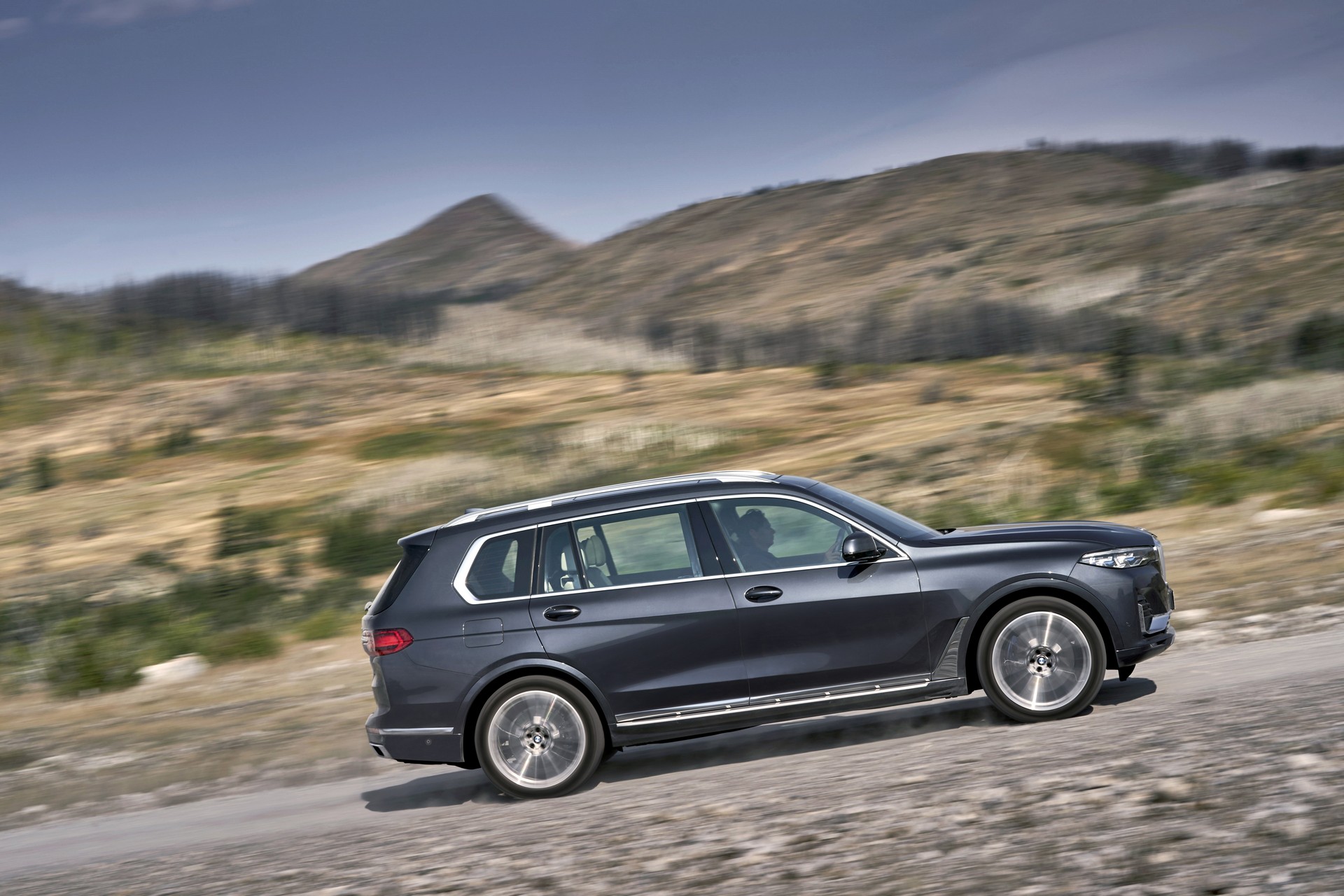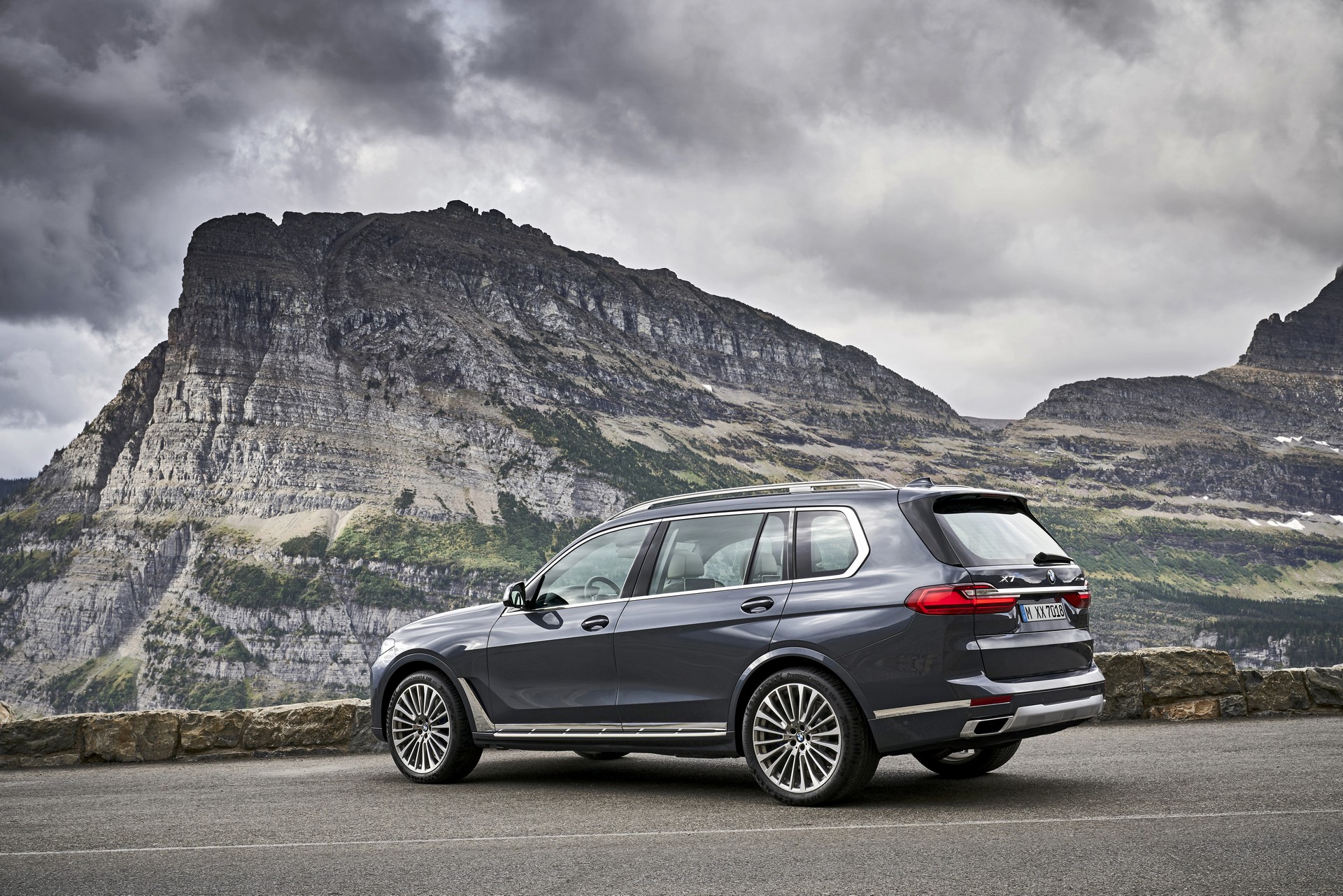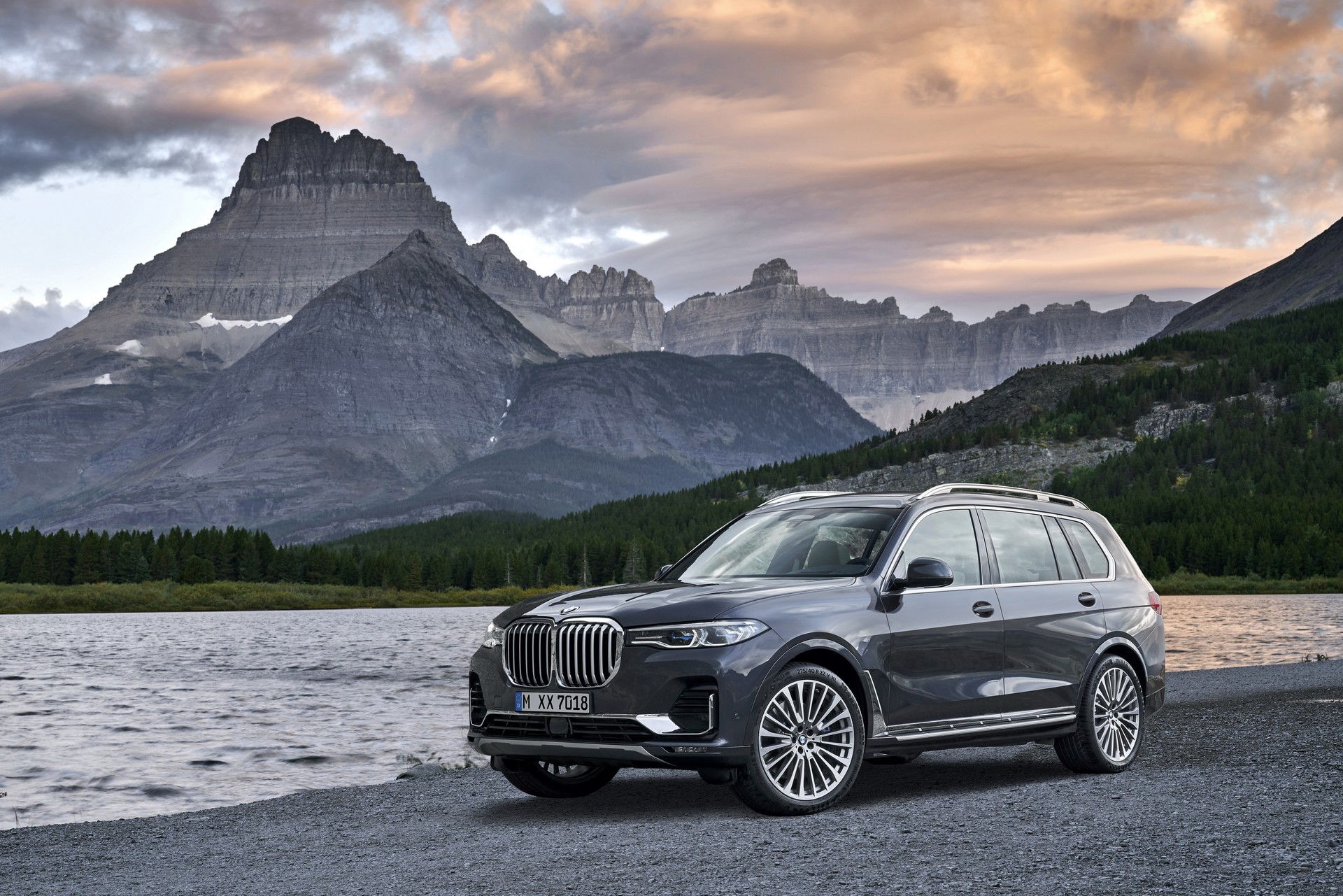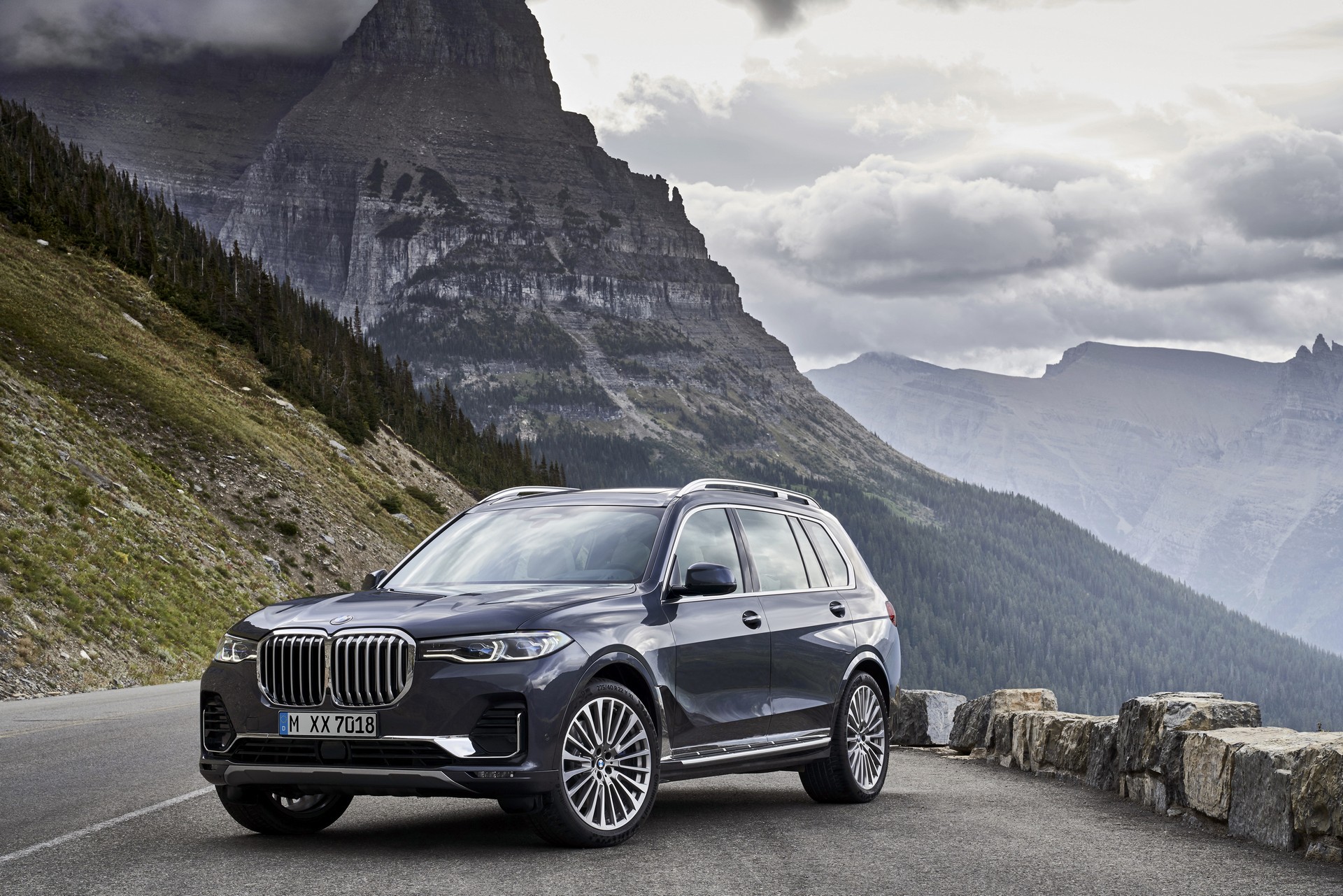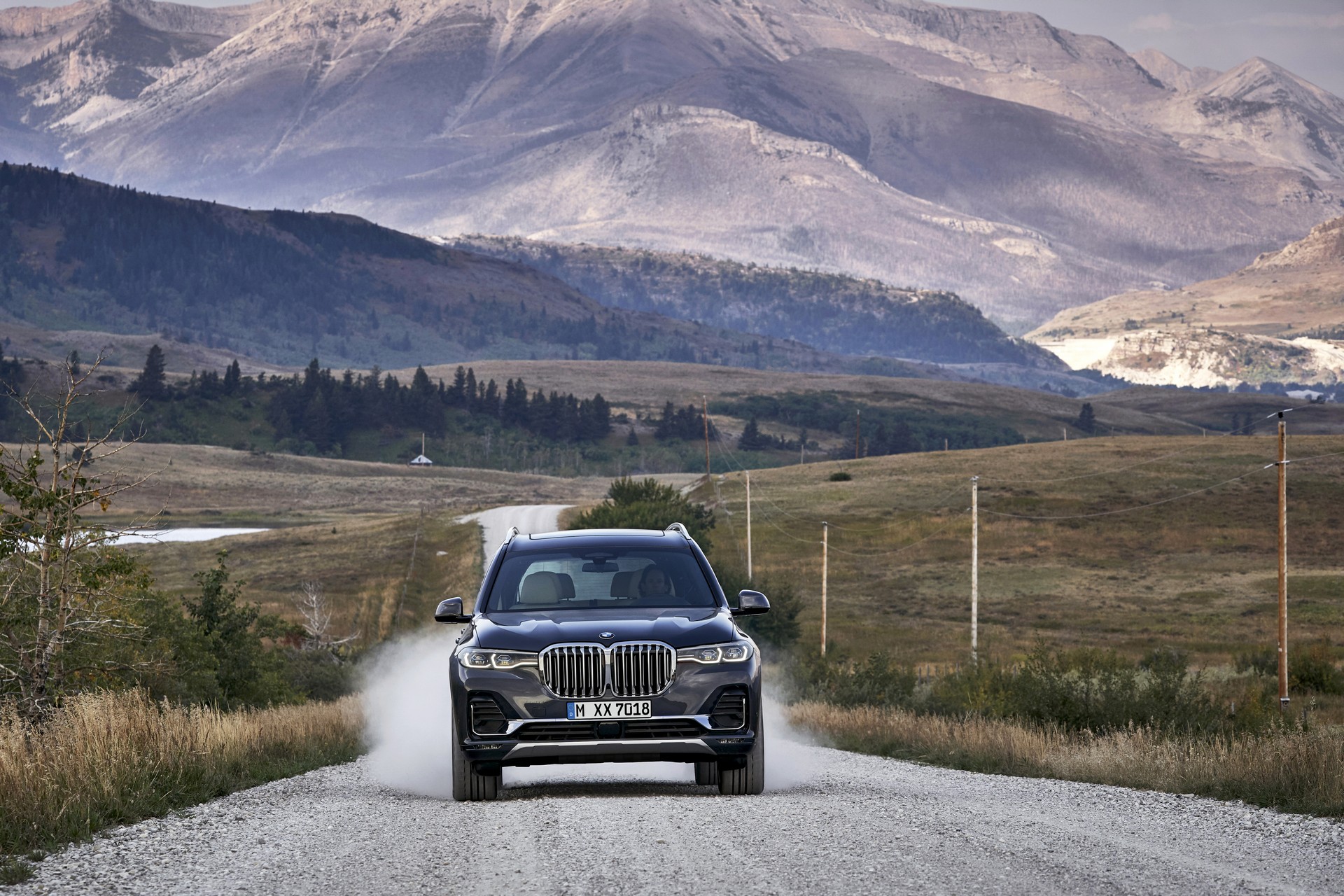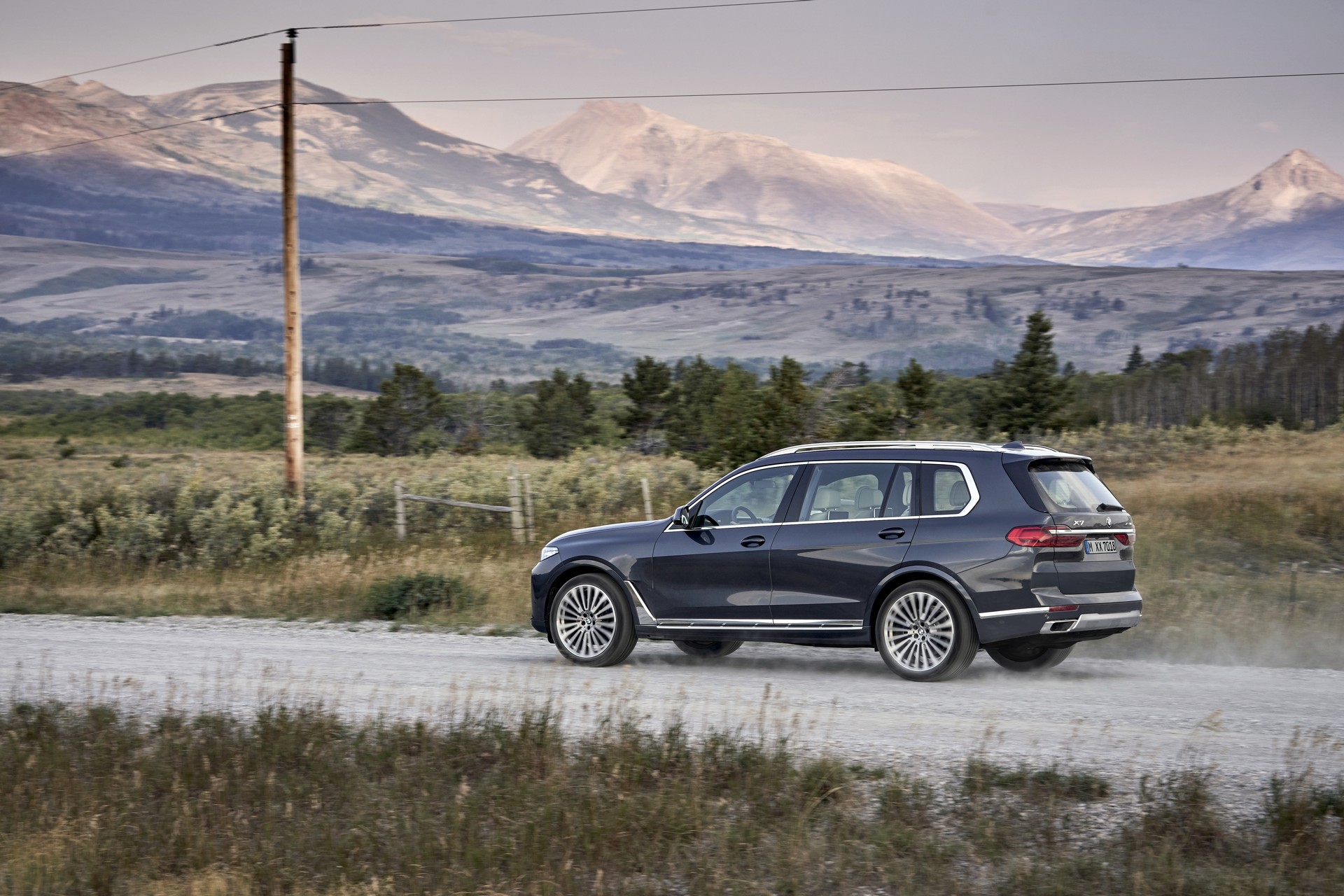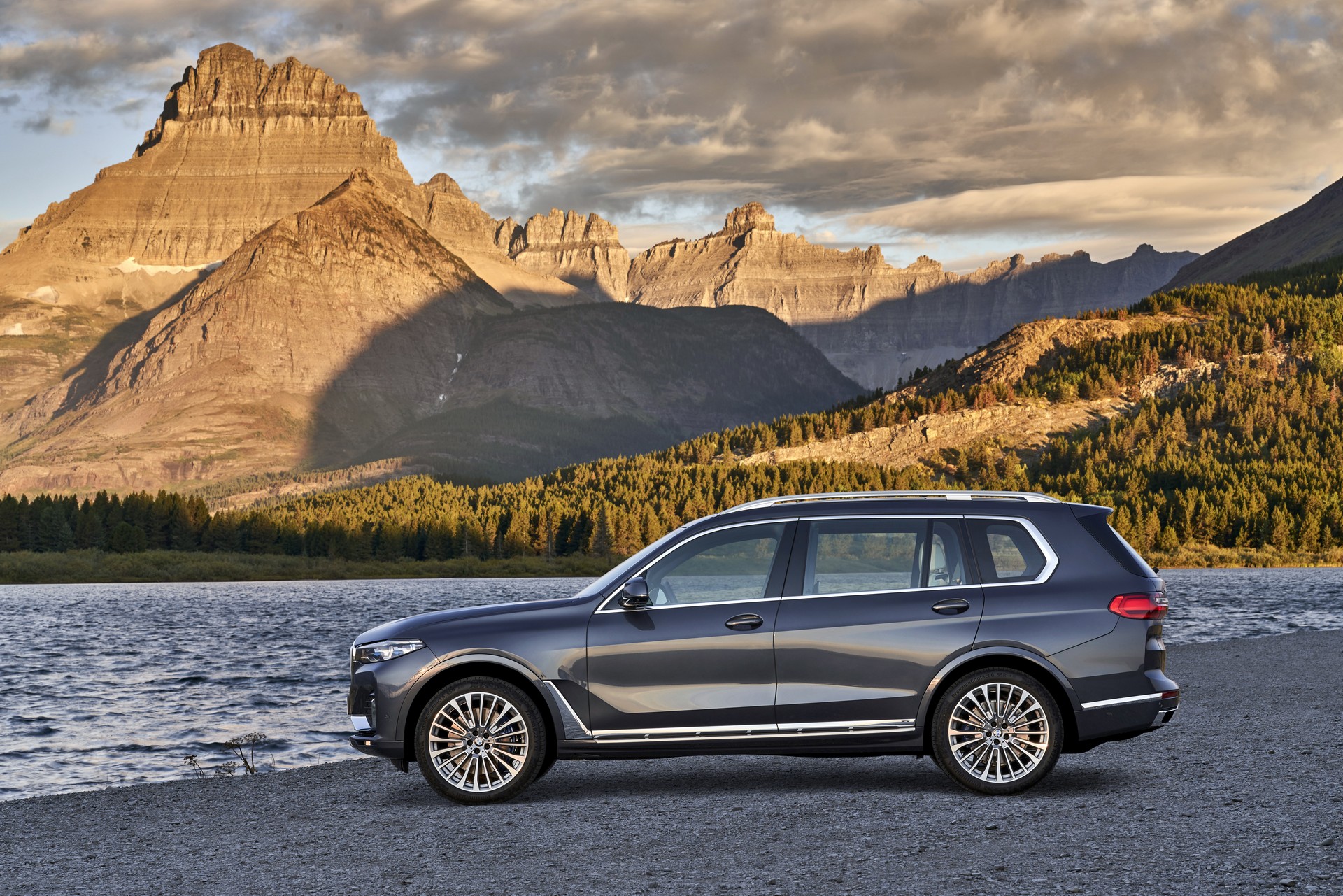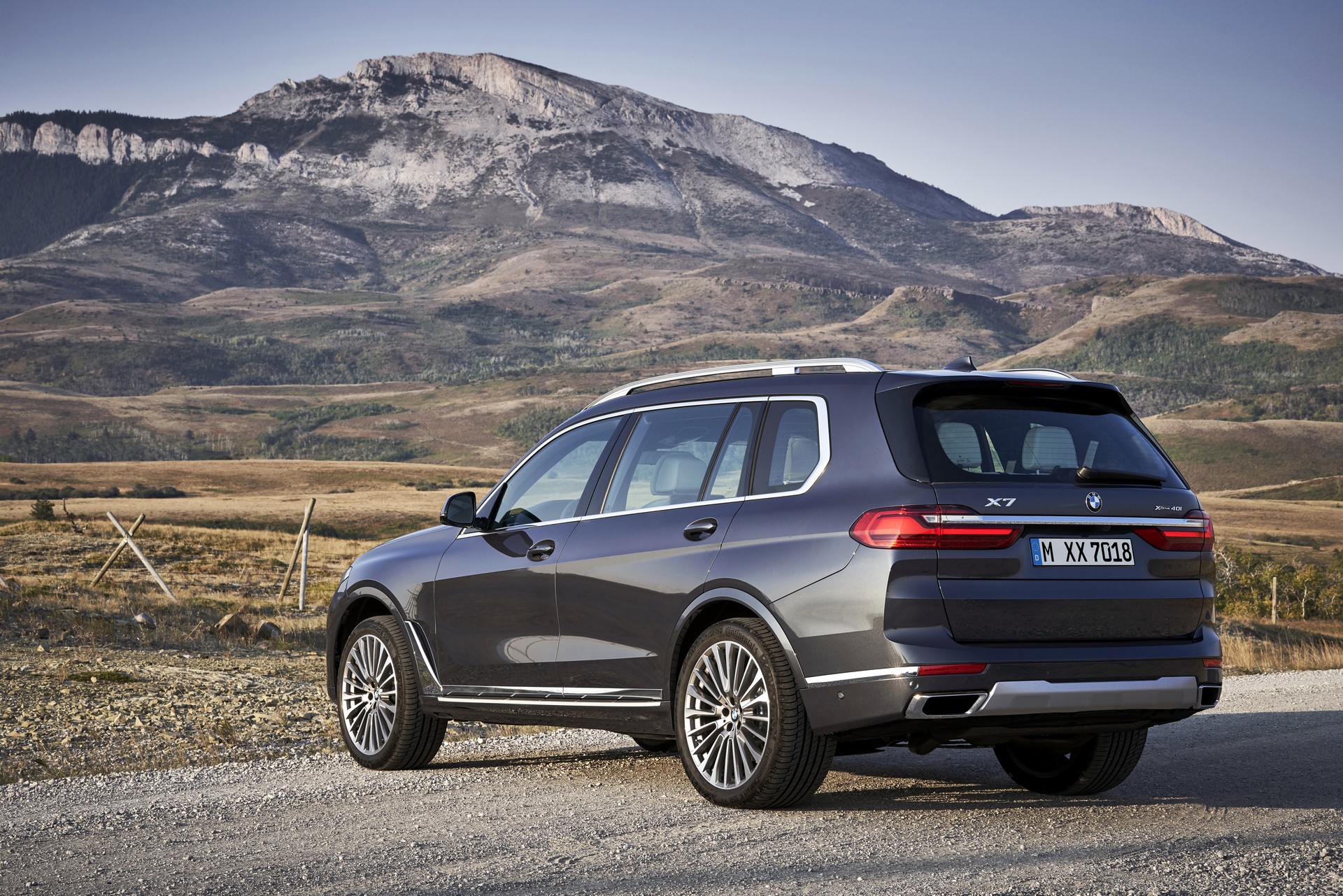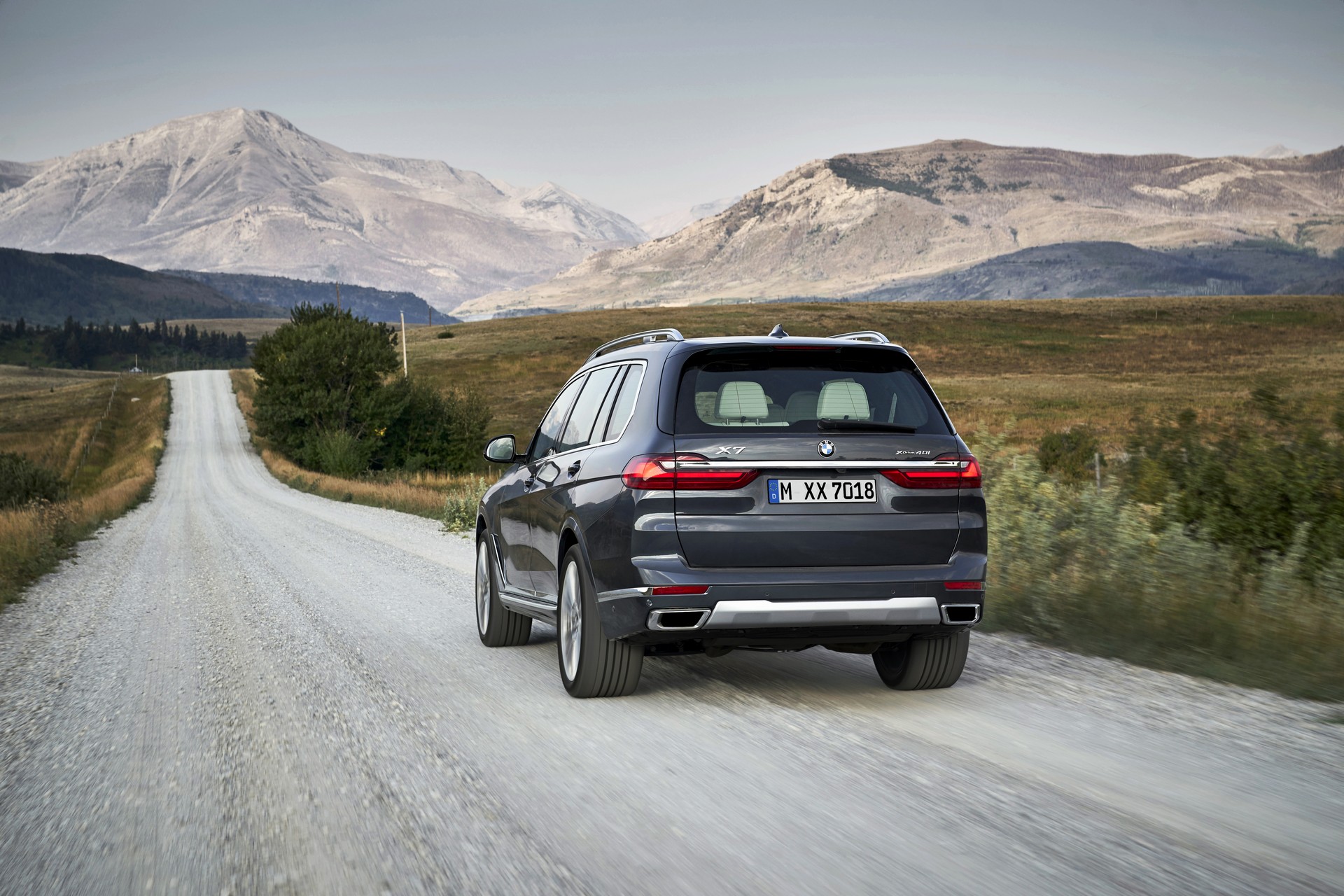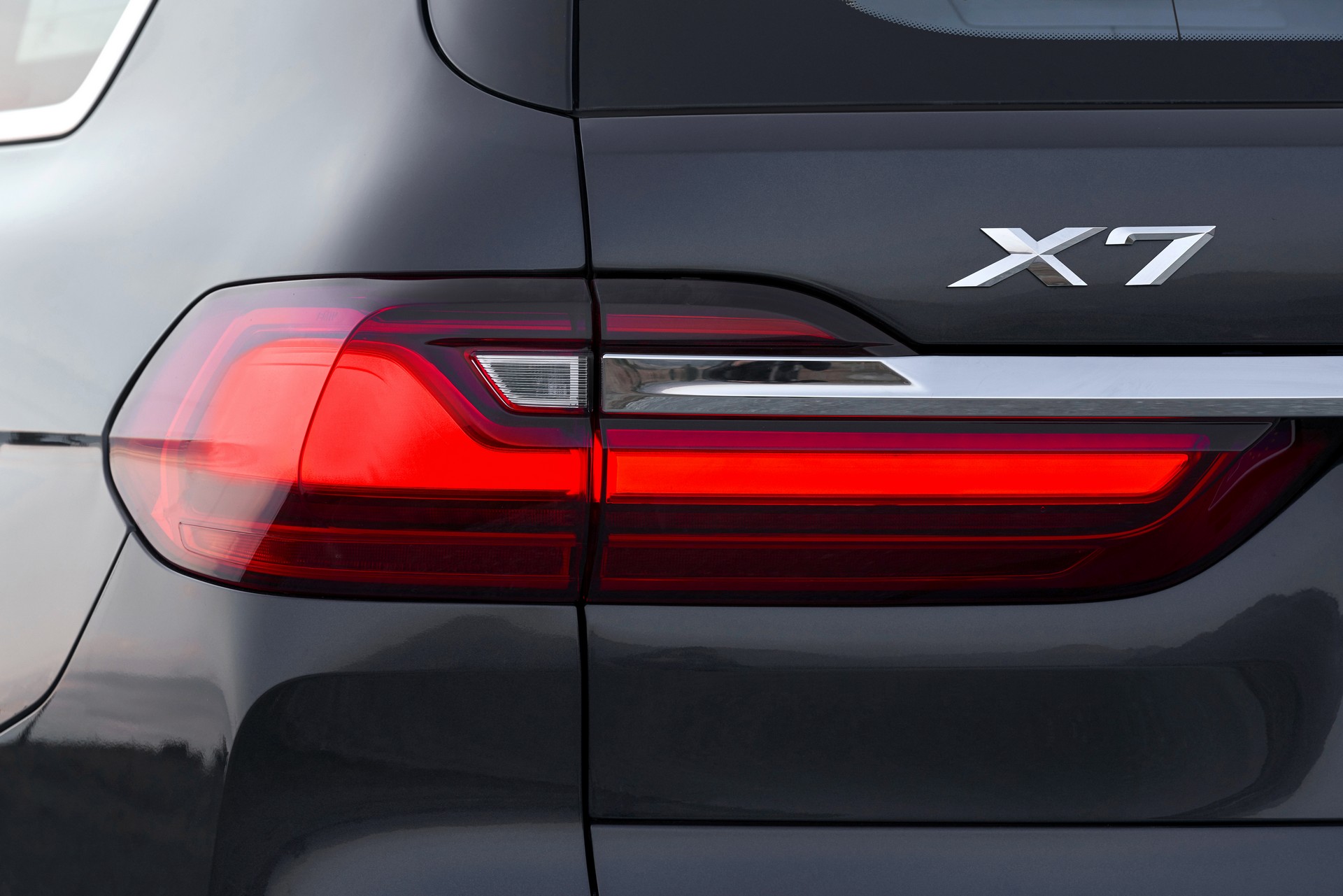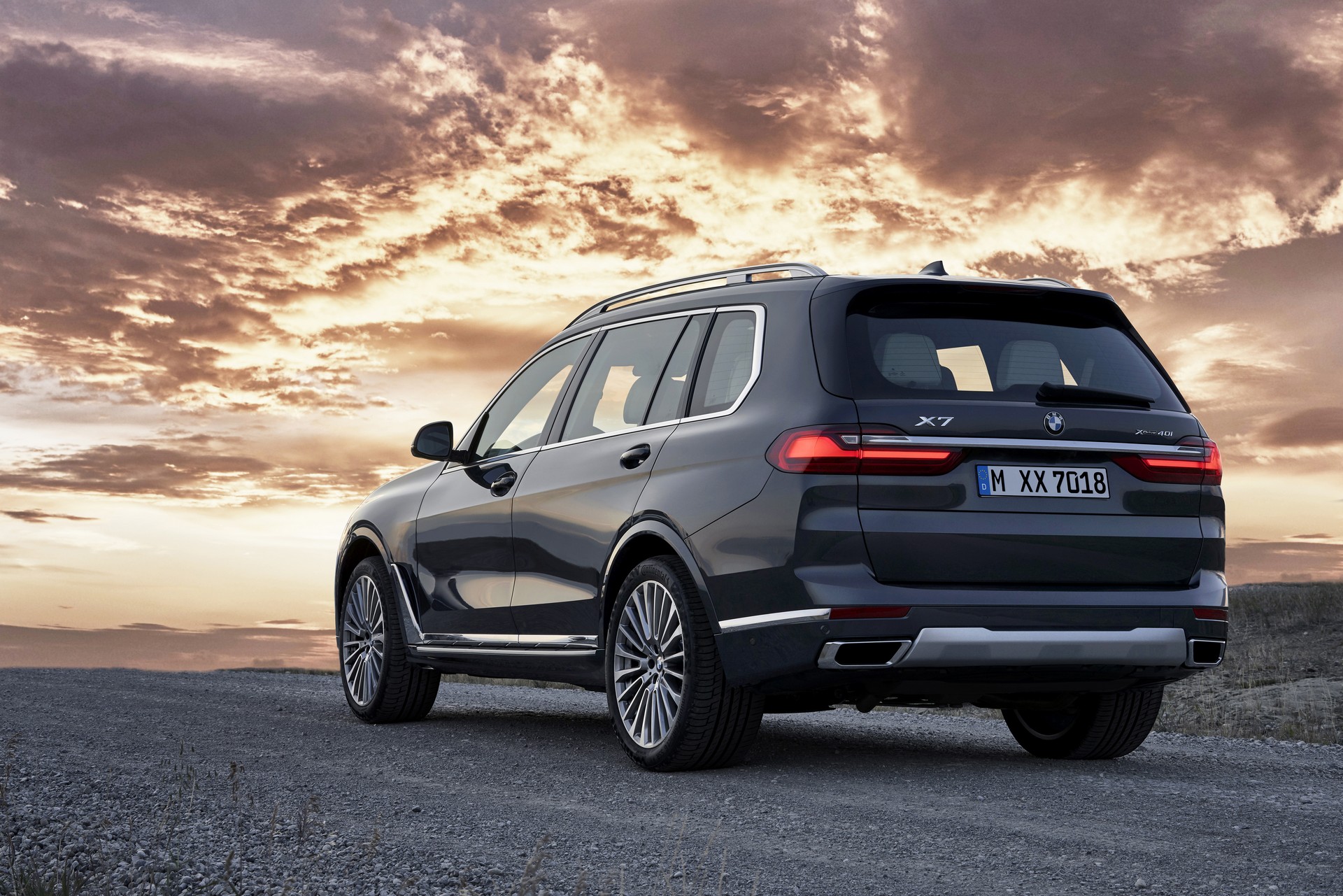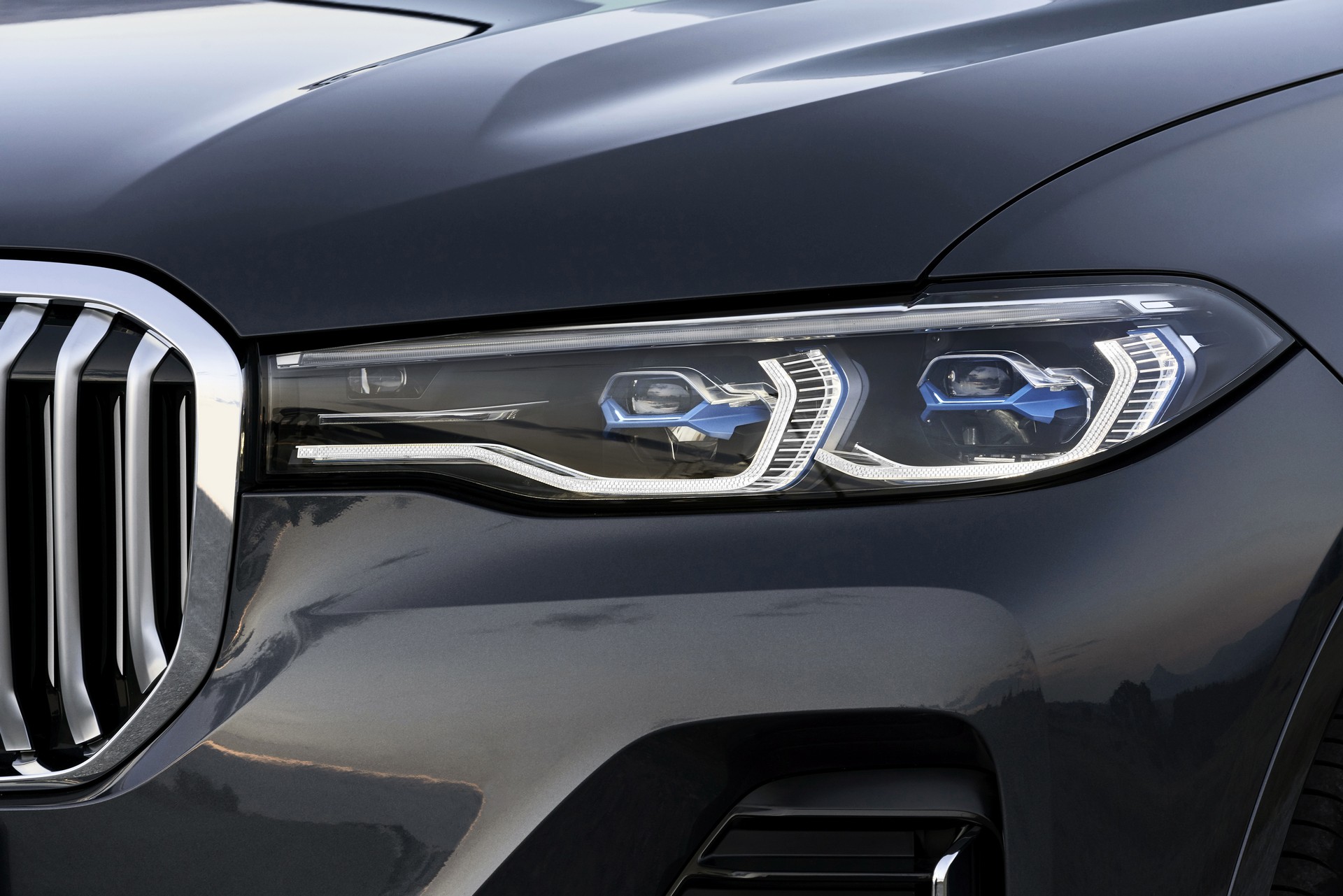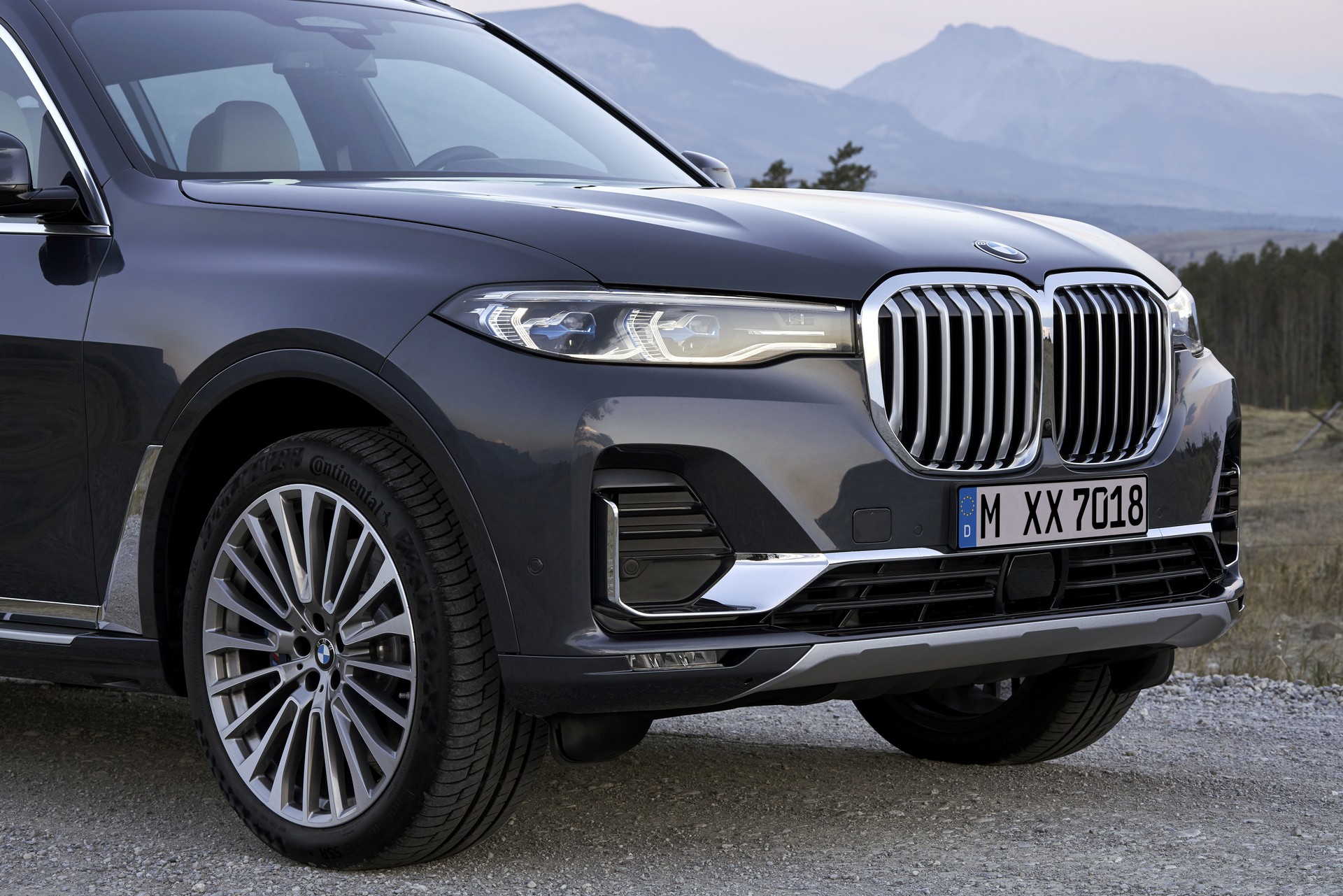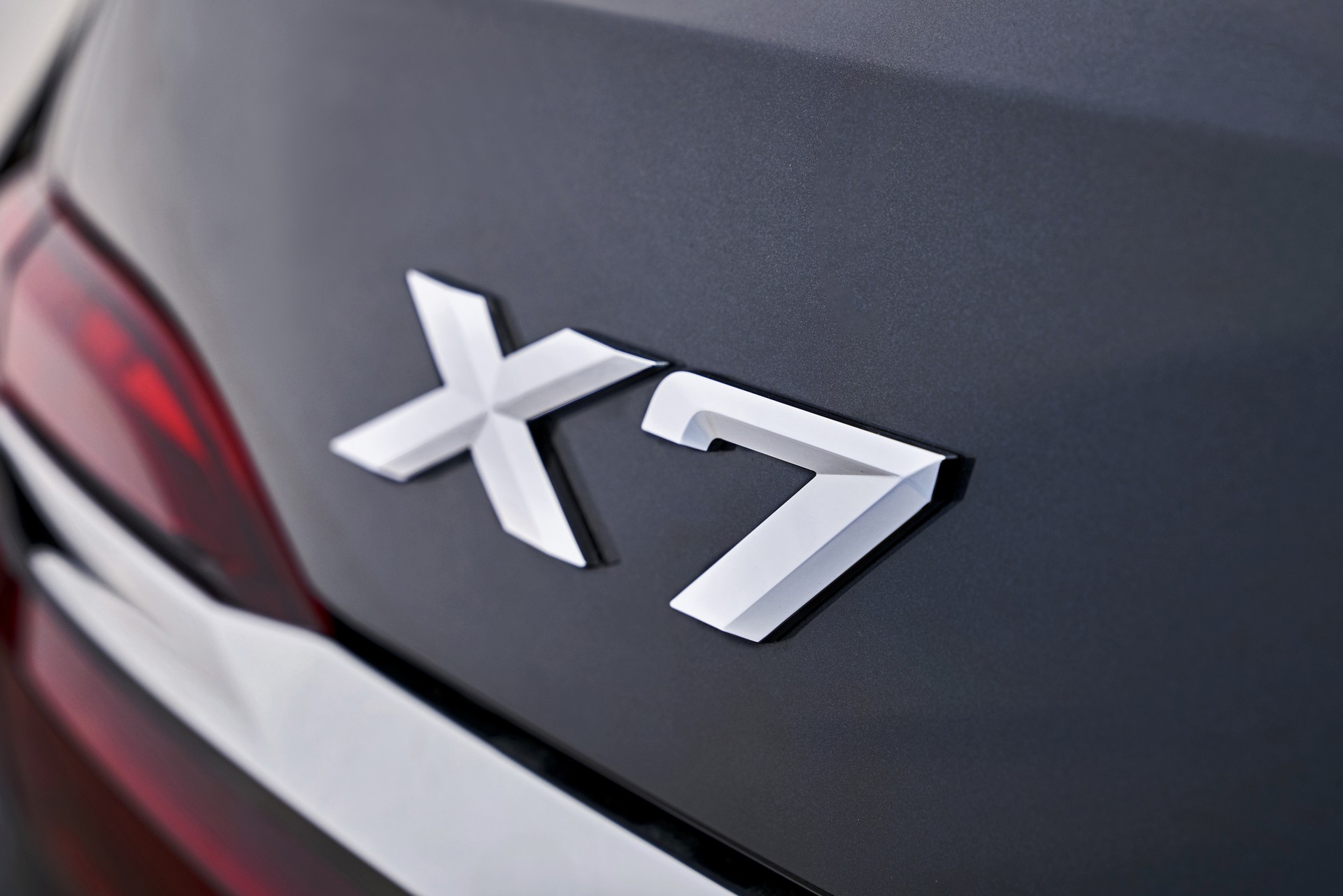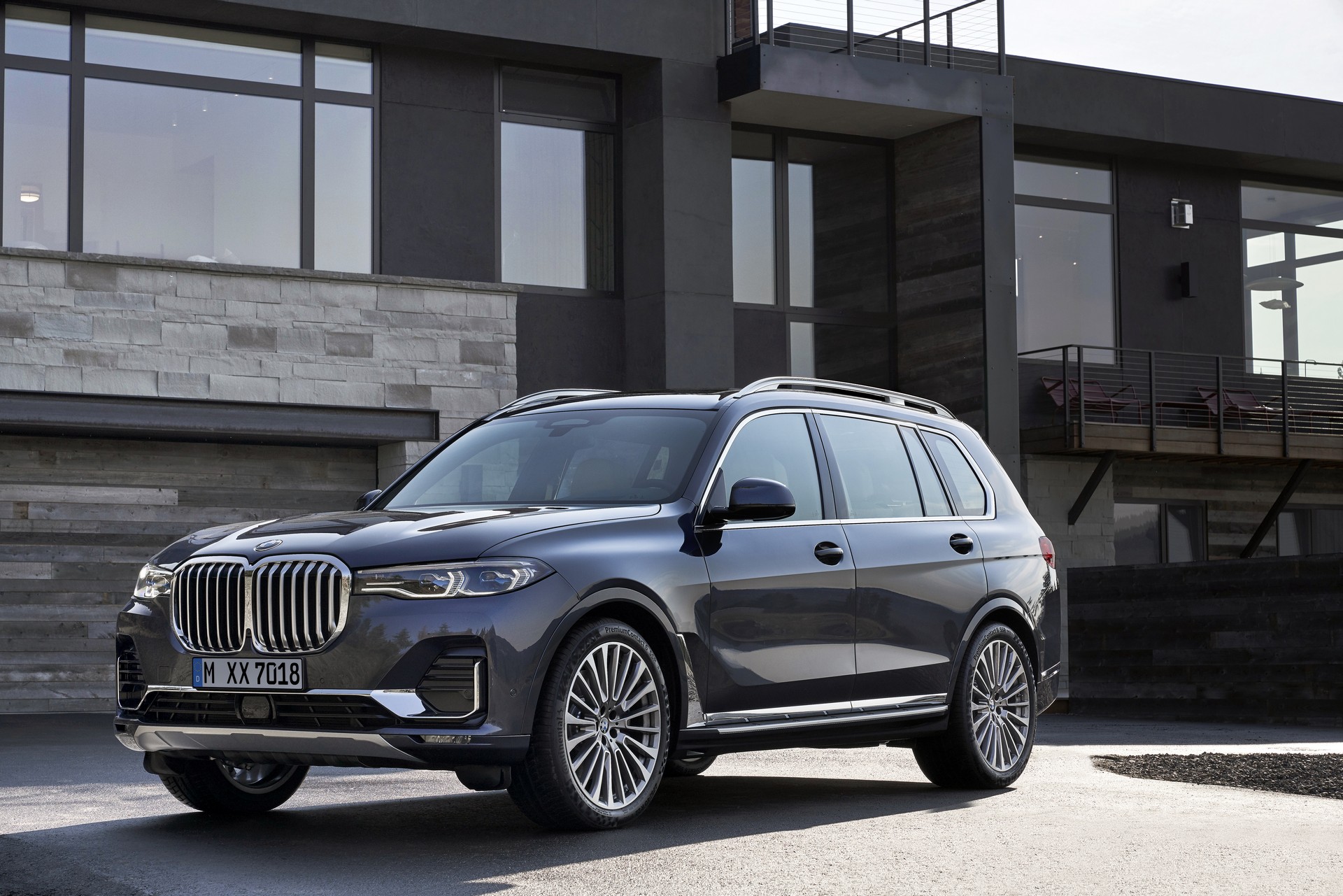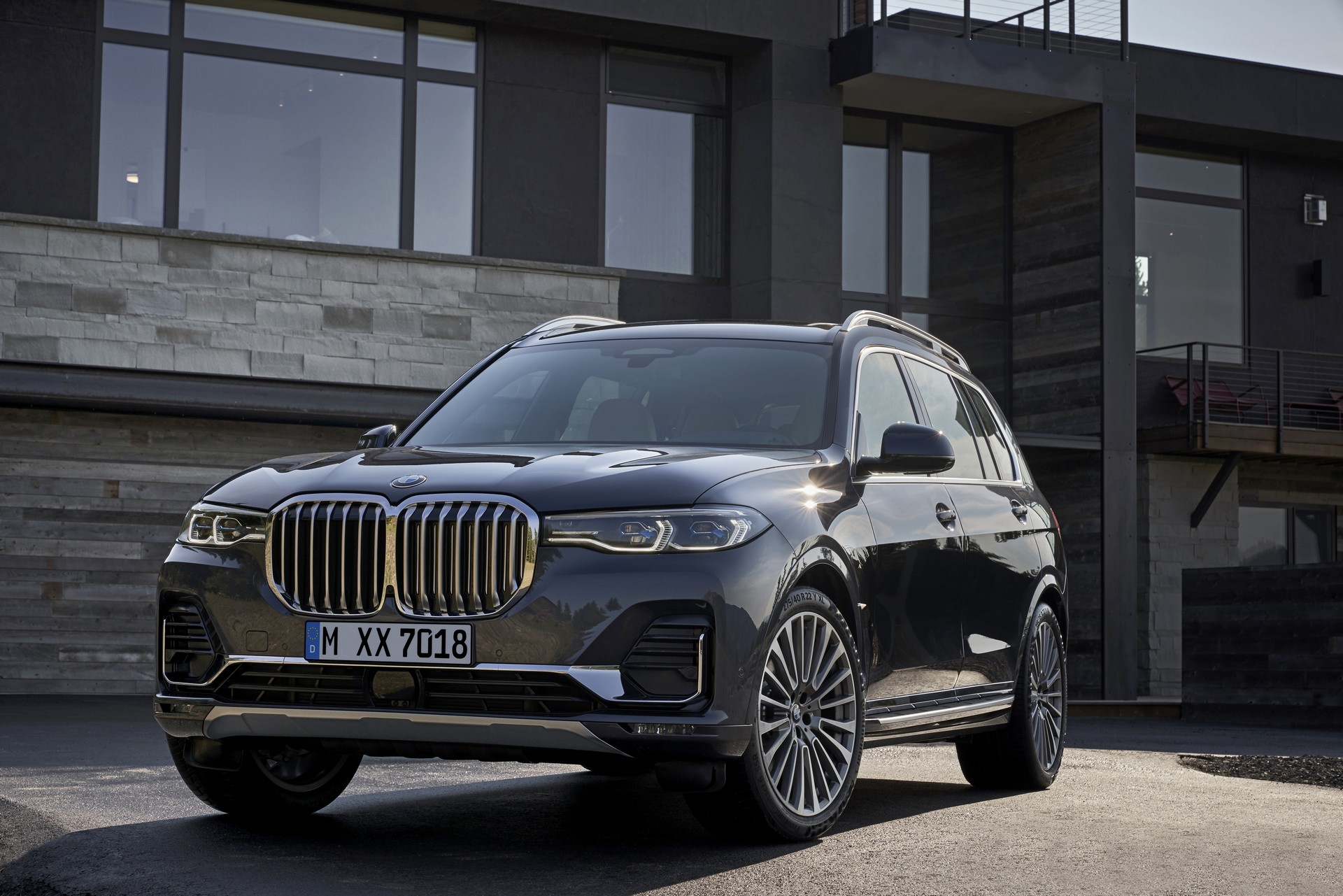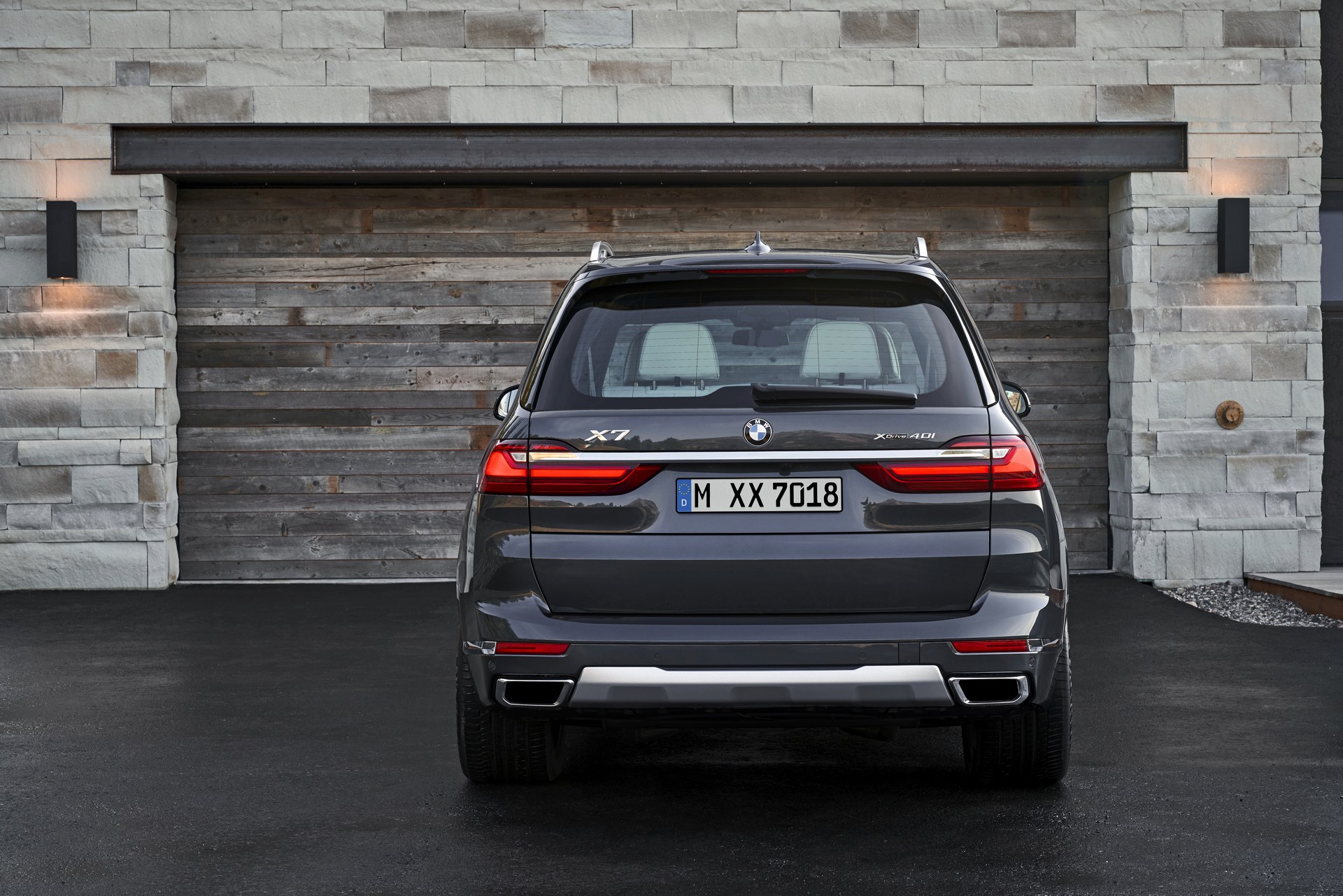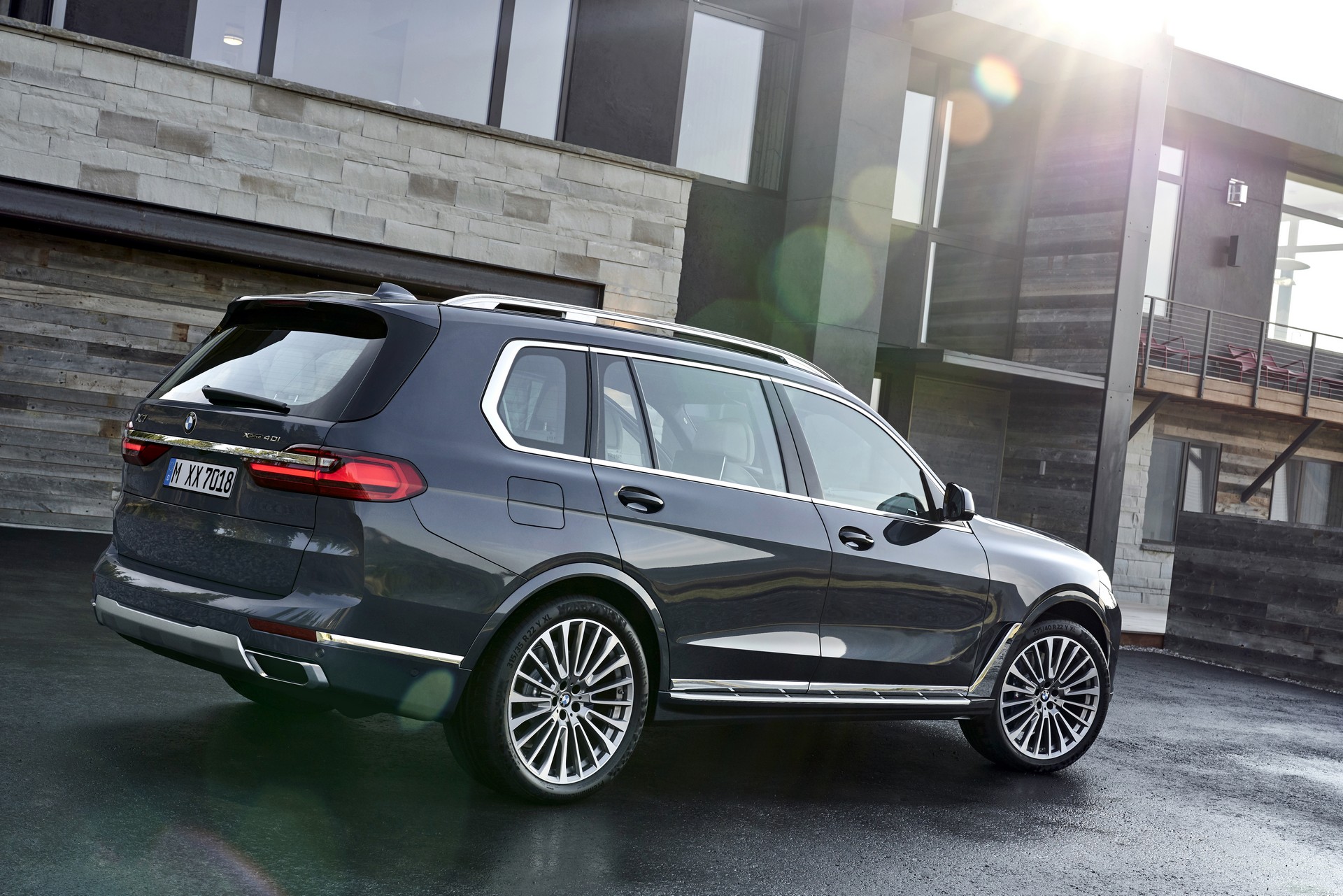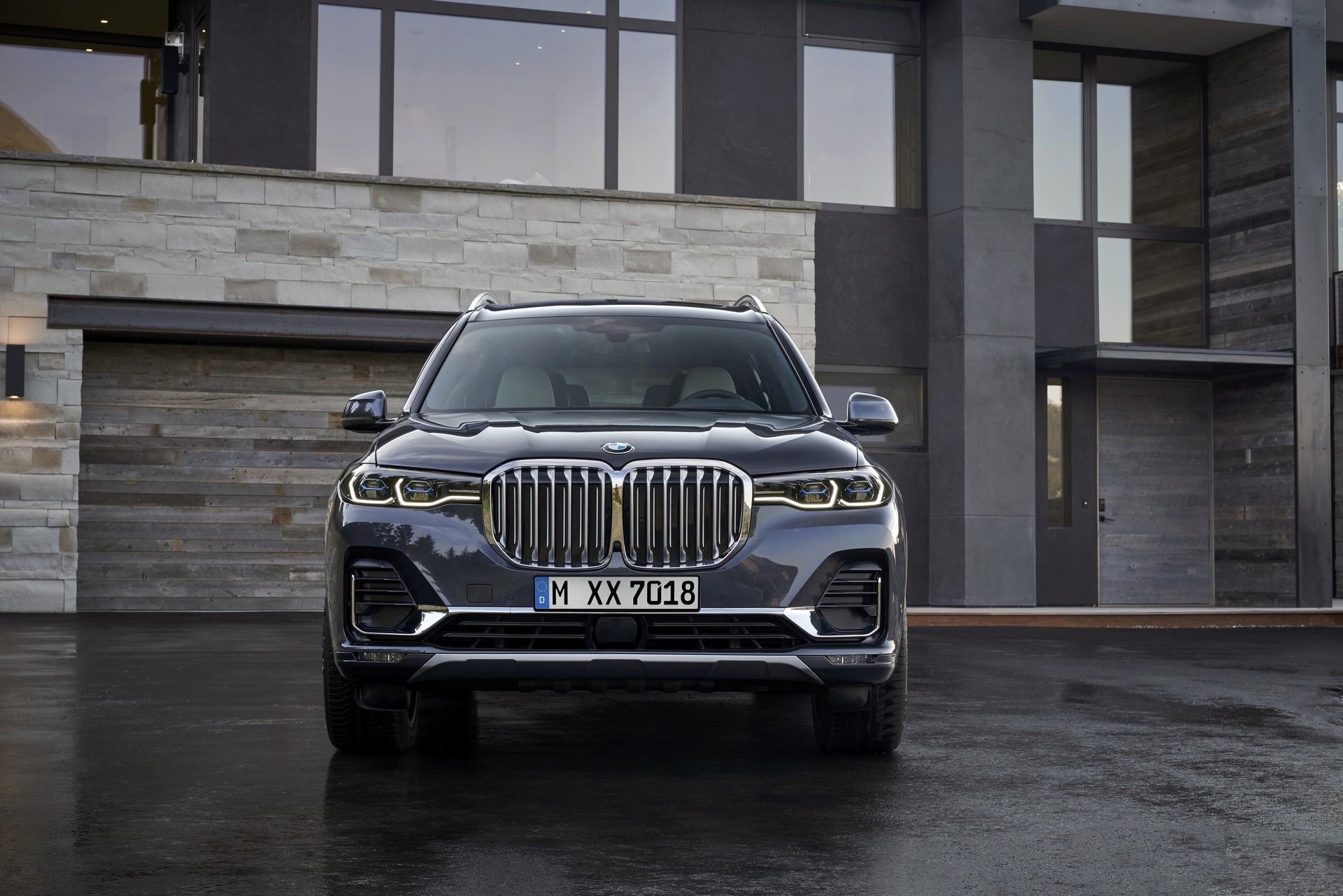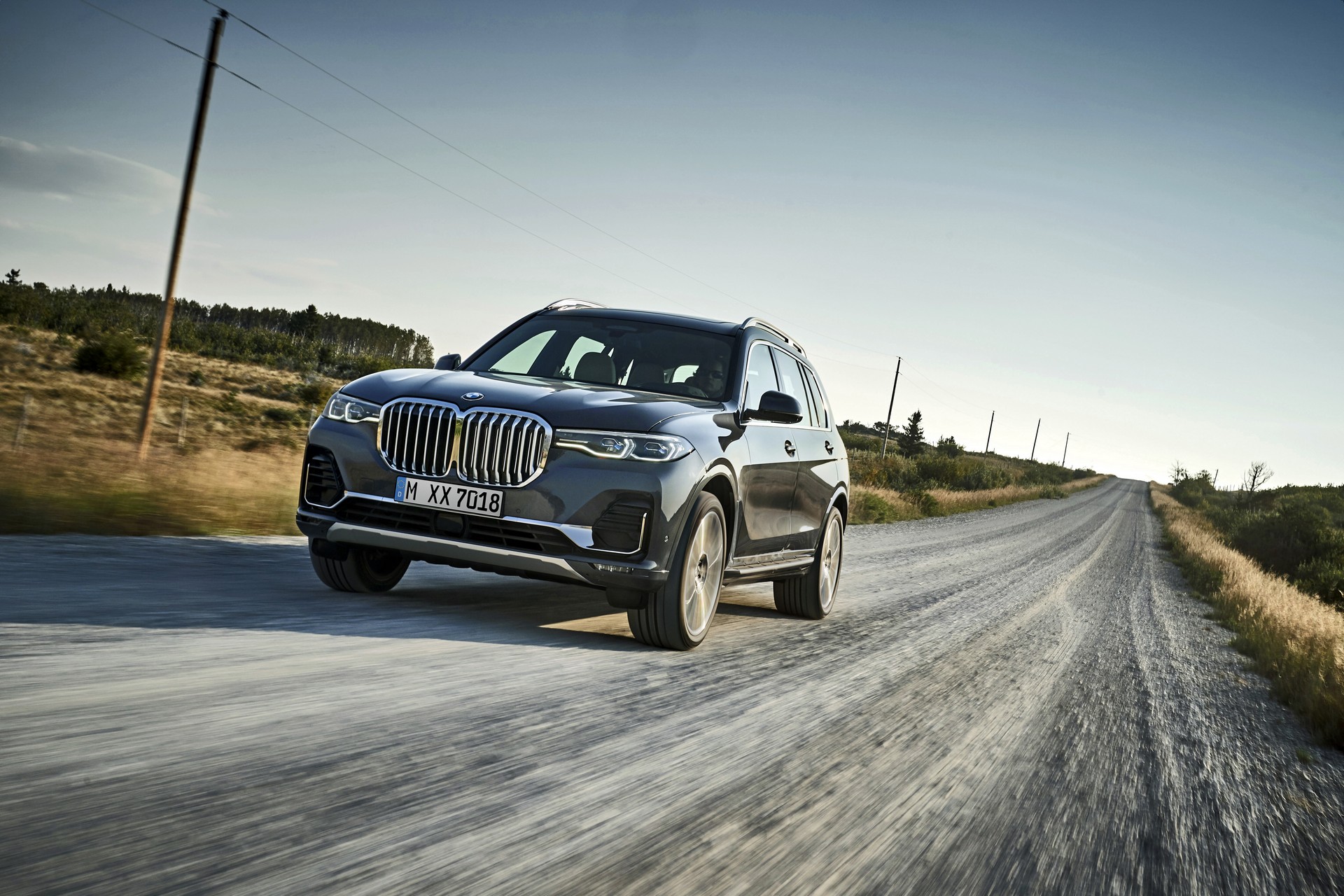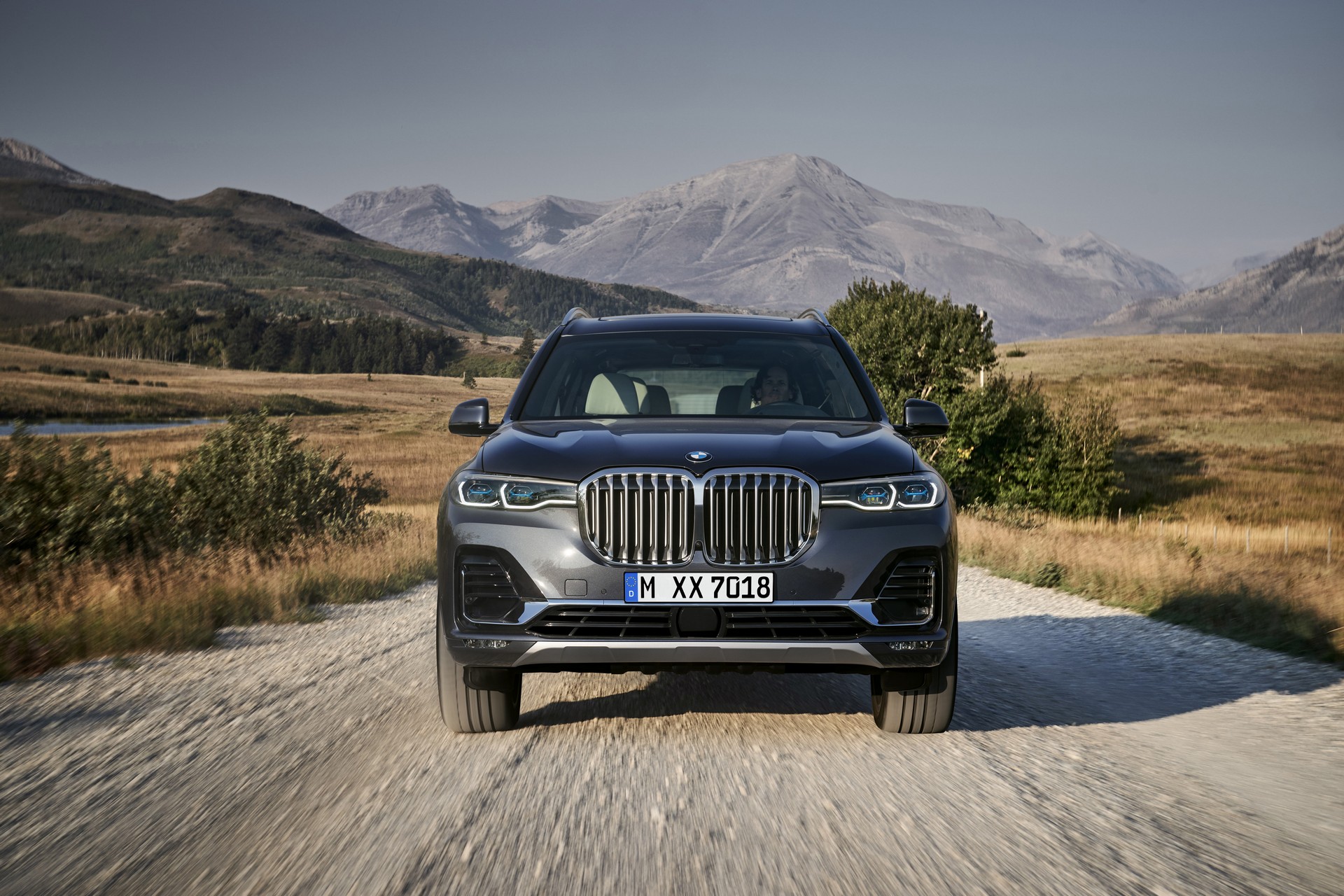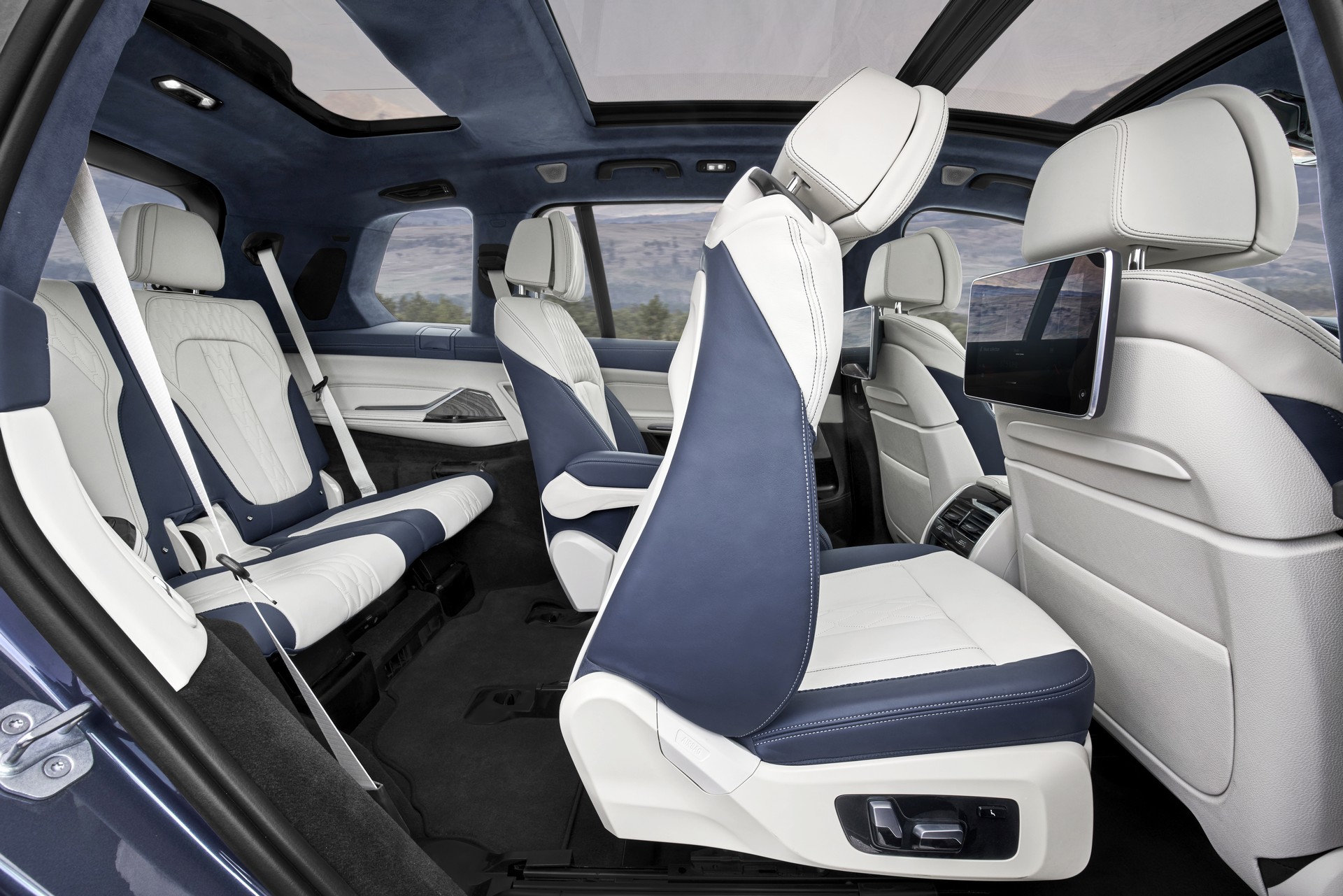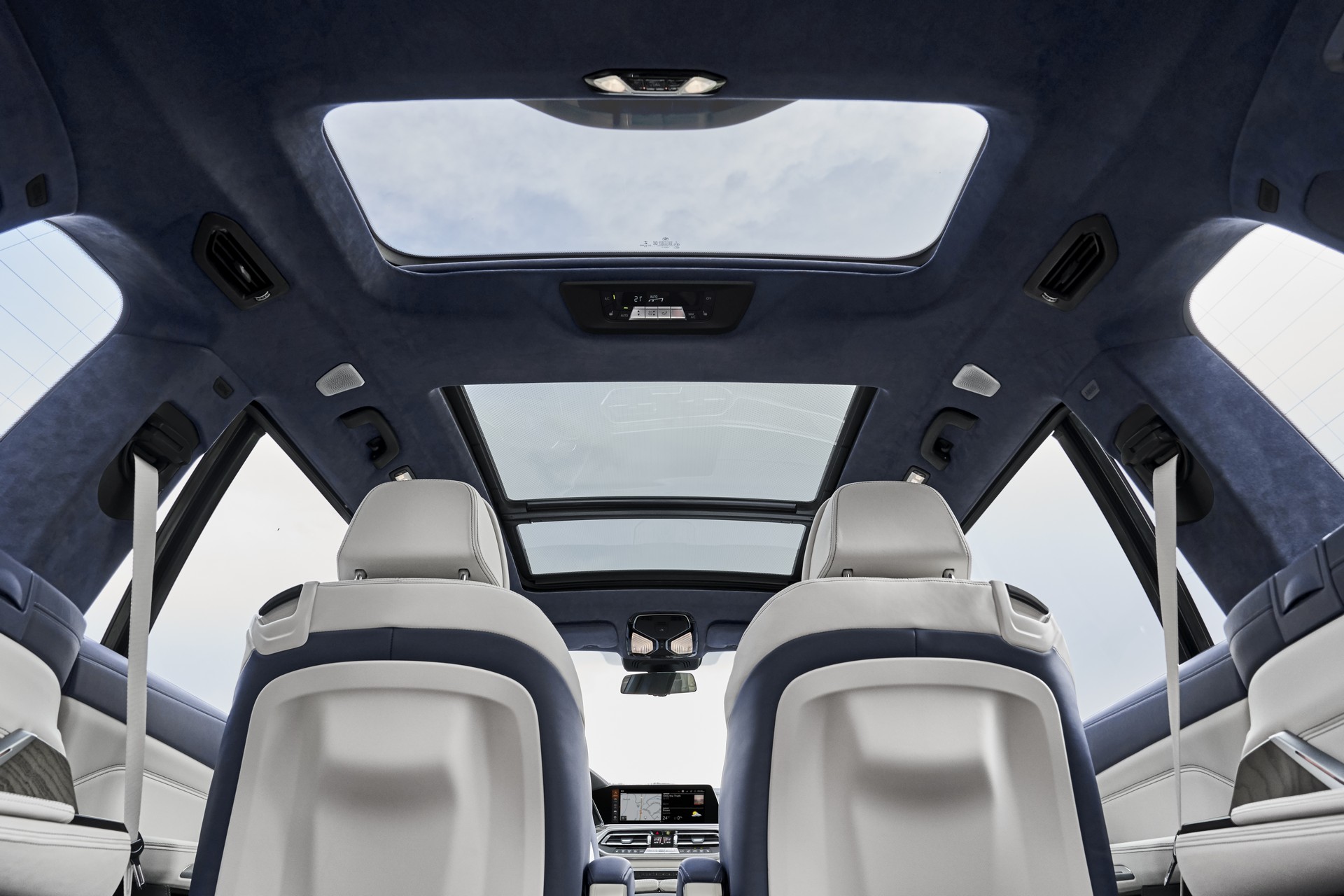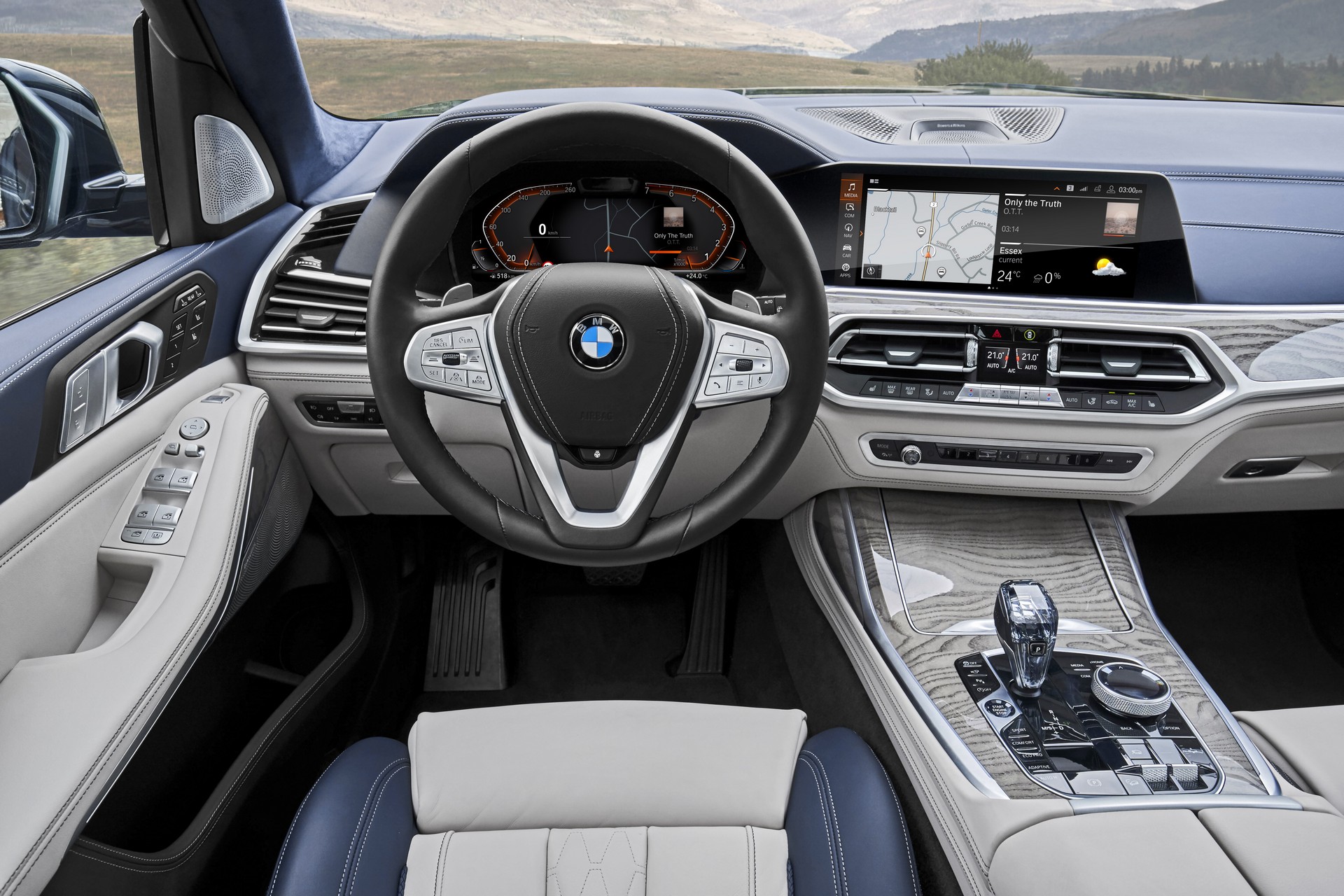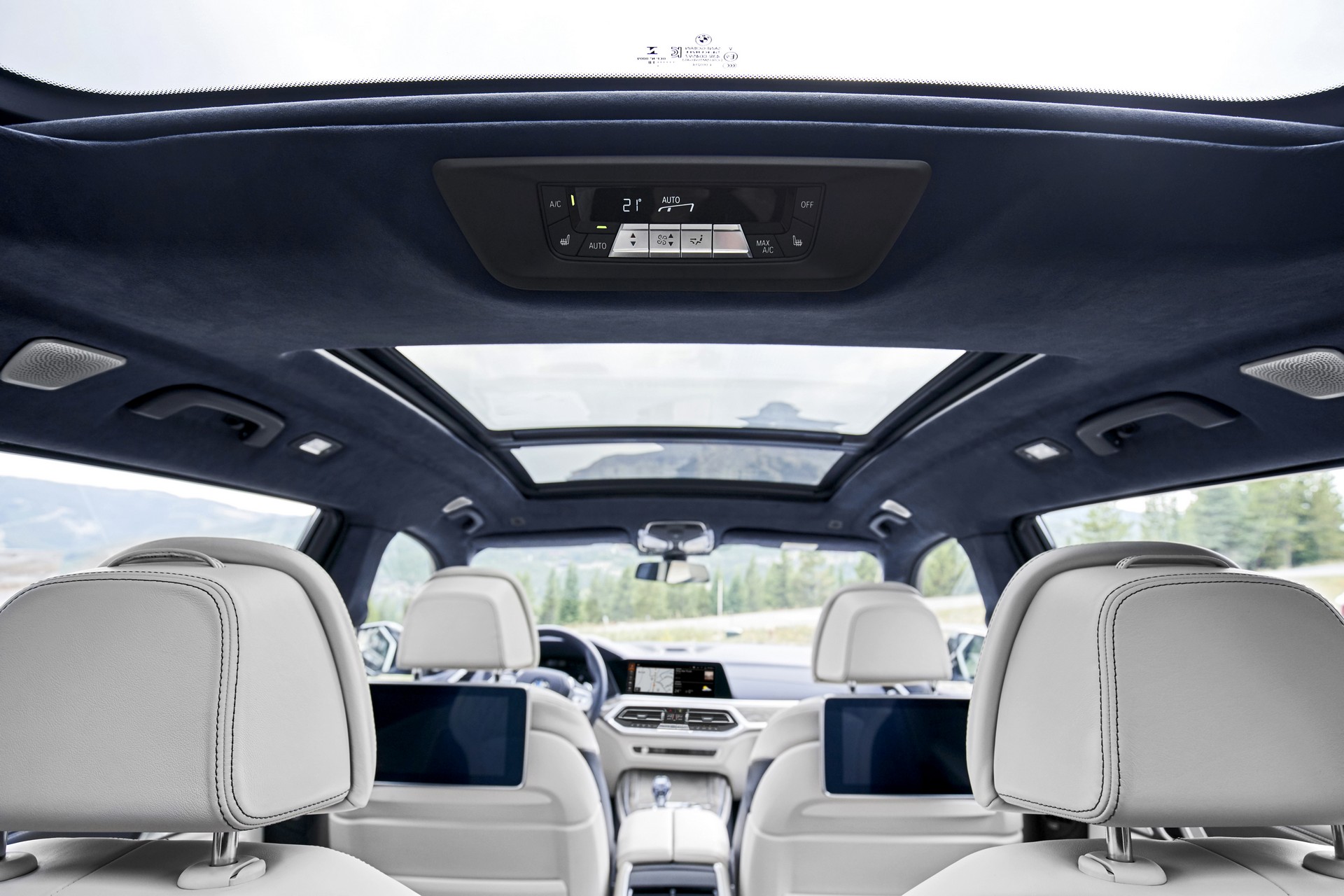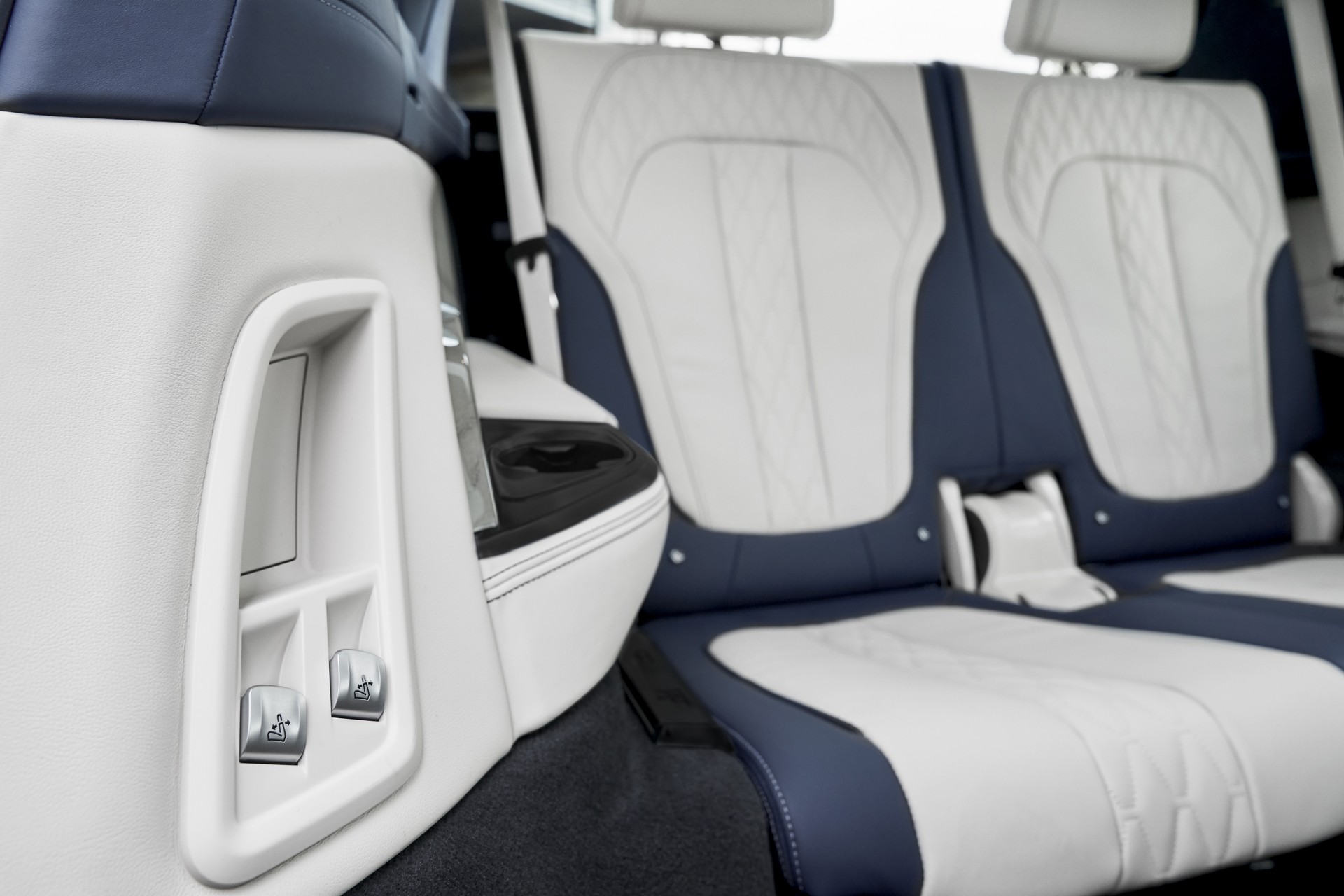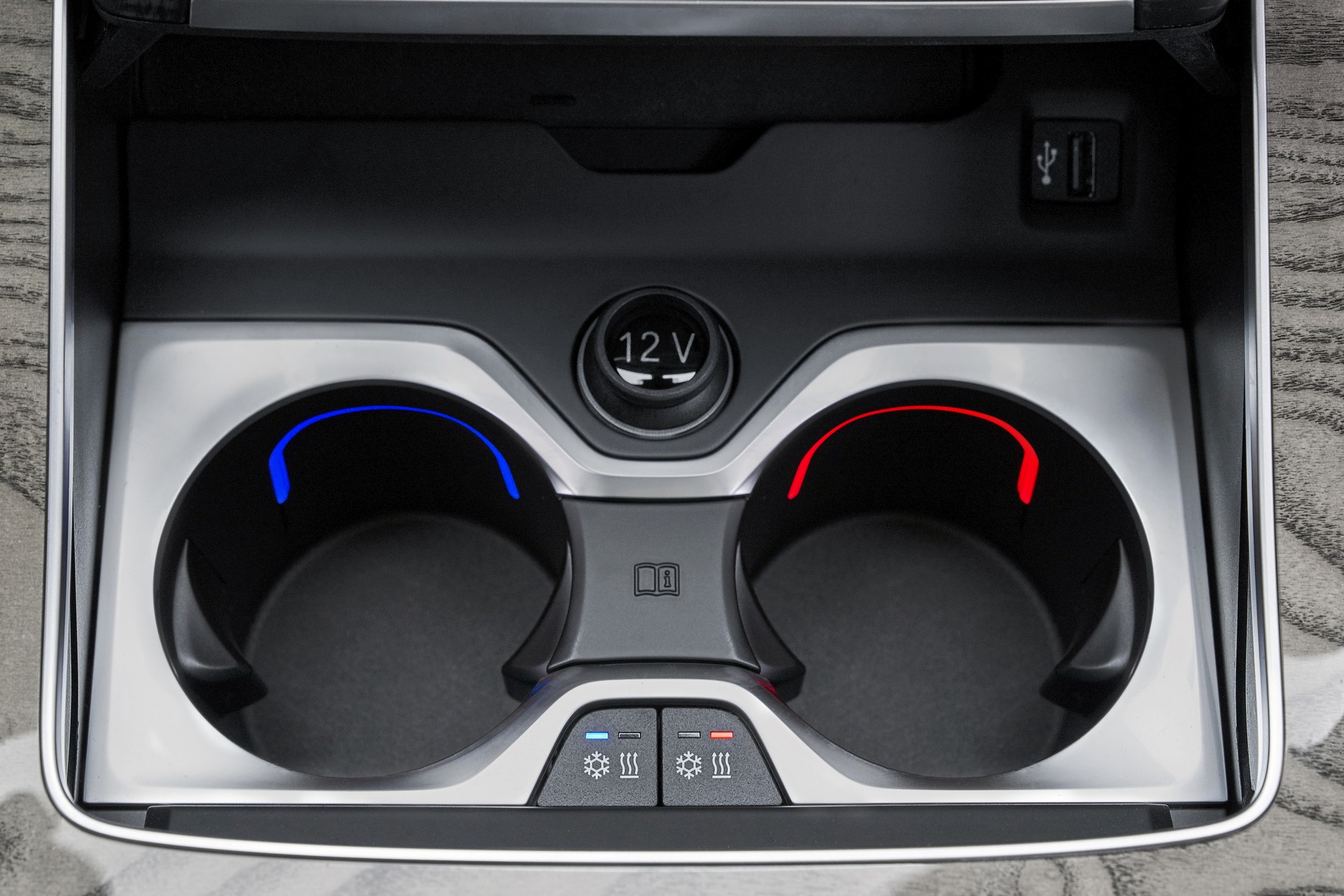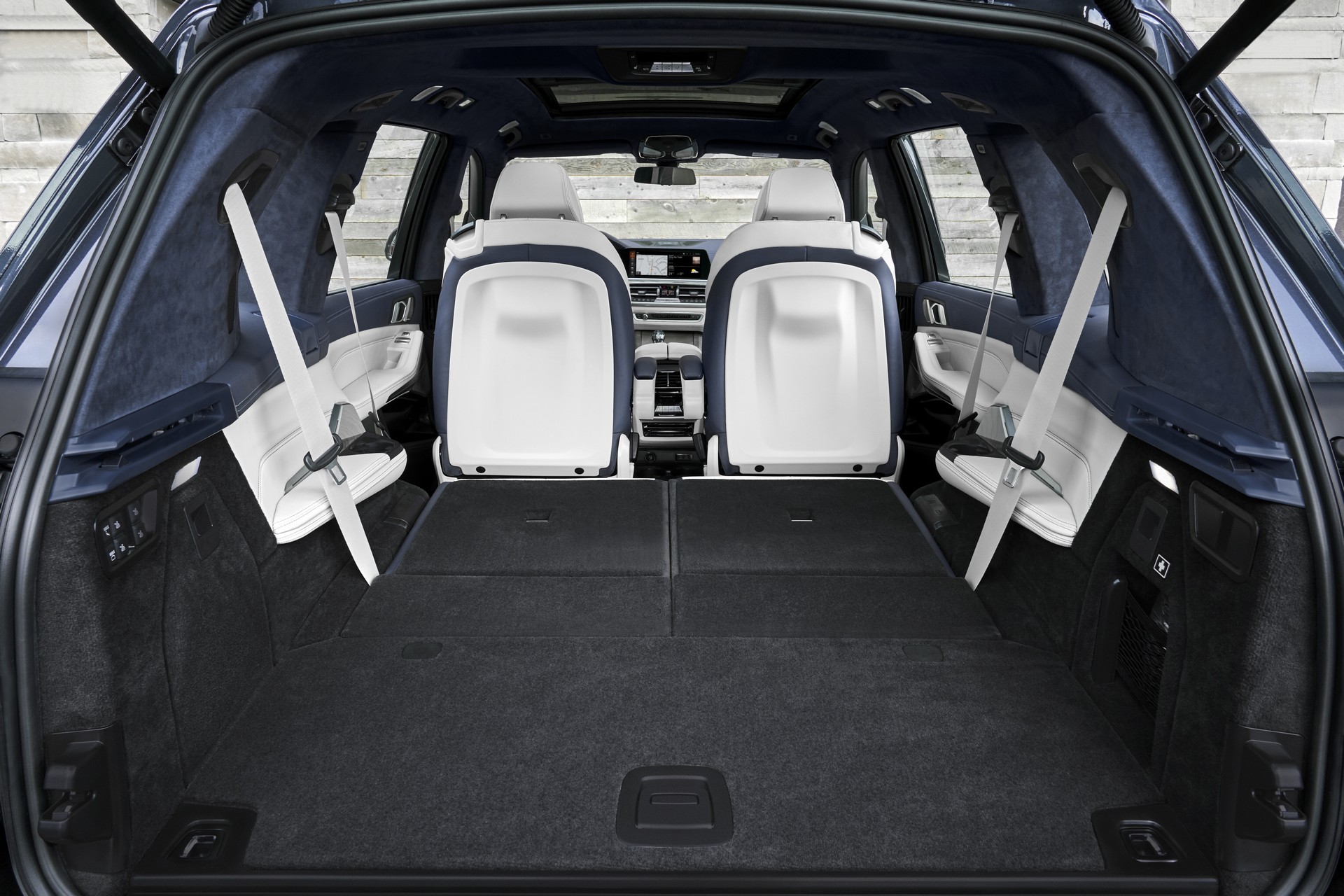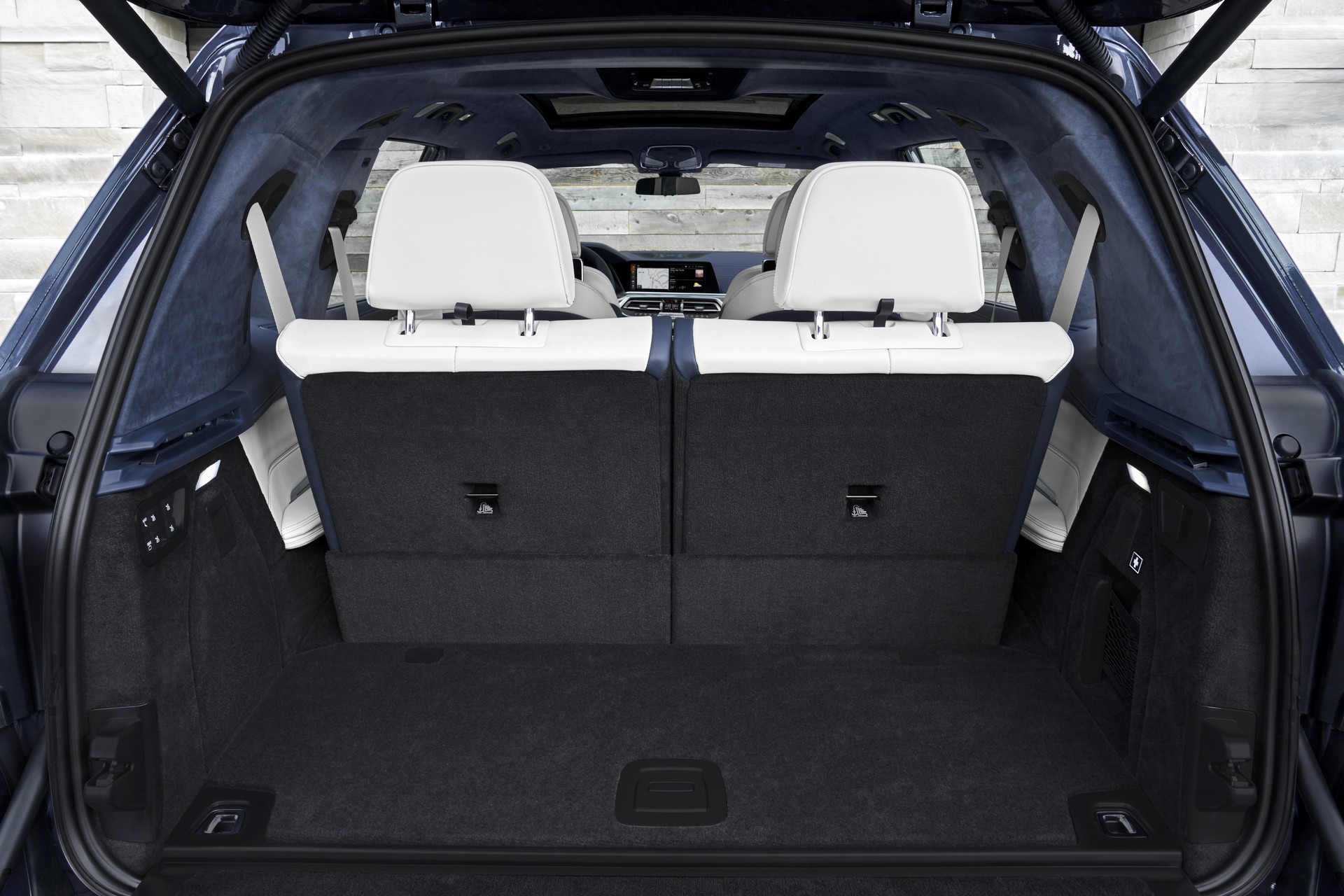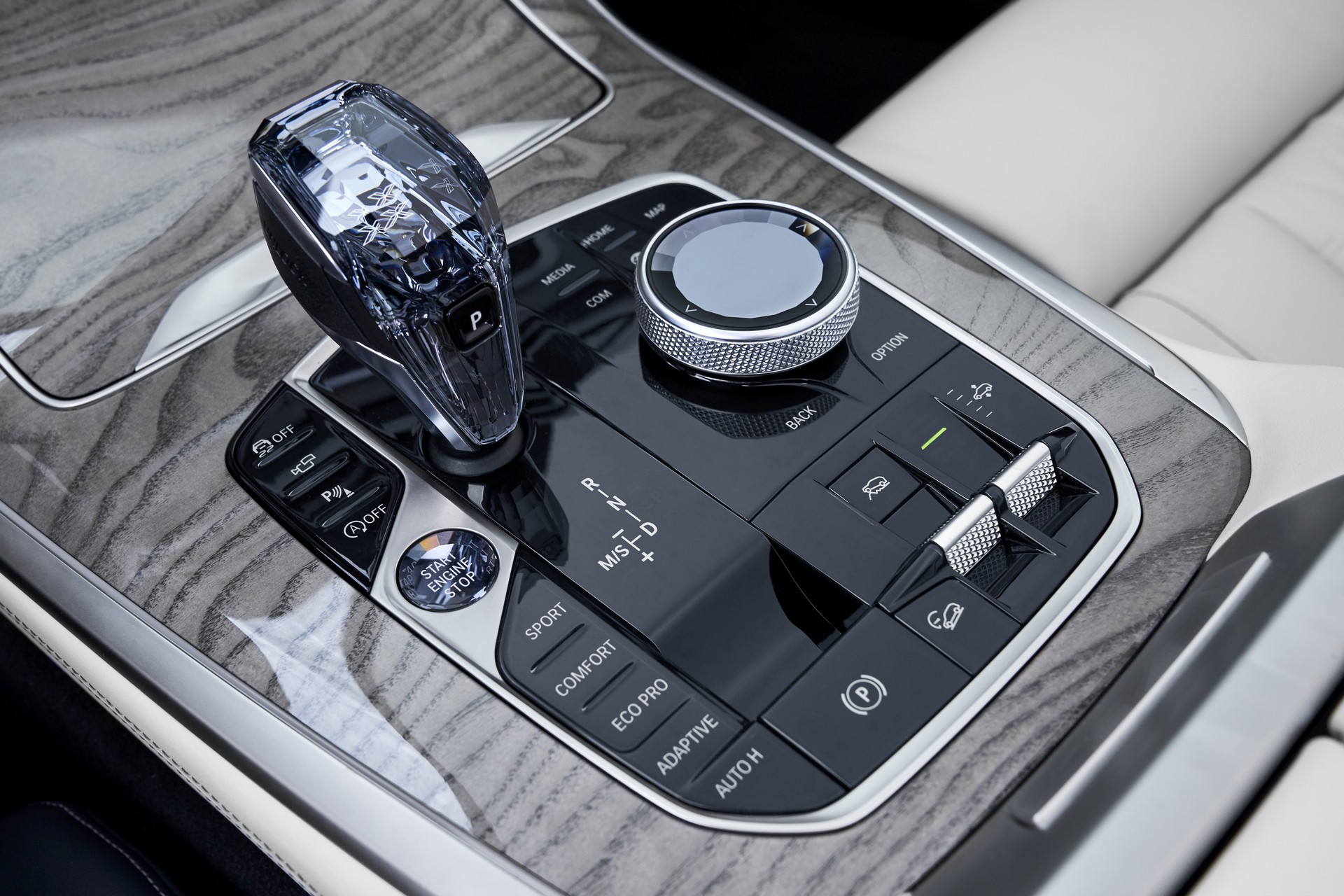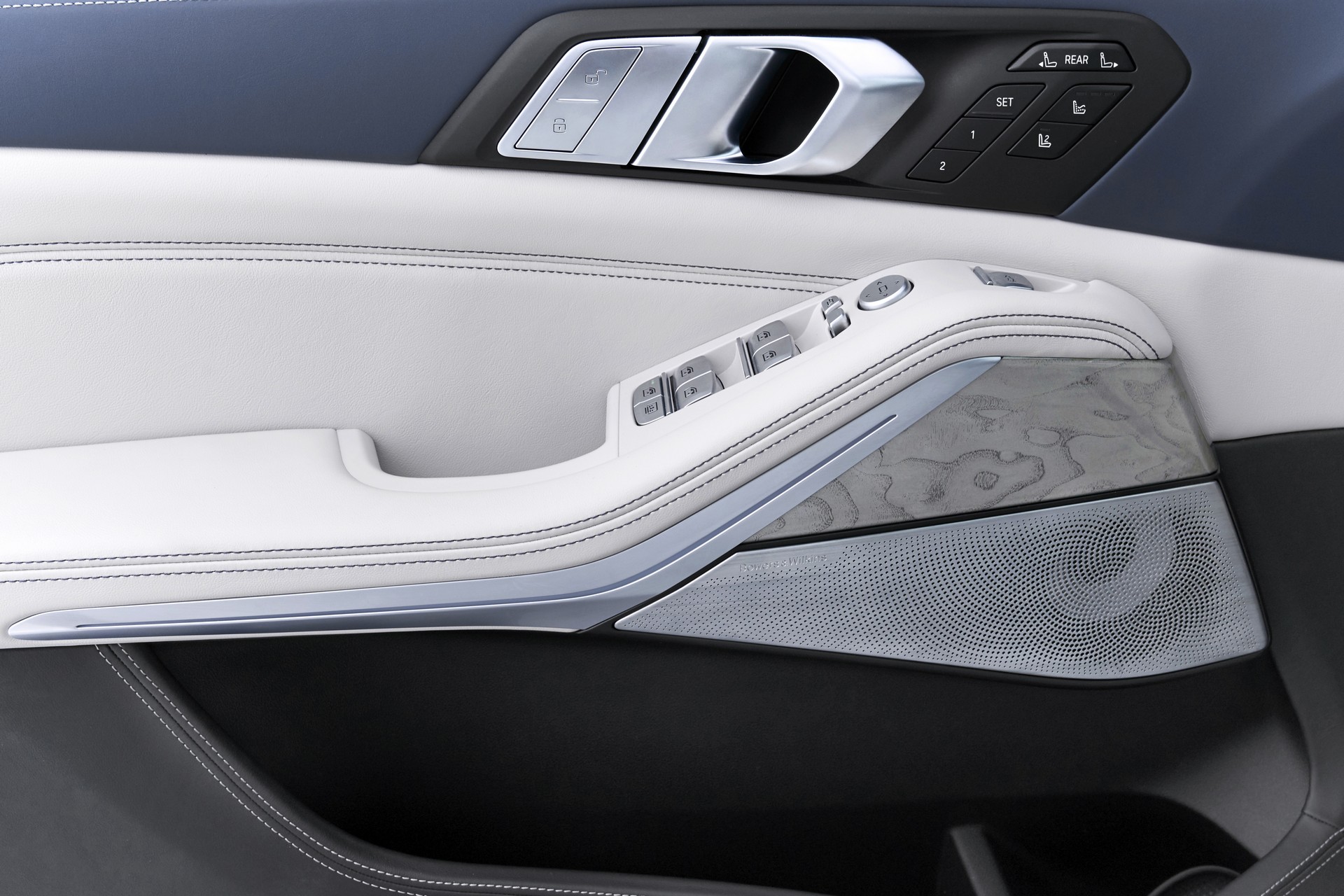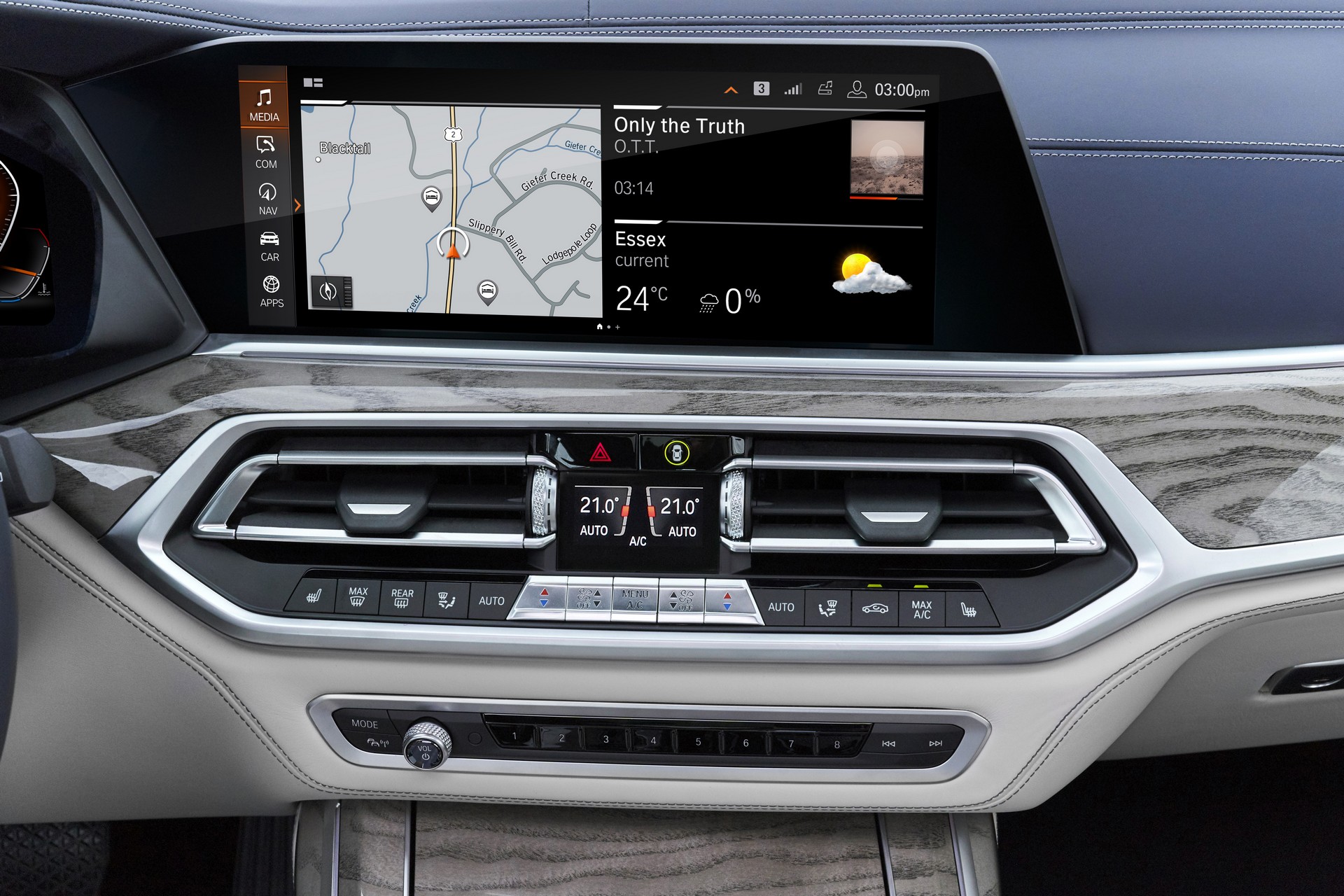Consumers can’t seem to get enough crossovers and BMW has been happy to comply as the company already offers six different models. However, there was one thing missing from its lineup – a competitor to the Mercedes GLS.
BMW is finally responding in the form of the 2019 X7. Larger and more luxurious than the redesigned X5, the production model closely echoes the X7 iPerformance concept which was introduced last year.
While the concept received a slightly chilly reception, BMW has high hopes for the production model as the company says it offers a unique blend of “presence, exclusivity and spaciousness.” It certainly has a commanding presence as the front fascia is dominated by a massive chrome grille which will likely prove to be controversial. Unsurprisingly, BMW says its the largest kidney grille ever fitted to one of their production models.
Putting the grille aside, the X7 features adaptive LED headlights which reside above massive air intakes. Moving further back, designers installed 21-inch alloy wheels, a relatively flat roof and a prominent greenhouse which is trimmed with chrome surrounds. The model also has long rear doors, slim taillights and a split tailgate which can be electronically opened and closed.
Overall, the X7 measures 203.3 inches (5,163 mm) long, 78.7 inches (1,999 mm) wide and 71.1 inches (1805 mm) tall with a wheelbase that spans 122.2 inches (3103 mm). This means the X7 is 9 inches (228 mm) longer, 0.2 inches (5 mm) narrower and 2.1 inches (53 mm) taller than the X5. The model also has a 5.1 inch (129 mm) longer wheelbase.
While the exterior styling won’t win everyone over, the X7 has a luxurious cabin which features a stylish blend of leather, wood and metallic trim. Drivers sit behind a 12.3-inch digital instrument cluster which is located next to another 12.3-inch display for the infotainment system.
Specifications will vary by market, but the US-spec model comes standard with a four-zone climate control system, a 10-speaker audio system and a three-panel panoramic glass sunroof. Other niceties include a wireless smartphone charger and a WiFi hotspot.
An assortment of options will be available including a 20-speaker Bowers & Wilkins Diamond surround sound system and a rear-seat entertainment system with 10.2-inch touchscreen displays. Other tempting options include heated seats, power rear window shades, heated / cooled cup holders and a head-up display.
The X7 comes standard with a split-folding second row bench, but customers can order power captain’s chairs which “offer the same range of adjustments as the seats for the driver and front passenger.” Regardless of which configuration is selected, the seats slide fore and aft up to 5.7 inches (144 mm) and feature backrests that can be automatically raised or lowered at the touch of a button.
Third row passengers don’t take a backseat to comfort as BMW says they are treated to “full-size seats that are fully capable of accommodating adult passengers over longer journeys.” Besides having relatively roomy accommodations, rear seat passengers have their own cup holders and armrests.
In terms of practicality, according to BMW’s U.S. specifications lists, the X7 offers 48.6 cubic feet (1,376 liters) of luggage space behind the third row (SAE). That can be expanded to 90.4 cubic feet (2,559 liters) by folding the second and third row down. Now, looking into BMW’s Global specifications yields different results, with boot capacity ranging from 326 liters (11.5 cu.ft) with all seats in place, to 2,120 liters (74.9 cu.ft) when folding down the second and third row of seats. Even if SAE-specific measurements differ from other standards, looking at the pictures, we’ll go with the global press site’s 326 liters (11.5 cu.ft) measurement for trunk volume behind the third row.
Under the hood, the X7 xDrive40i features a turbocharged 3.0-liter six-cylinder engine that produces 335 hp (250 kW / 340 PS) and 330 lb-ft (446 Nm) of torque. It is connected to an improved eight-speed automatic transmission and an all-wheel drive. This setup enables the massive crossover to accelerate from 0-60 mph (0-96 km/h) in 5.8 seconds, before hitting a top speed of 130 mph (209 km/h) or 152 mph (245 km/h) in Europe.
Buyers looking for more power and prestige can opt for the X7 xDrive50i which has an “extensively updated” twin-turbo 4.4-liter V8 engine with 456 hp (340 kW / 462 PS) and 479 lb-ft (648 Nm) of torque. The extra power cuts the 0-60 mph time (0-96 km/h) to 5.2 seconds, but the top speed remains unchanged. However, in international markets the model is limited to 155 mph (250 km/h).
European customers miss out the xDrive50i, but receive two diesel variants. The X7 xDrive30d has a 3.0-liter six-cylinder which produces 261 hp (195 kW / 265 PS) and 457 lb-ft (620 Nm) of torque. This allows for a 0-62 mph (0-100 km/h) time of 7.0 seconds and a top speed of 141 mph (227 km/h).
The X7 M50d is the star diesel offering as it packs 394 hp (294 kW / 400 PS) and 560 lb-ft (760 Nm) of torque. This allows for petrol-like acceleration as the dash to 62 mph (100 km/h) takes 5.4 seconds and the top speed is limited to 155 mph (250 km/h).
While handling will likely be an afterthought for most X7 buyers, the model comes standard with a two-axle air suspension and a Dynamic Damper Control system. Customers can also order an Active Comfort Drive system which uses cameras to scan the road ahead and make suspension adjustments in accordance to conditions.
While the crossover clearly focuses on comfort and luxury, it doesn’t have to be a slouch. In particular, BMW will offer an optional Dynamic Handling Package which adds Integral Active Steering, M Sport Brakes and an M Sport rear differential (on the xDrive50i).
Like most modern automobiles, the X7 features an assortment of driver assistance systems. Standard features include an Active Protection and Active Driving Assistant system with Blind Spot Detection, Lane Departure Warning, Rear Collision Warning, Frontal Collision Warning and Pedestrian Warning with City Collision Mitigation. There’s also Cross Traffic Alert Rear and Speed Limit Information.
If that wasn’t enough of an alphabet soup, customers can order an Active Driving Assistant Professional system with Active Lane Keeping Assistant and Extended Traffic Jam Assistant. There’s also a Parking Assistant Plus package which adds Top View, Panorama View and 3D View.
The 2019 BMW X7 will be arrive at US dealerships next March and pricing starts at $73,900 for X7 xDrive40i and $92,600 for X7 xDrive50i (excluding a $995 destination fee). The company is already accepting pre-orders and customers can make their reservations online.





